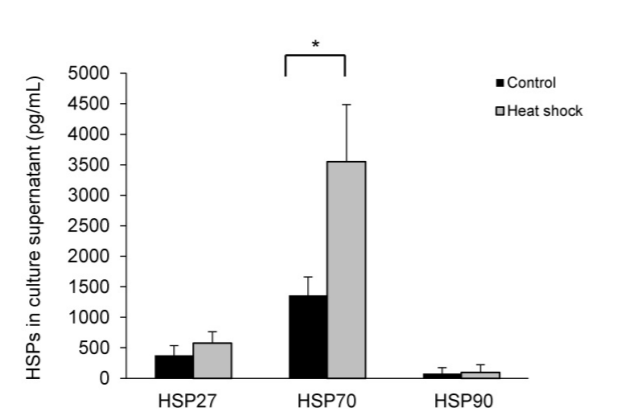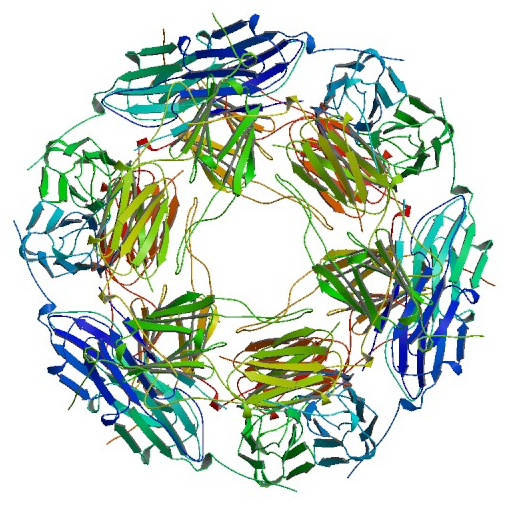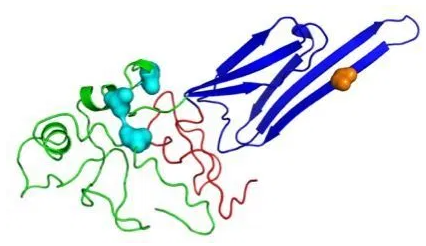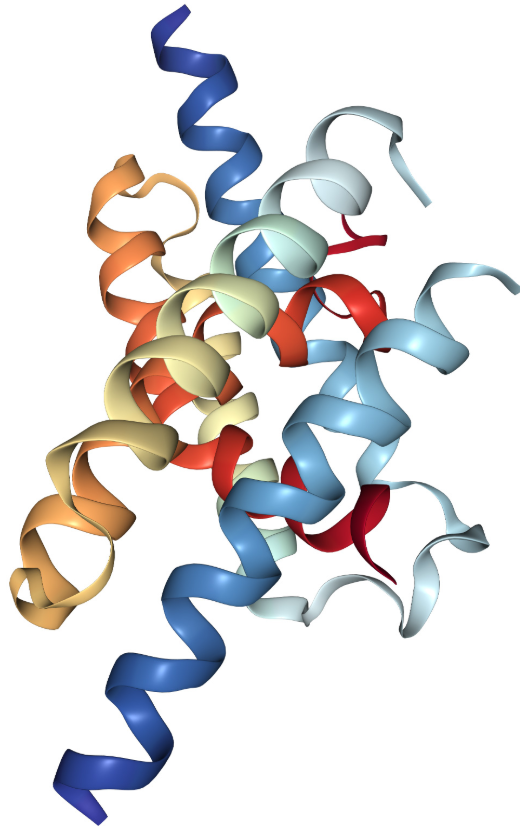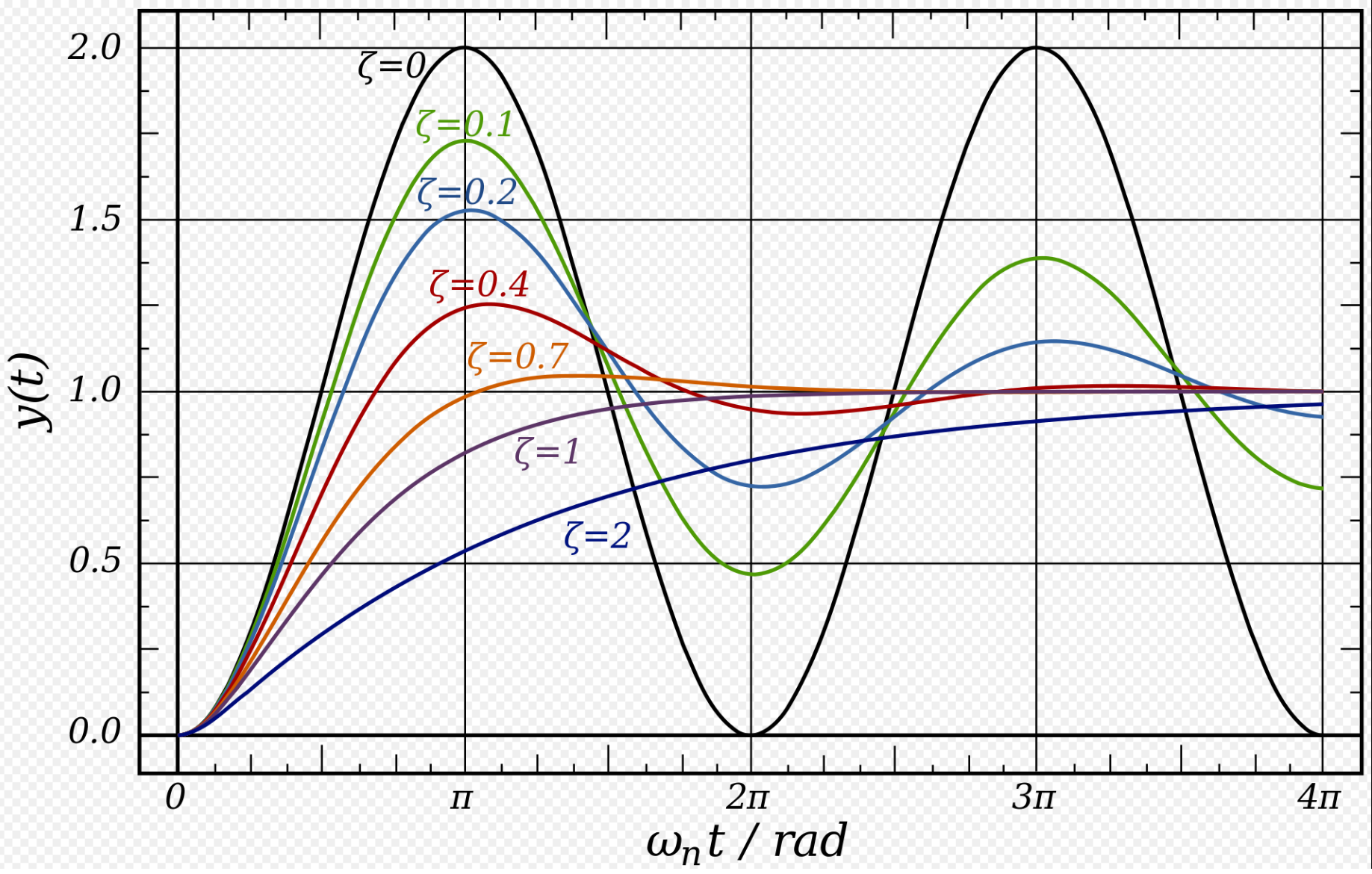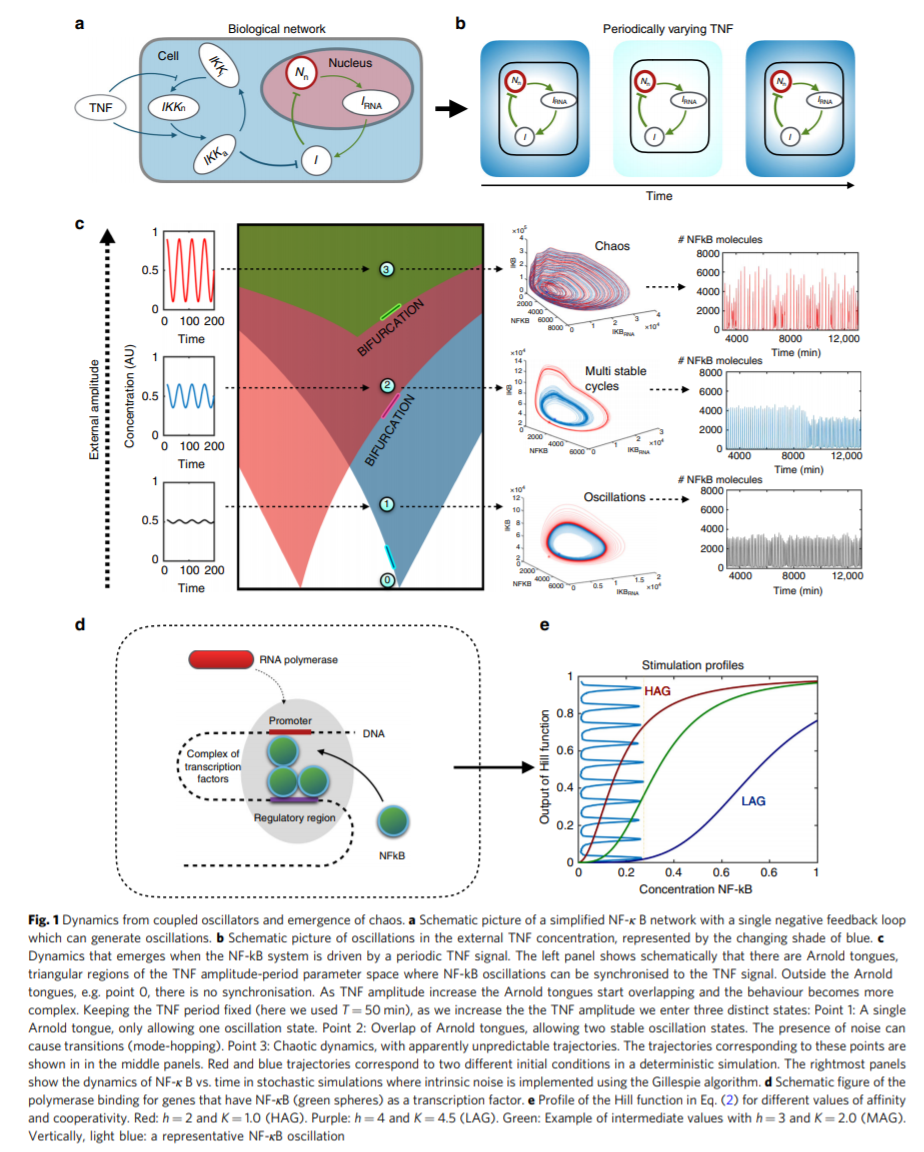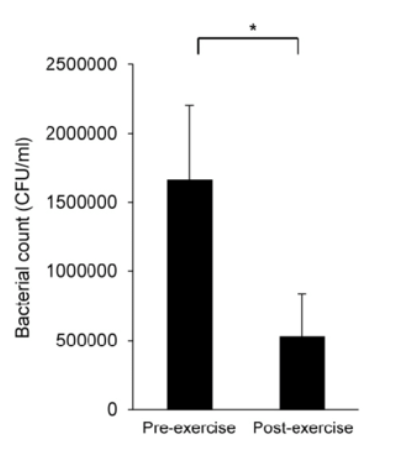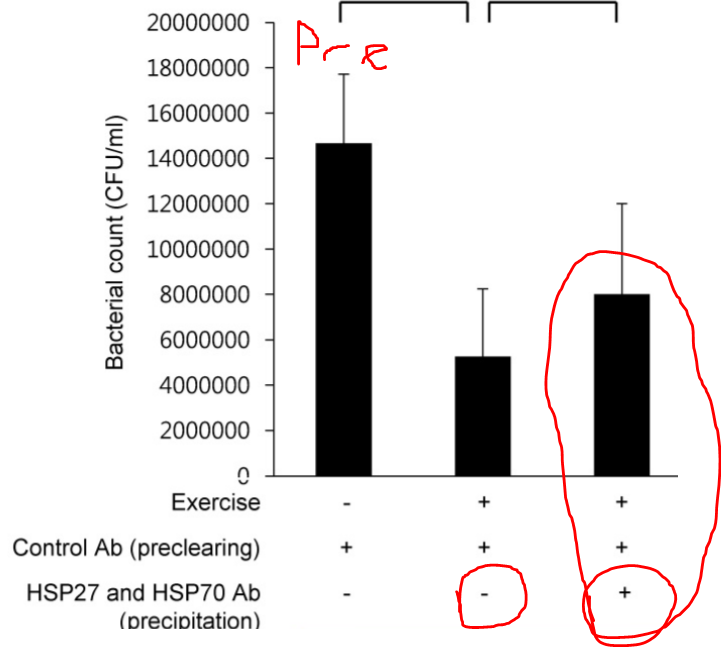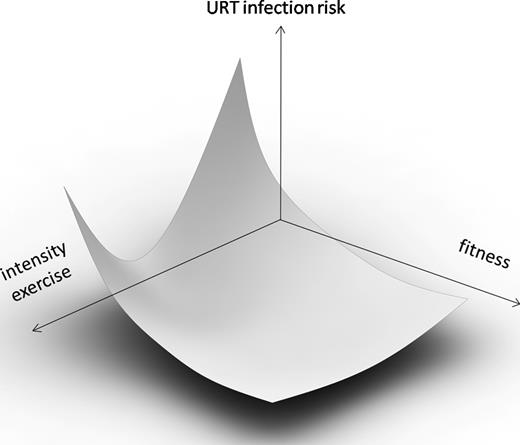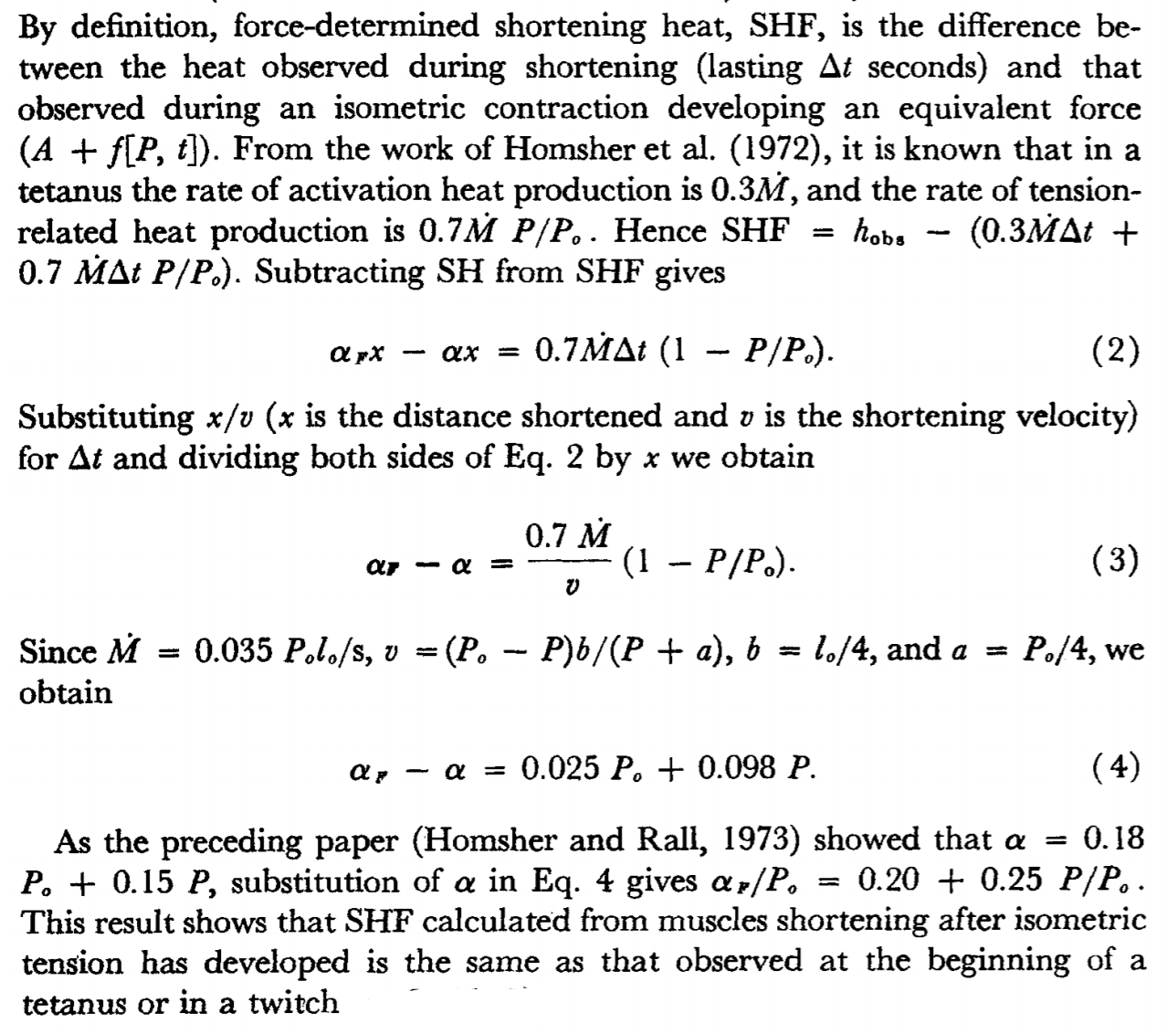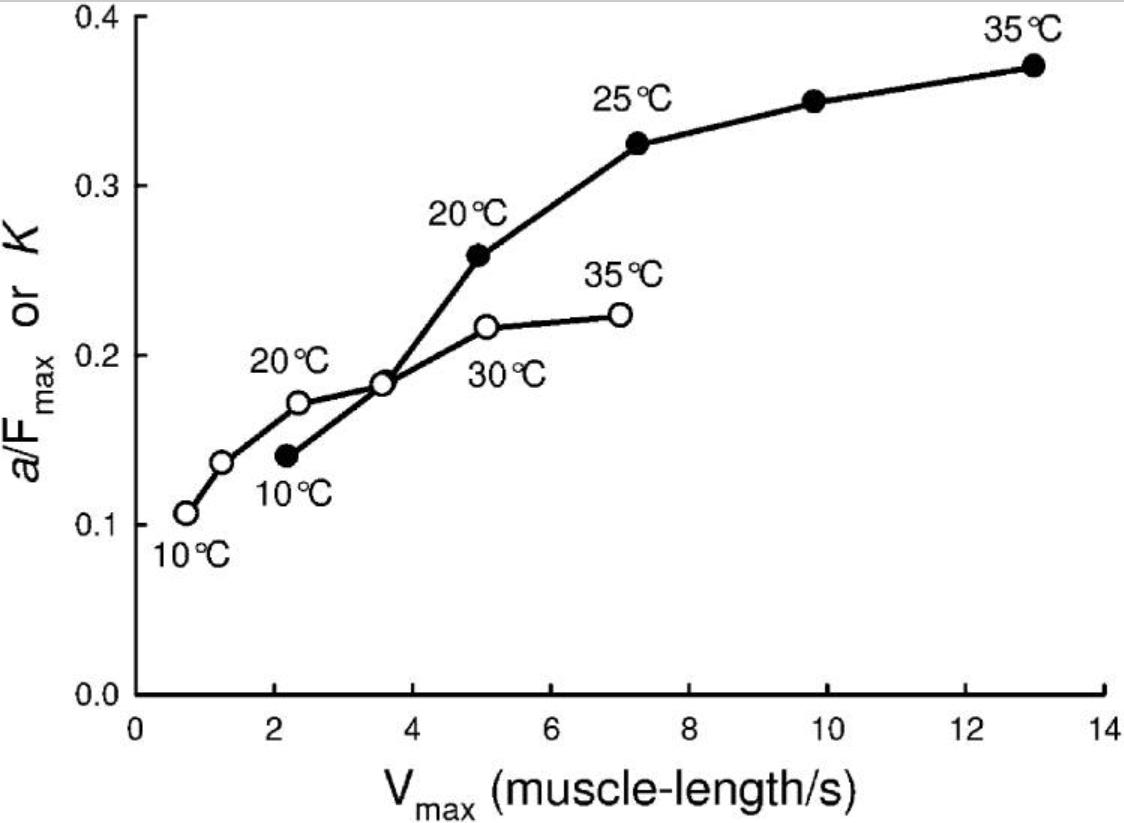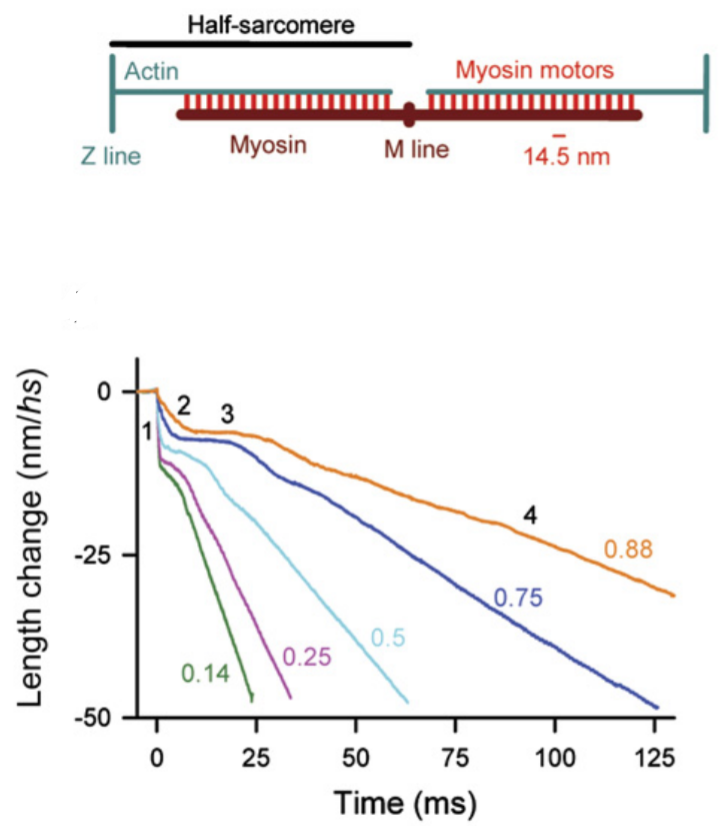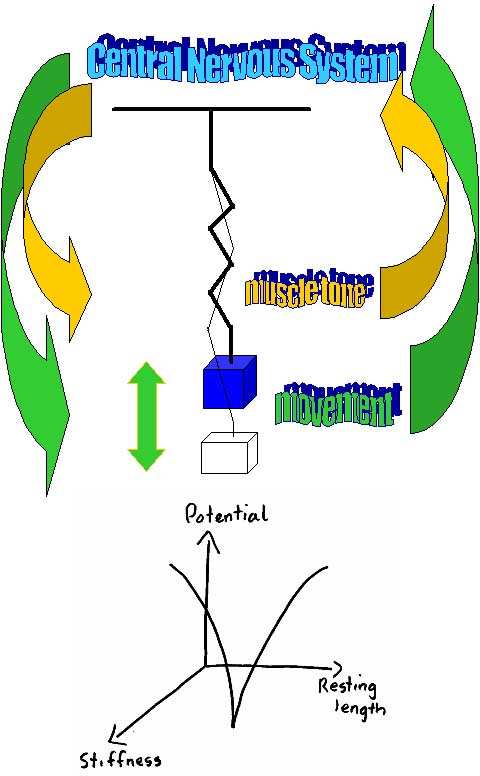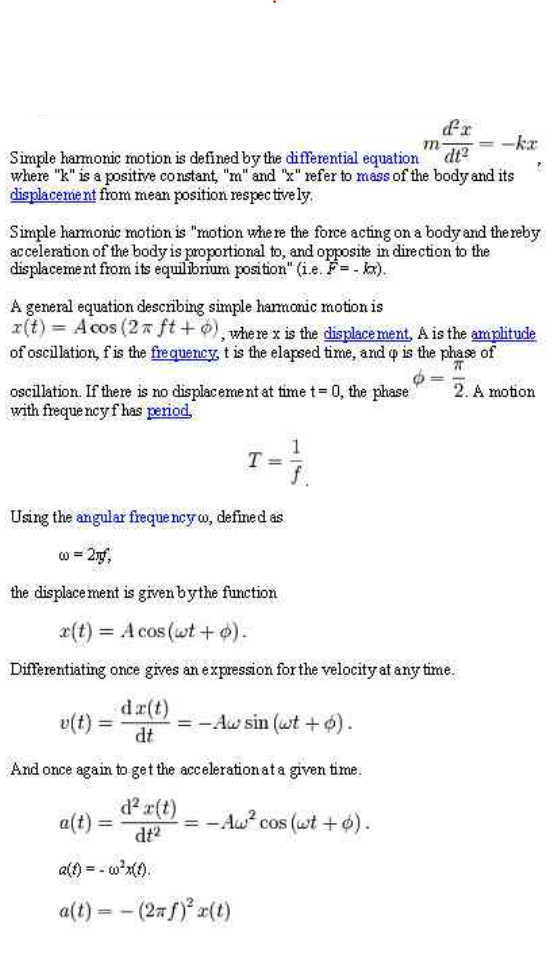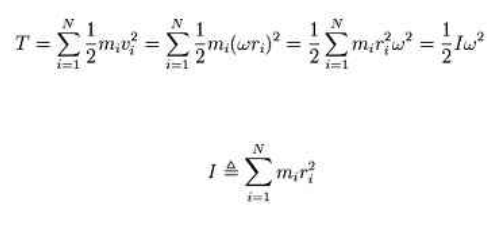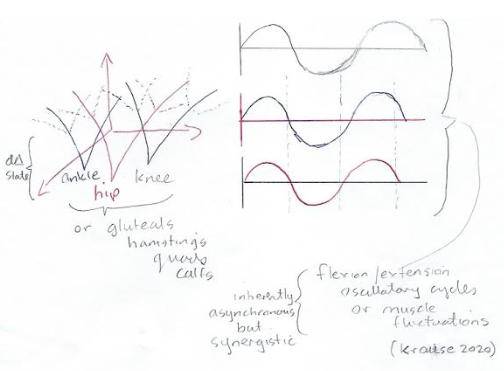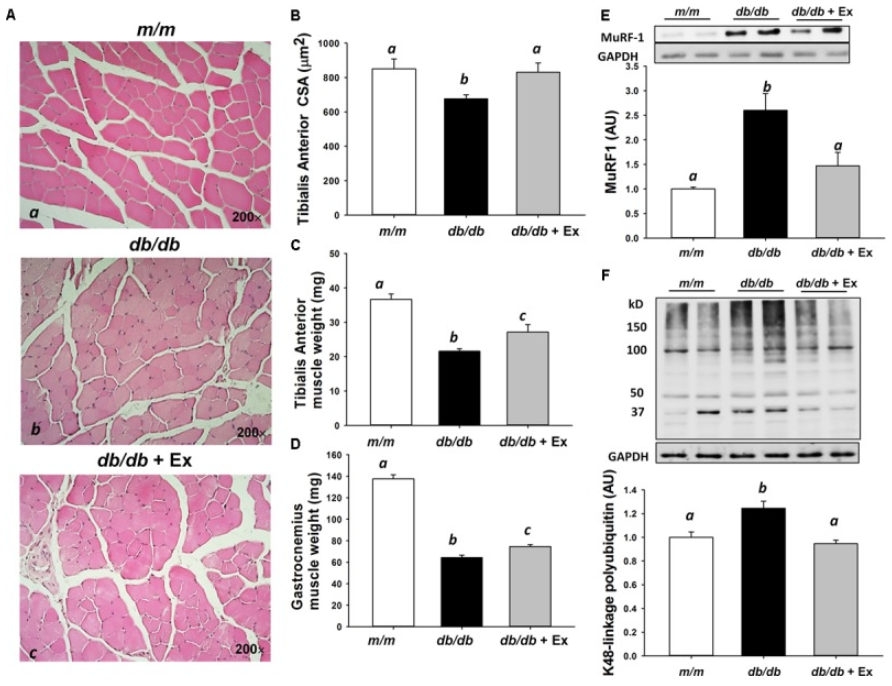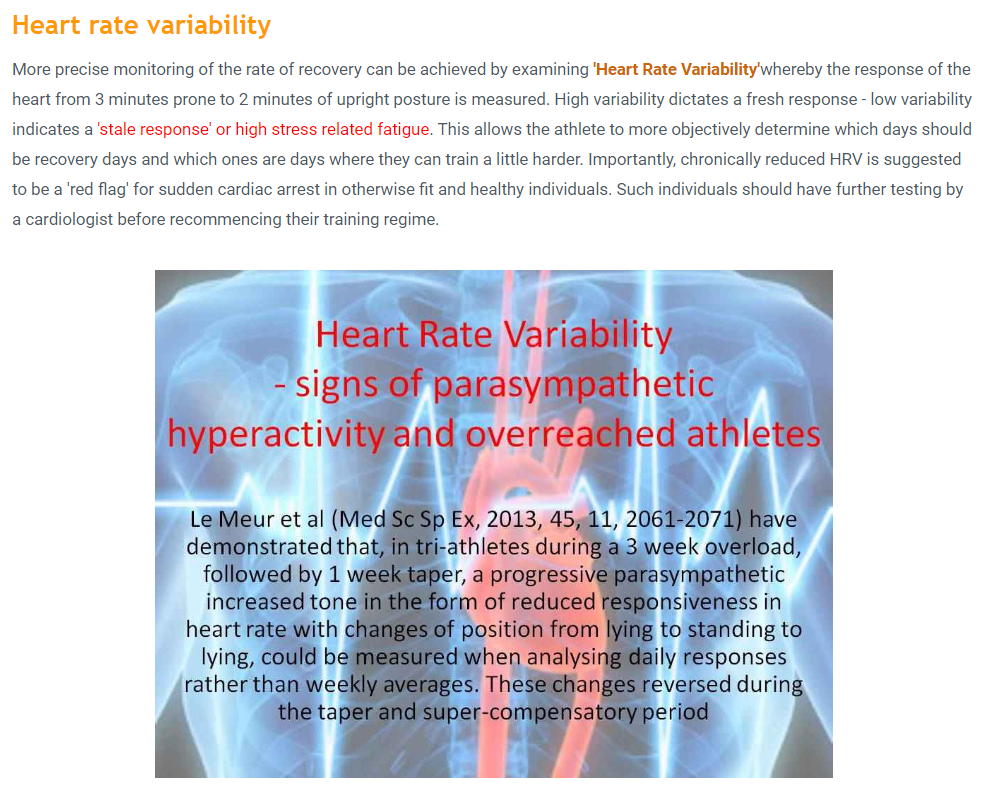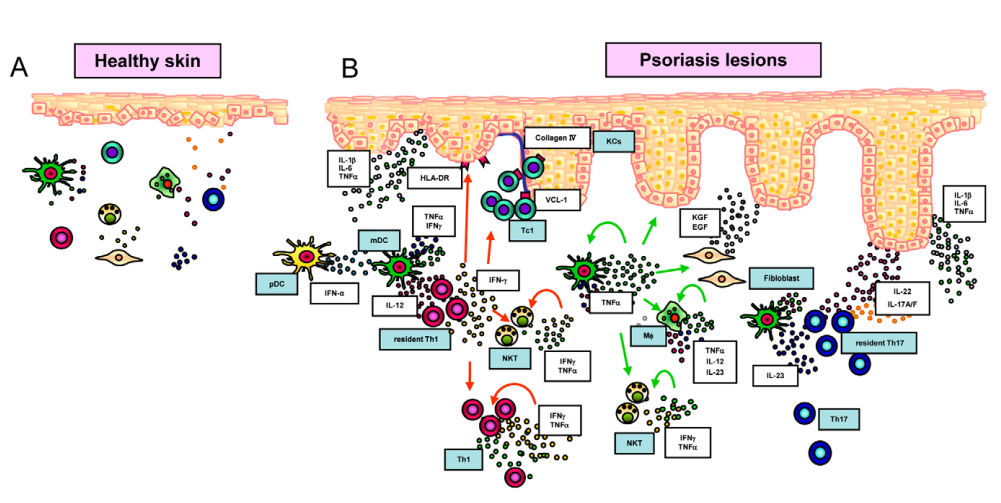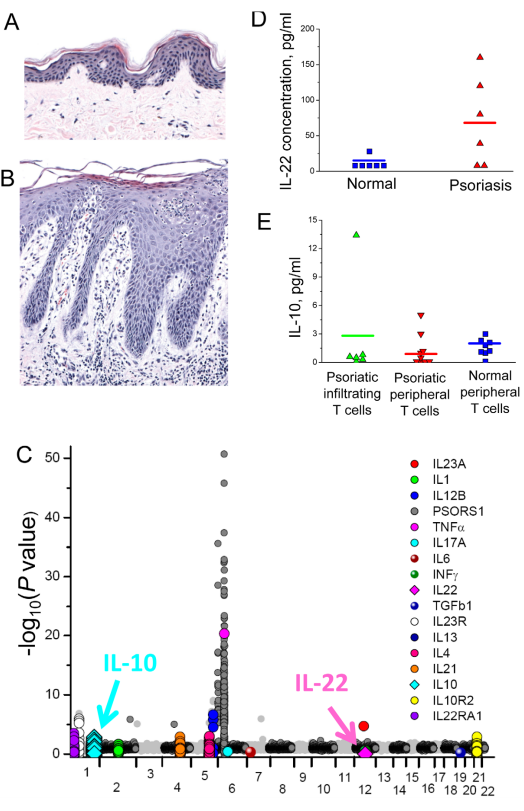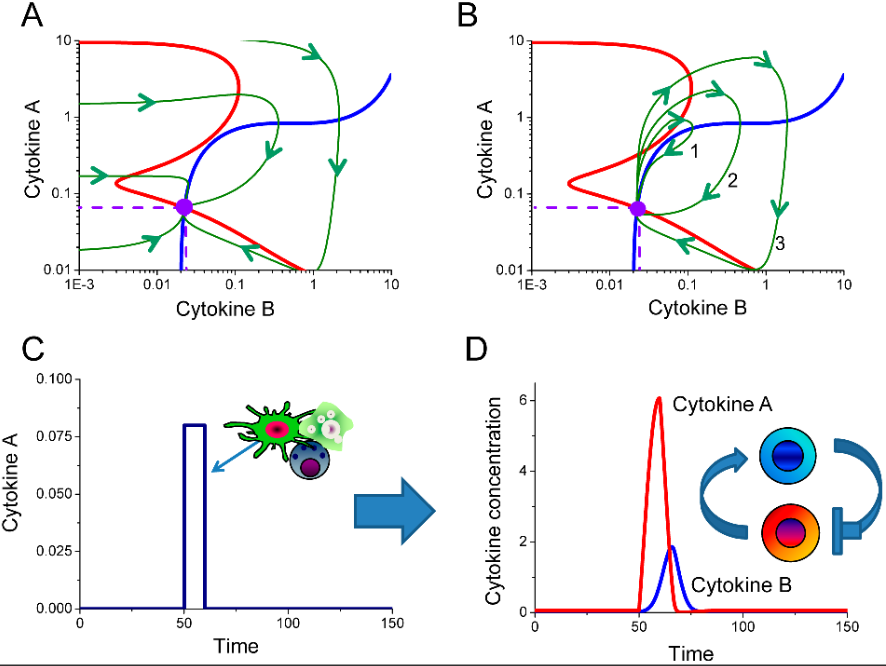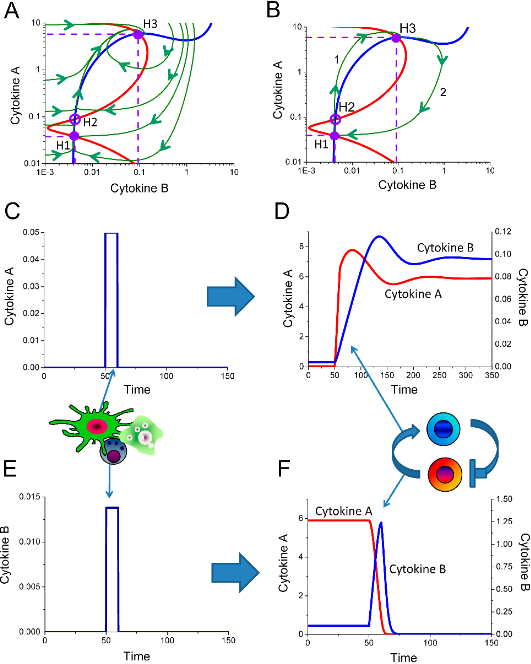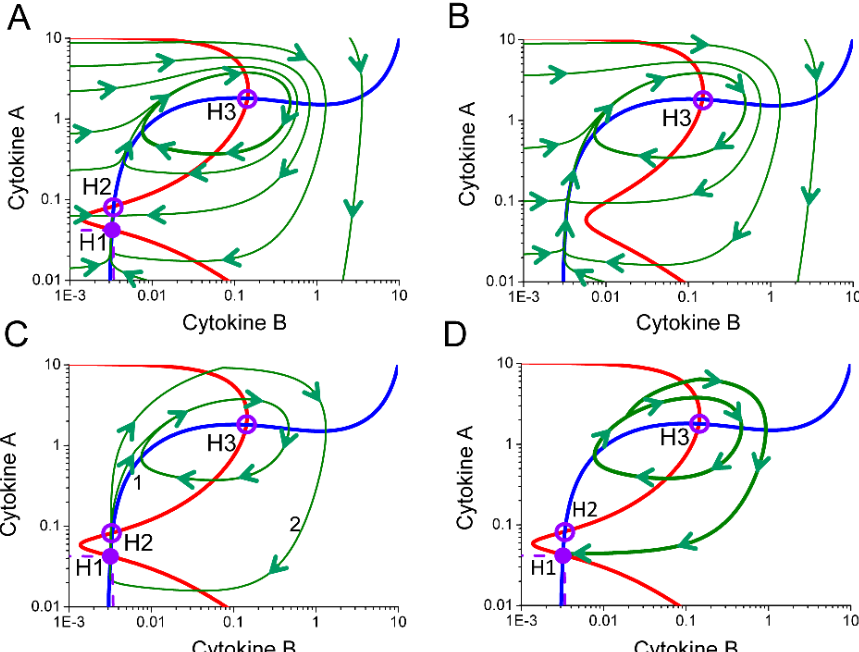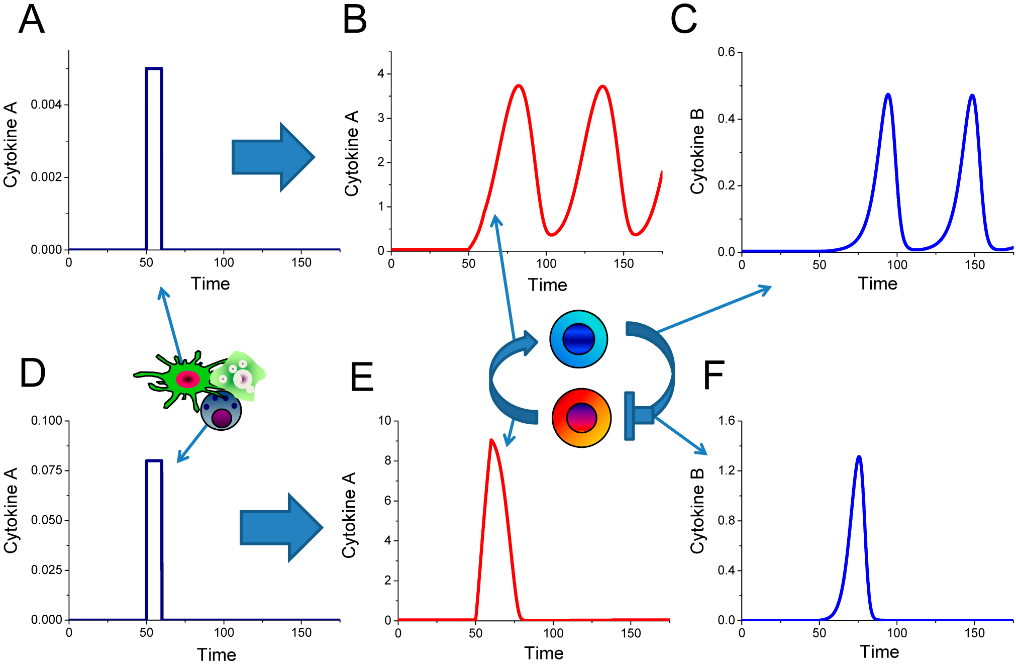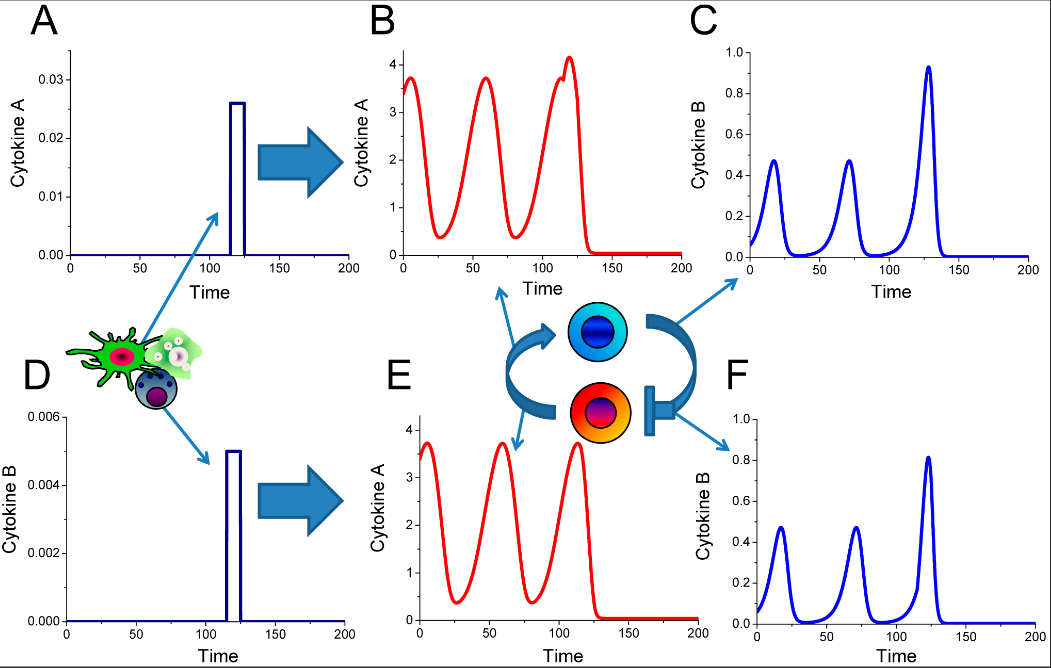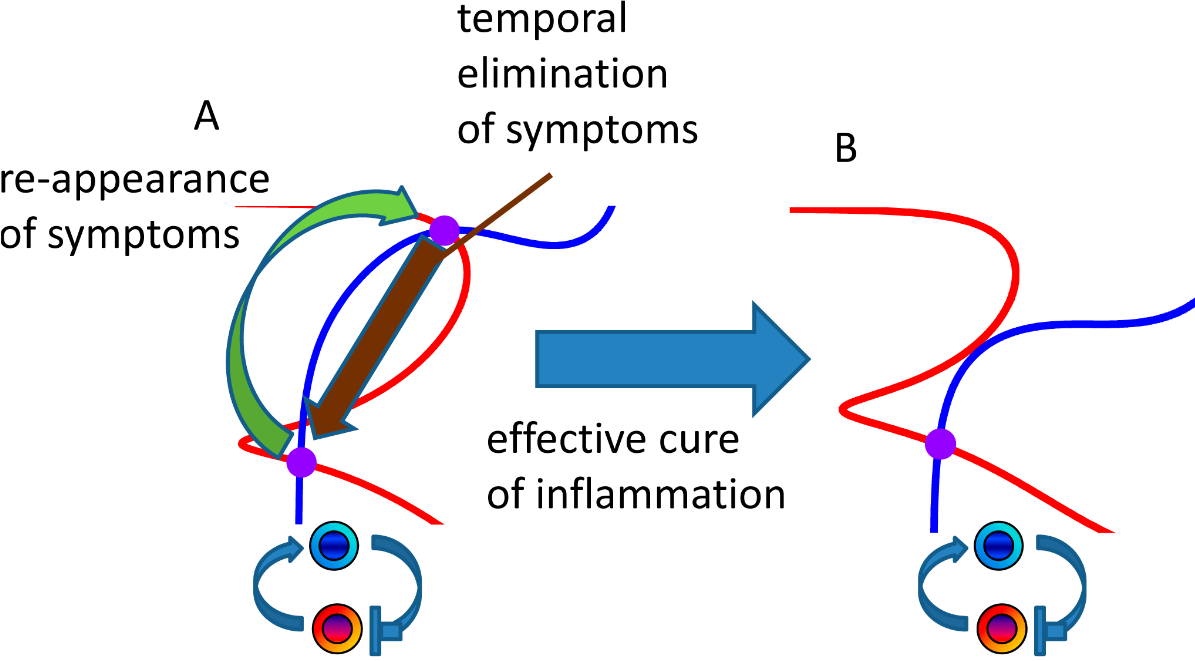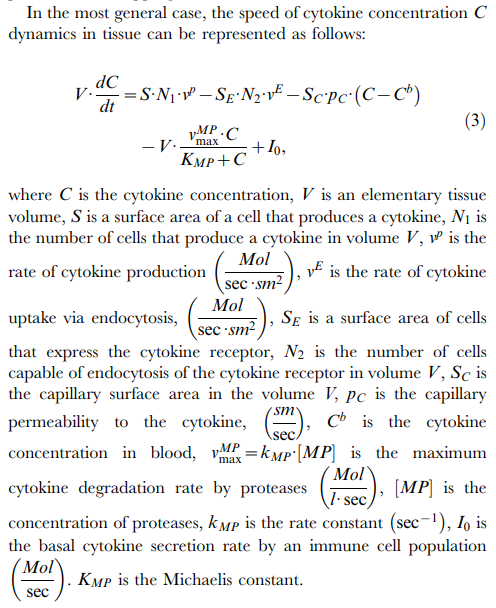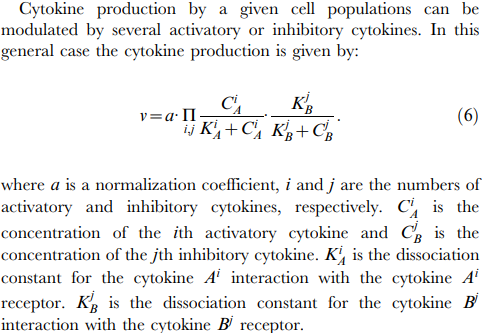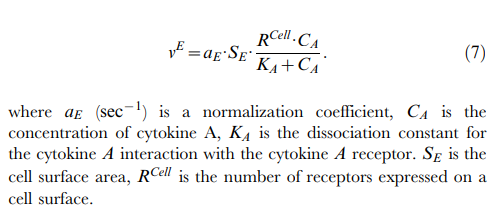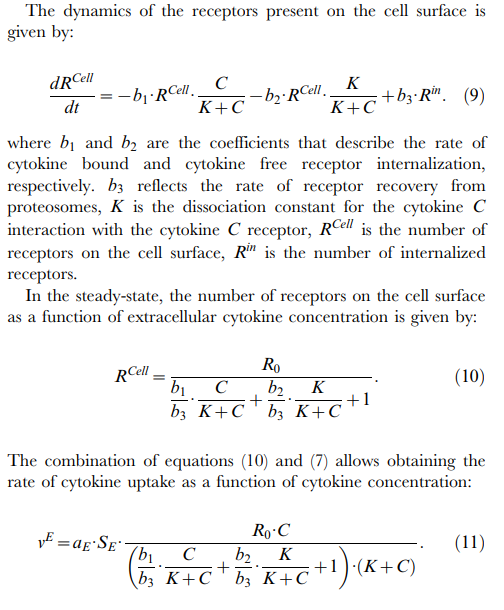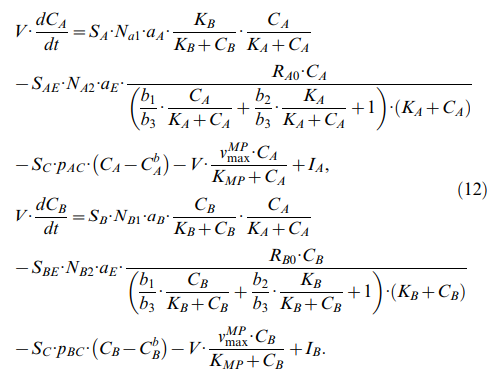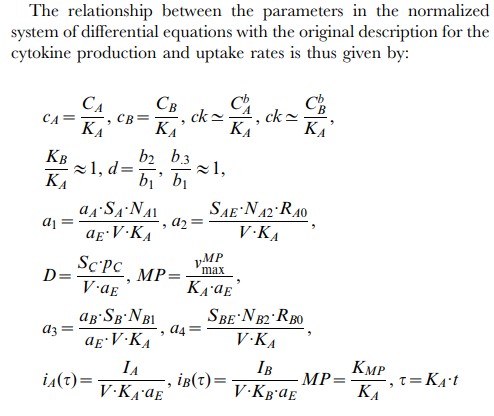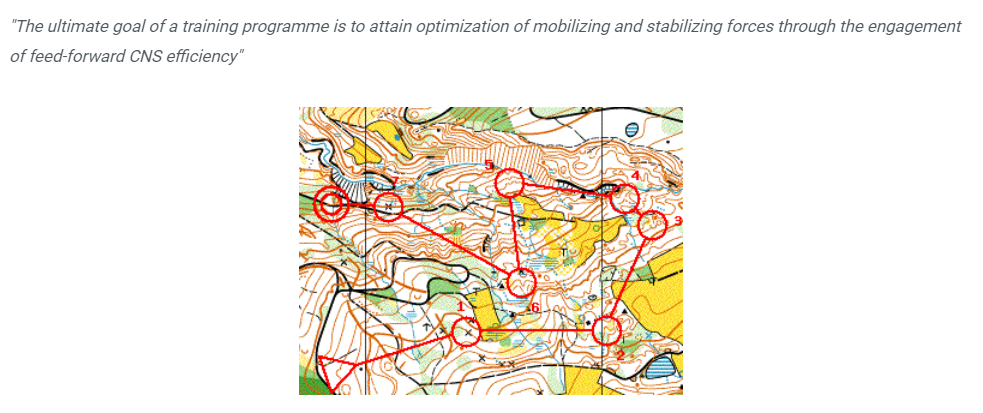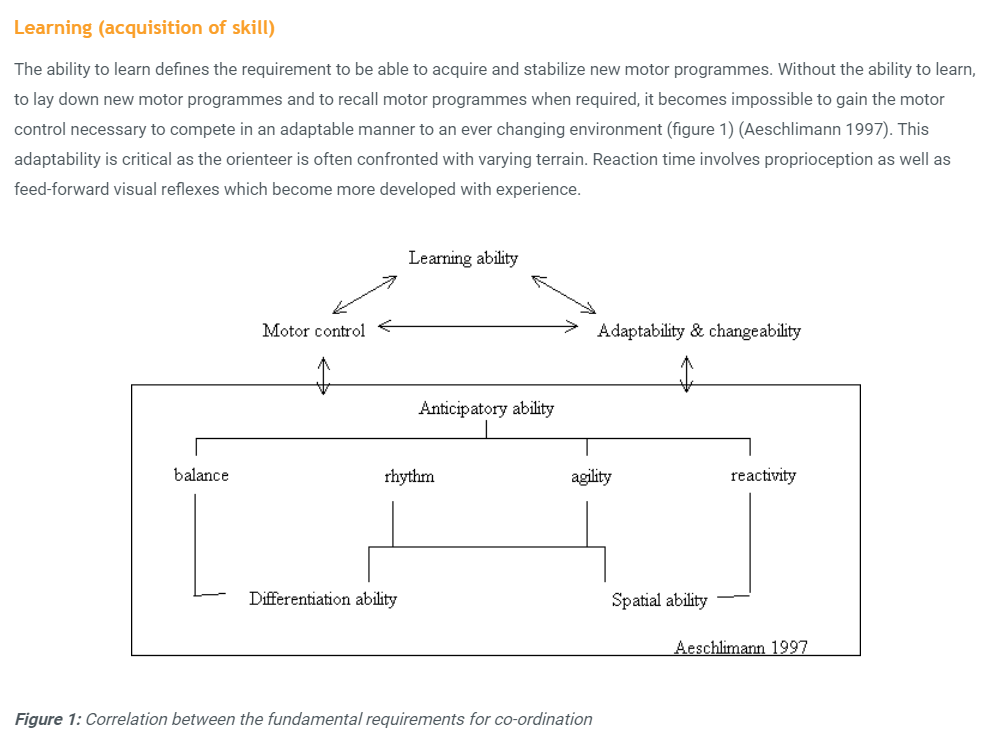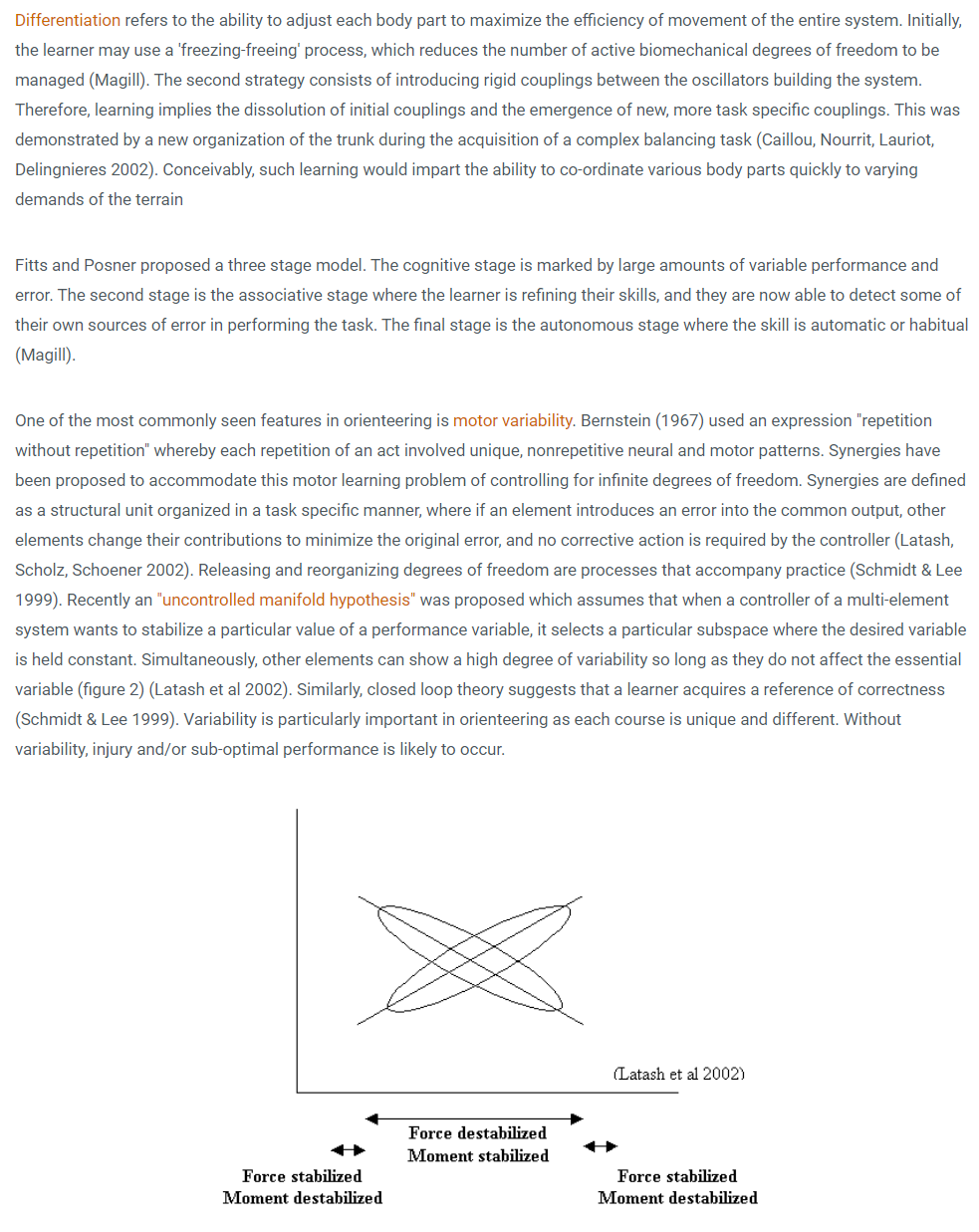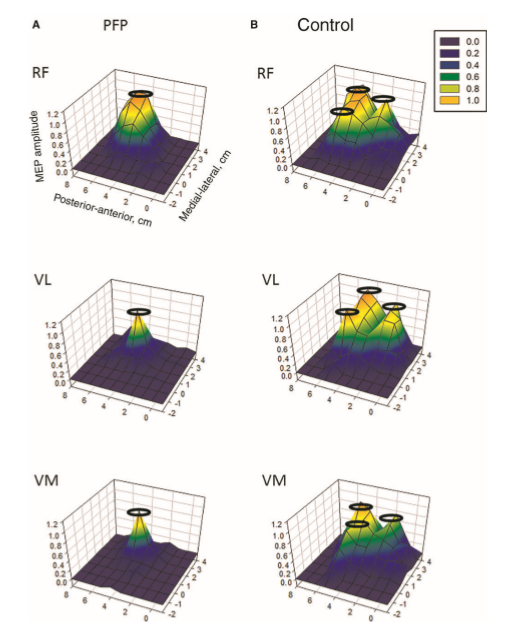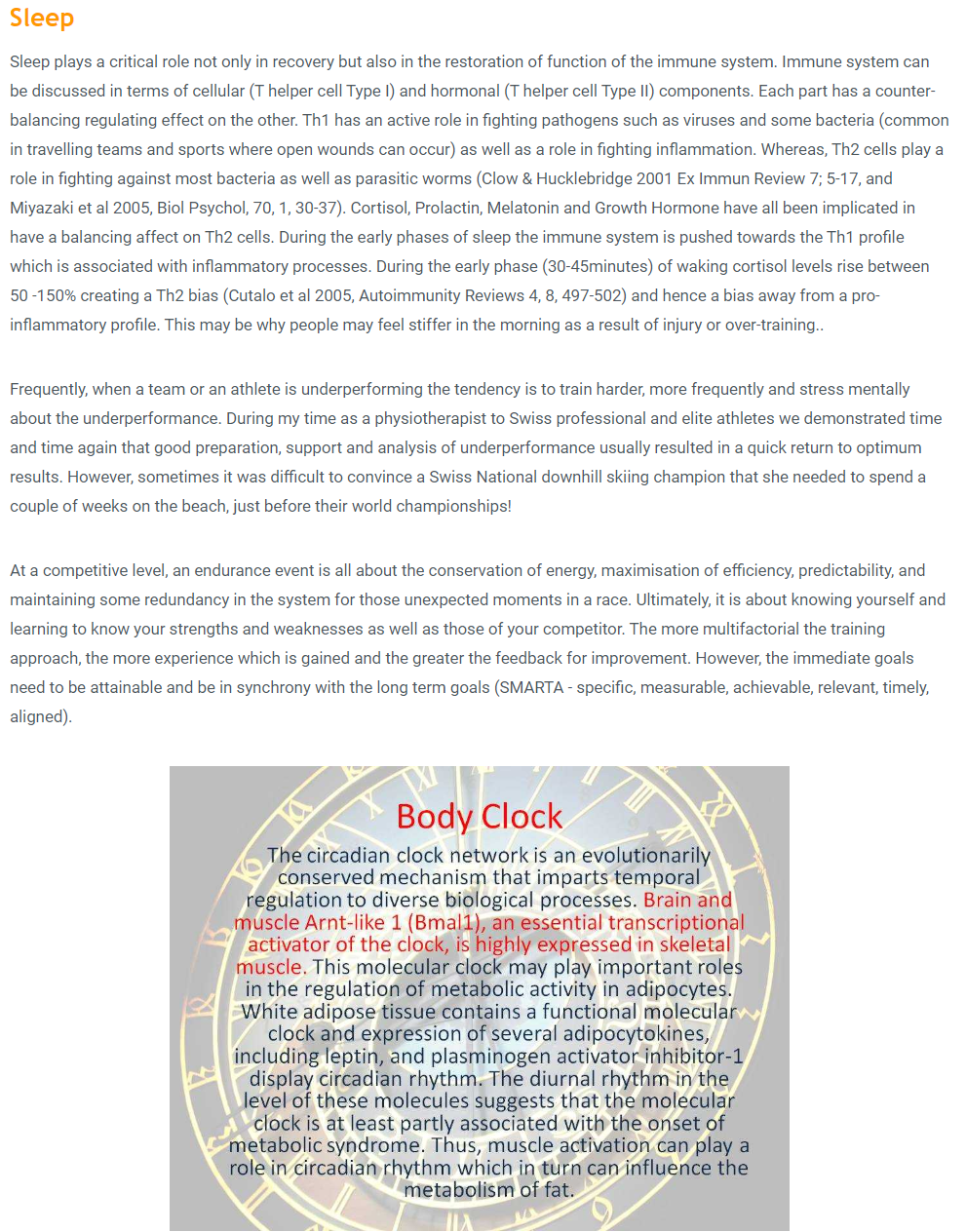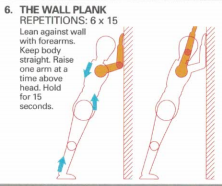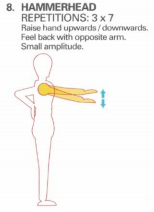Deterministic Chaos Theory, Exercise, Physiotherapy Reasoning and the Immune System
by Martin Krause
B.Appl.Sci. (Physiotherapy); M.Appl.Sci (Manipulative Physiotherapy), Post Grad Dip Hlth Sc (Exercise and Sports), Post Grad Cert Hlth Sc (Education)
Known Knowns, Known Unknowns, Unknown Unknowns - the latter is what we need to recognise
We were born from the chaotic fire of genesis. Laws of thermodynamics dictate our existence. Evolution of heat shock proteins (HSP) means that we are our immune system. Today, human multi-cellular life is still totally dependent on our unicellular ancestors and their componentry. Trillions of species and bacteria in the gut (flora) and skin alone, associated with immune substances, attest to the importance of unicellular life in the immune system. The abundance of energy species in the gut suggests a nexus with one of the organs most in need of energy, the skeletal muscle. Importantly, muscle cells have more mitochondria than most other cells, so they can readily produce work for movement. Consequently, muscles are an energy system and an immune endocrine organ. Notably, the development from unicellular to multi-cellular life needed movement. A commonality of cellular movement and macro-muscular movements exist.
Physiotherapeutic and training interventions must consider the health of the immune system and its ability to deploy and be re-deployed. Training should avoid becoming 'stale' by having enough variety (chaos) to create perturbations in the immune system which induce up and down regulation of immune componentry. Physiotherapy should be innovative and creative, whereby the physiotherapist additionally considers immune-cognitive aspects of pain and inflammation, when people seek physiotherapeutic intervention after/during a change in their training regime and/or commencement of unaccustomed exercise, or in the presence of immune compromise.
Index
Oscillatory systems
Many of the things an Australian trained Musculoskeletal Physiotherapist does has to do with oscillations. Everything from joint oscillations, therapeutic ultra-sound, to repetition in exercise to Whole Body Vibration (WBV) therapy involves an obvious form of oscillation. Other less obvious forms of oscillations occur within muscles, within whole body immune systems and across body musculoskeletal systems. The following argues that the expression of oscillations can determine the health and well being of a person beyond simplistic notions of biomechanics, pathology and repair.
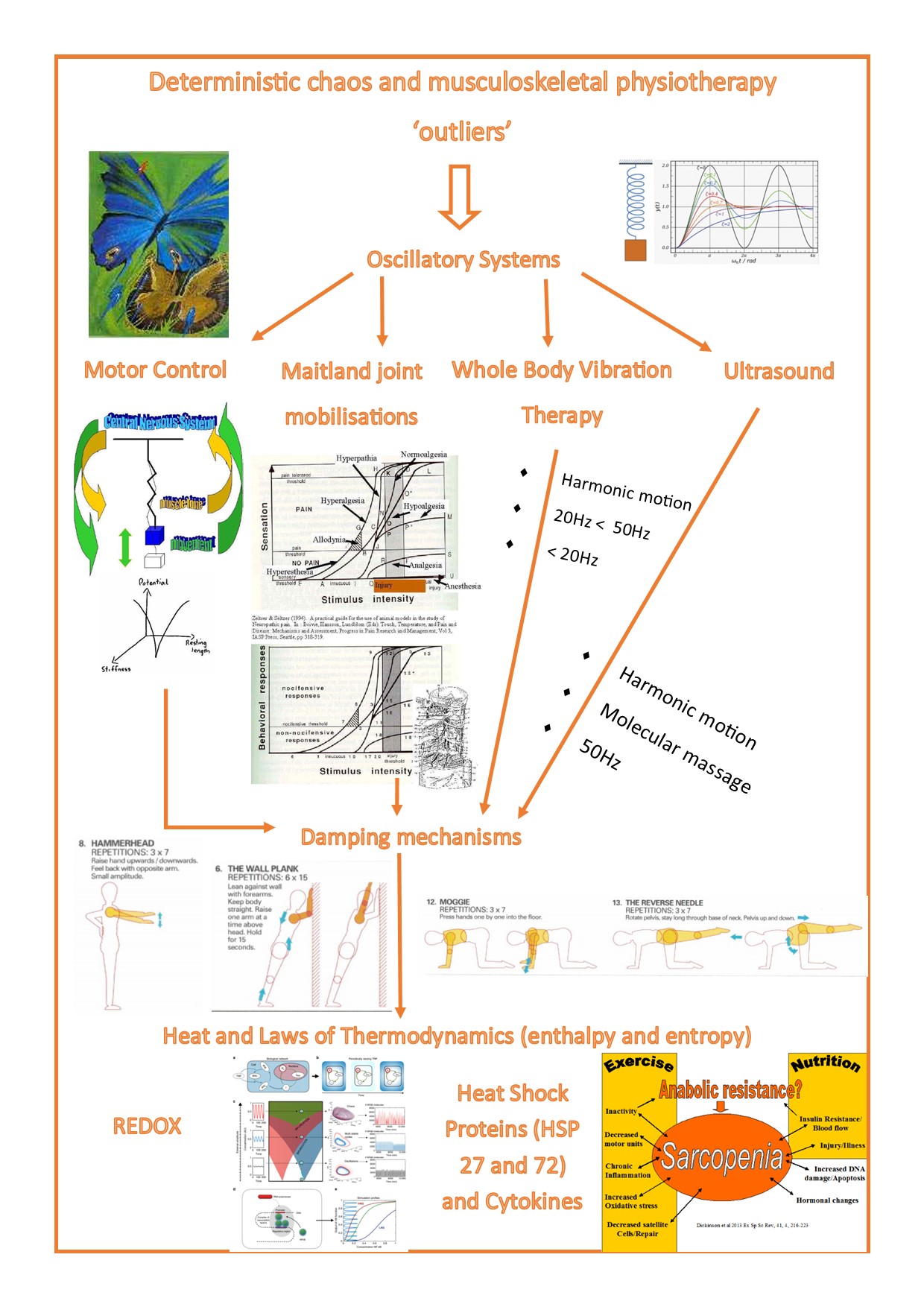
What is a 'stressor' and why is muscle considered an endocrine immune organ?
The sympathetic nervous system has traditionally been assigned the responsibility for the 'freeze, fight or flight' stress response. Regardless of mechanism, the call to action goes to muscles. Culturally, we generally consider a muscular person as the 'picture of health'. Yet, what resides and moves within muscle is as important as the work those muscles produce.

When we exercise, the body adapts to a stressor, which is calorific, metabolic, physiological, immune and psychological. Phylogenetically, heat shock proteins (HSP) evolved from uni-cellular to multi-cellular life, and 'exercise' (physical activity) was associated with survival skills, such as food acquisition and defence (self-preservation). Interestingly, those same mechanisms can be 'fine tuned' to improve the age of your immune system. If we can get or maintain muscle bulk, we can maintain a reservoir of protein for immune function. If we can maintain adaptive processes to mechanical trauma and inflammation, we have a fighting chance of using similar processes to launch an appropriate immune response, fight infection, prevent cell death (apoptosis) and muscle-organ failure (cachexia). What is the mechanism behind an 'appropriate' immune response? What sets the system in motion (perturbation) and what 'dampens' it? How do the laws of thermodynamics and conservation of energy apply? What is the predicted 'chaos' in the system and how do the immune and sympathetic nervous system act as oscillating 'manifold' for chaos to 'unfold' and 'refold'?
Stress and the General Adaptation Syndrome
The general adaptation syndrome (GAS) model of stress posits three stages to stress: alarm, resistance and exhaustion. In the alarm stage, the nervous system releases stress hormones to facilitate a freeze-fight-flight response. When a stressor is ongoing, like the COVID-19 pandemic, returning to homeostasis is more difficult.
In the second stage — resistance — the individual’s allostatic load ideally returns to baseline. But many people will not, especially in the prolonged stress of a pandemic. Physicians should consider that patients reporting symptom exacerbations (of pre-existing issues), during this time, may benefit from stress mitigation techniques, including:
- Diaphragmatic breathing
- Guided imagery
- Mindfulness
- Limiting media exposure
- Progressive muscle relaxation
- Physical activity
These techniques may include holistic approaches such as Yoga, Progressive Resistance Exercise (PRE), and endurance training.
In the third stage, called exhaustion, people become overwhelmed from the ongoing stressor. This is where prolonged dysfunction can occur, and in which identifying a coping strategy becomes more difficult for the person. One would hope that intervention occurs during the second stage, when acceptance of behavioural modification is more likely. Furthermore, it is hoped that the general population remains active for life, even in the post COVID-19 era. The following is an overview of why exercise is so important, for the immune system, by using a 'deterministic chaos' theoretical approach to protect against chaos.
Nasal Heat Shock Proteins
Heat Shock Proteins (HSP) are found in virtually all living organisms, from bacteria to humans. They are a class of proteins which react both to heat, cold and oxidative stress. Since unicellular life, these small protein chains, have developed with evolution, and despite the complexity of multi-cellular life, they still have an important fundamental role to play in human survival. Incredibly, this, evolution, means that complex multi-cellular life, can still recognise their unicellular ancestor counterparts! Frequent confrontation of the host (human) immune system, with conserved regions of HSP, which are also shared by various microbial pathogens, can potentiate antimicrobial immunity. However, long-term confrontation of the immune system with HSP antigens, which are similar in the host and invaders, may convert the immune response against these host antigens and promote autoimmune disease. Since COVID-19 is thought to have an 'auto-immune' mechanism and has a profound impact on the airways, in symptomatic individuals, the following is an example of nasal mucosa HSP responding to heat stress.
Nasal HSP's 1 hour after heat shock stimuli (Min et al 2020 International journal of medical sciences 17(5):640-646)
Heat Shock Protein - what they look like
Small HSP (mycobacterium) by Kim, K.K., Kim, R., Kim, S.H.(1998) Nature 394: 595-599 PubMed: 9707123 DOI: 10.1038/29106
HSP 27 by Michael H. Chiu, Chunhua Shi, Matthew Rosin, Zarah Batulan, Edward R. O’Brien (2019)
HSP 72 by Osipiuk, J., Gu, M., Mihelic, M., Orton, K., Morimoto, R.I., Joachimiak, A., Midwest Center for Structural Genomics (MCSG) 2010
Damping ratio
To understand energy systems we must also understand 'oscillation control' by examining 'simple harmonic motion' (SHM) in terms of linear dynamics (kinetic {KE} and potential energy {PE}) of a mass spring and it's 'damping ratio'. Simply stated, if you hang a mass off a spring and pull down on it and let it go, in the absence of plastic deformation, the mass will 'overshoot' back and forth several times before resuming its original position. That is, it experiences a restoring force proportional to its displacement. Depending on the weight of the mass and the thickness of the spring, the non-optimised system may experience overdamping or underdamping (Wikipedia).

A lower damping ratio implies a lower decay rate, and so very underdamped systems oscillate for long times. Importantly, this model applies to energy systems and hence obeys the law of thermodynamics.
Traditionally, health was considered in terms of predictability. Consistent heart rate was considered good, irregular heart rate as bad. Unfortunately, it isn't quite so simple. In fact in terms of training concepts, low resting heart rate and how quickly the heart rate can oscillate with demand is used to diagnose if an athlete has become 'stale' or said in another way is in a state of 'over-training' or enhance physiological and/or psychological stress. Hence, in the light of these confounding 'beliefs', a more complex system (model) needs to be employed, involving random perturbations of an oscillatory system, if random 'outliers' are to be incorporated into our understanding of health.
Simplistic versions of sympathetic vs parasympathetic tone balancing the autonomic nervous system do not explain complexity. It is difficult to reconcile that the parasympathetic vagus nerve controls all thoracic and abdominal organ function and alone counters all 'chaos' of sympathetic nervous system activity, where the latter activity has a multitude of redundancy and interacts in multiple dimensions with an interlaced muscle-gut immune system complex. The sympathetic nervous system is the tight rope, the trapeze artist, the dancer, the orchestra, forged from the fire of genesis and the evolution of heat shock proteins. To understand the development of the muscle-gut immune system complex we must understand its uni-cellular componentry.
Using Alexandr Lyapunov theory of stability, in non-linear dynamic systems, the oscillations near the point of origin (equilibrium) are determined by exponential decay. That is, if the solutions that start out near an equilibrium point Xe, stay near Xe forever, then Xe is Lyapunov stable. More strongly, if Xe is Lyapunov stable and all solutions that start out near Xe converge to Xe, then Xe is asymptotically stable (As an illustration, suppose that we are interested in the properties of a function f(n) as n becomes very large.
If f(n) = n2 + 3n, then as n increases, the term 3n becomes insignificant compared to n2. The function f(n) is said to be "asymptotically equivalent to n2, as n → ∞". This is often written symbolically as f(n) ~ n2, which is read as "f(n) is asymptotic to n2 "). The notion of exponential stability guarantees a minimal rate of decay, i.e., an estimate of how quickly the solutions converge. The idea of Lyapunov stability can be extended to infinite-dimensional manifolds (chaos theory), where it is known as structural stability (in mathematics, this is a fundamental property of a dynamical system which means that the qualitative behaviour of the trajectories is unaffected by small perturbations), which, in this case concerns the behaviour of different but "nearby" solutions to differential equations. Later, this will be applied, not only to EMG analysis of muscle activity, but also to cytokine interactions, from nearby solutions
Sympathetic Nervous System and Deterministic Chaos
The sympathetic nervous system (SNS) has, as previously stated, traditionally been associated with the freeze-fight-flight response - you fight the lion or run from the lion. A reaction to a 'danger signal' (Matzinger). However, there is a lot more to it. Never-the-less, this example describes a bi-directional nervous system, one which is driven by 'motor curiosity' and wanting to arouse sensory stimuli, whilst the other is reacting to 'sensory stimuli'. Frequently, these moments are described as an 'adrenalin rush' associated with fear, excitement and tremor. The greater the chaos and tremor in the system, the greater the perturbations and the greater the damping needed in the system. Ideally, what drives the system also dampens it. Otherwise, at 'extremely high frequencies' we would only 'freeze'.
Clinically, some people believe, that right hemisphere dominant tremor tend to have a higher component of irrationality and hypervigilance, whereas left hemisphere dominant tremor may have a more rational generator of tremor. However, this simplification ignores cross-hemispheric communication systems. It is important to note that in health systems, it's the odd asynchronicity in the system which attests to it's health. That is the chaos, 'outlier', in the system. This control by chaos is relative, it's a ratio, it's a magnification, it defines itself and it 'dampens' itself. Furthermore, the outliers define what it isn't! Hence, 'deterministic chaos'. When looking at 'fractals', you can have an infinite length in a finite space. Bifurcation upon bifurcations, getting smaller and smaller ad-infinitum but within a finite space! For example, the length of the coastline of the United Kingdom is known to an error margin of + 10-20% depending on how closely one looks at it (ie at what magnification ratio or scale).
As we examine the movement system, we frequently see tremor at each end of the spectrum. With fine delicate movements and with movements which require a lot of force we see a tremor. In scenarios of many repetitions and fatigued muscles, they gradually cramp up and lose their oscillatory fidelity. This can be considered as an energy or metabolic constraint. In novel tasks, we see more rigidity in movements, due to increased muscular activity, resulting in reduced freedom of movement. In the latter scenario, cognitive constraints arise at a conscious and sub-conscious level, where learning becomes important to improve the degrees of freedom, reduce the amount of muscle tension and hence lower the rigidity in the system.
Are degrees of freedom, and hence variability, important for the immune system? A system dependent upon ratios of heat shock proteins, pro and anti inflammatory cytokines, immuno-globulins, lymphocytes, neuropeptides, short fatty acid chains, metabolism, descending noradrenergic and serotonergic pathways and even a balance between 'innate' and learned 'adaptive' immune responses, occurring within and acting upon, the largest endocrine organ of the immune system, skeletal muscle. Is it a coincidence that the spinal cord looks like a butterfly?

Butterfly effect and chaos theory - from Wikipedia
In chaos theory, the butterfly effect is the sensitive dependence on initial conditions in which a small change in one state of a deterministic nonlinear system can result in large differences in a later state.
The term, closely associated with the work of Edward Lorenz, is derived from the metaphorical example of the details of a tornado (the exact time of formation, the exact path taken) being influenced by minor perturbations such as the flapping of the wings of a distant butterfly several weeks earlier. Lorenz discovered the effect when he observed that runs of his weather model with initial condition data that was rounded in a seemingly inconsequential manner would fail to reproduce the results of runs with the unrounded initial condition data. A very small change in initial conditions had created a significantly different outcome.
The idea that small causes may have large effects in general, and in weather specifically, was earlier recognized by French mathematician and engineer Henri Poincaré and American mathematician and philosopher Norbert Wiener. Edward Lorenz's work placed the concept of instability of the Earth's atmosphere onto a quantitative base and linked the concept of instability to the properties of large classes of dynamic systems which are undergoing nonlinear dynamics and deterministic chaos.
Chaos theory and physiology
What happens if the 'flapping wings of the butterfly' dampen or calm 'the tornado on the other side of the planet'?
In terms of the human organism, chaos theory refers to 'deterministic chaos'. This means that if one knows the initial conditions (state) of the system exactly, then the dynamical trajectory will be the same every time it is initiated in that condition (state). If, however, two states are 'infinitesimally' apart, then the trajectories are such that it makes it impossible to predict the future dynamics (chaos).
Oscillatory dynamics is the prerequisite for many complex phenomena and the onset of chaotic dynamics. Chaos refers to complex, apparently unpredictable, dynamics that even simple deterministic dynamical systems can produce. A universal way to achieve chaos is by driving a nonlinear oscillator by an external periodic signal. When the external driving signal has low amplitude oscillations, it can entrain or synchronise the nonlinear oscillator. As the amplitude of oscillations is increased, the range of frequencies for which it can entrain becomes larger—these expanding synchronisation regions of the external amplitude–frequency parameter space are called Arnold tongues. Such entrainment/synchronisation has been observed in many different physical systems, from fluids to quantum mechanical devices, and now also in biological processes, such as cell cycles, and gene (transcription) regulatory dynamics in synthetic populations.
The dynamics gets even more complex as the amplitude of the external driving signal increases further. First, Arnold tongues start overlapping, which means the nonlinear oscillator can exist in more than one entrained state with different frequencies (termed modes), and even small amounts of intrinsic or extrinsic noise can cause it to hop between these modes. Such mode-hopping has been observed in immune system (p53 tumour suppressor) and in gene transcription of the oscillatory NF-κB system, when driven by a periodically varying Tumour Necrosis Factor (TNF) signal of sufficiently high amplitude. When the external amplitude is increased even further, then chaotic dynamics is predicted (Heltberg et al 2019 Nat Commun 10, 71 https://www.nature.com/articles/s41467-018-07932-1.pdf)
Shareable link https://rdcu.be/b4sU7 Nat Commun 10, 71 (2019).
The significance of this is, that NF-κB is a major transcription factor which regulates genes responsible for both the innate and adaptive immune response. Upon activation of either the T- or B-cell receptor, NF-κB becomes activated through distinct signalling components. TNF is a major inflammatory cytokine player, found in skeletal muscle (MSK), produced by macrophages/monocytes during acute inflammation and is responsible for a diverse range of signalling events within cells, leading to necrosis or apoptosis. The protein is also important for resistance to infection and cancers. Furthermore, other immune ratios or interactions, based on maths and physics, are predicted, which will hopefully lead to a better understanding of why physiotherapists should encourage people to exercise muscle as a vaccine for the immune system. This discussion will include interactions between
- Interleukin IL-6 (pro inflammatory) driving IL-10 (anti-inflammatory)
- t-cell CD4+ : CD8+ ratio,
- HSP 27 and HSP72
- HSP 10 and HSP 60
- HSP 60 and HSP 70
- HSP 90
as well as examining the gut biome and muscle - brain axis in terms of energy, resources and game theory.
The following dissertation will consider cytokines (inflammatory substances), platelets and HSP in relation to muscle as an endocrine organ of the immune system and examine the link with the gut biome, and in particular, the energy species within the gut, as it relates to the immune system, but also as those energy species relate to movement adaptation, within the musculoskeletal system. "We are what we eat" and "healthy mind healthy body" are common sayings which will become abundantly clearer when examining the gut-brain-muscle axis. Chaos theory as it relates to ratios, synchronous to asynchronous periodicities, and magnification of movement and inflammatory markers in response to variable 'healthy' physical demands are postulated to act as a 'muscle - immune shock absorber' when confronted by pathogens.
Infection - a bimodal HSP reaction of host and pathogen
When entering the host from the environment, a microbial pathogen is confronted by several changes, some of which are highly stressful. These include alterations in temperature, pH, and pO2. Moreover, the pathogen is exposed to natural host resistance mechanisms such as phagocytosis by professional phagocytes. Once engulfed by phagocytes, the pathogen is confronted with reactive oxygen and nitrogen intermediates, attack by lysosomal enzymes, and depletion of Fe2+. To protect itself against the host, the pathogen activates various evasion mechanisms including its own HSP synthesis.
Infection is therefore a bimodal process determined by the host and pathogen. During infection, the pathogen as well as the host increase their HSP production. Induction of host HSP synthesis in response to an encounter with a pathogen has at least two major causes. First, infected macrophages are confronted with antimicrobial mechanisms which they have activated themselves during infection. Efficient protection against their own effector molecules (e.g., reactive radicals) becomes vital for macrophage survival. Second, once inside a phagocyte, many microbes, especially those which persist in the host, interfere with intracellular host cell metabolism. Not surprisingly, many of these pathogens are potent inducers of HSP synthesis in mammalian cells (see Ulrich Zügel, Stefan H. E. Kaufmann (2019) https://cmr.asm.org/content/12/1/19 DOI: 10.1128/CMR.12.1.19).
They say, 'in life we never should forget where we came from'. This appears true for HSP, where the HSP of a multicellular host recognises and react to the HSP of unicellular pathogens. A reflection on the evolution of life on earth.
Heat Shock Protein (HSP) 70 and the viral response
Virus infections induce heat shock proteins (described in detail below) that in turn enhance virus gene expression. An intriguing concept is that HSP within pathogens activate HSP within the host. This phenomenon is particularly well characterized for 70 kDa heat shock protein (HSP70). However, HSP70 is also readily induced by fever, a phylogenetically conserved response to microbial infections. When released from cells, HSP70 can stimulate innate immune responses through toll like receptors 2 and 4 (TLR2 and 4). In their review, researchers (Mi Young Kim and Michael Oglesbee 2012 Cells. 2012, 1, 3,: 646–666. doi: 10.3390/cells1030646) examined how the virus-HSP70 relationship can lead to host protective innate antiviral immunity, and the importance of HSP70 dependent stimulation of virus gene expression in this host response. Beginning with the well-characterized measles virus-HSP70 relationship and the mouse model of neuronal infection in brain, they examine data indicating that the innate immune response is not driven by intracellular sensors of pathogen associated molecular patterns, but rather by extracellular ligands signalling through TLR2 and 4.
Specifically, Kim & Oglesbee (2012) addressed the relationship between virus gene expression, extracellular release of HSP70 (as a damage associated molecular pattern), and HSP70-mediated induction of antigen presentation and type 1 interferons in uninfected macrophages as a novel axis of antiviral immunity. The reported antigen presentation and cross-presentation and in vitro HSP cytokine functions are a result of molecules bound to, or chaperoned by, HSPs but not a result of HSPs themselves (Tsan MF1, Gao B.2009 J Leukoc Biol.85, 6 :905-10. doi: 10.1189/jlb.0109005).
Notably, intra- (IC) and extracellular (EC) HSP 72 are thought to have different functions. IC HSP 72 confers cellular protection from subsequent stressors, while EC HSP 72 has a whole-body systemic role in antigen presentation and immunity. An acute exercise bout stimulates an increase in both IC and EC HSP 72. Long-term training and improved fitness increase the rate of availability of IC HSP 72 in response to stress. Other factors that affect HSP 72 production include environmental factors, exercise mode, duration and intensity, age, Estrogen, and anti-oxidant and glycogen availability. Additionally, other HSP such as HSP27 play a role in conserving HSP72 function. Importantly, the functions and roles of HSP 72 depend on the tissue of origin (brain, muscle, etc).
Ratios of HSP's will be discussed later in the context of muscle-exercise-immune responses and is represented in the following schematic (bear in mind HSP70 are a class of HSP's which include HSP72) and ubiquitin is from another class of HSP which are very small (8.5kDa) and have been highly conserved throughout the evolution of life. Similarly, the gut biome will be discussed in terms of 'energy species' and a HSP 10 and HSP 60 synergistic function. Ratios of CD4+:CD8+ appear to be critical when discussing health and disease; as will the consideration of how an acute, but not chronic, pro-inflammatory cytokines (IL-6) stimulate anti-inflammatory cytokine (IL-10) response.
Muscle-immune response
So, what is the role of Heat Shock Protein (HSP) in the immune system? Simply stated, early in life, we have an innate immune system, the one we are born with. It acts to protect us. It's first exposure and reaction to exposure is in the birth canal, where the cervix lining acts to induce a protective mechanism to exposure of the world. Our first 'adaptive immune response'. Antibodies are formed from exposure to antigens. These antibodies are formed from RNA into DNA, by cleaving off small protein chains from long protein chains (telomeres). It's a bit like cutting a small piece of tail off the long protein chain. We do this throughout life, with the aid of HSP's. However, as you can imagine, those long protein chains eventually become shorter and are finite. Hence, it's important to maintain our protein reservoir in our bodies by finely tuning how much and when proteins are cleaved, unfolded and refolded or deemed as useless by HSP. Since muscle consists of 90% protein, it becomes abundantly clear that we should protect it's bulk and function by training it, when healthy, and using it's reservoir of protein immune components during or after a disease.
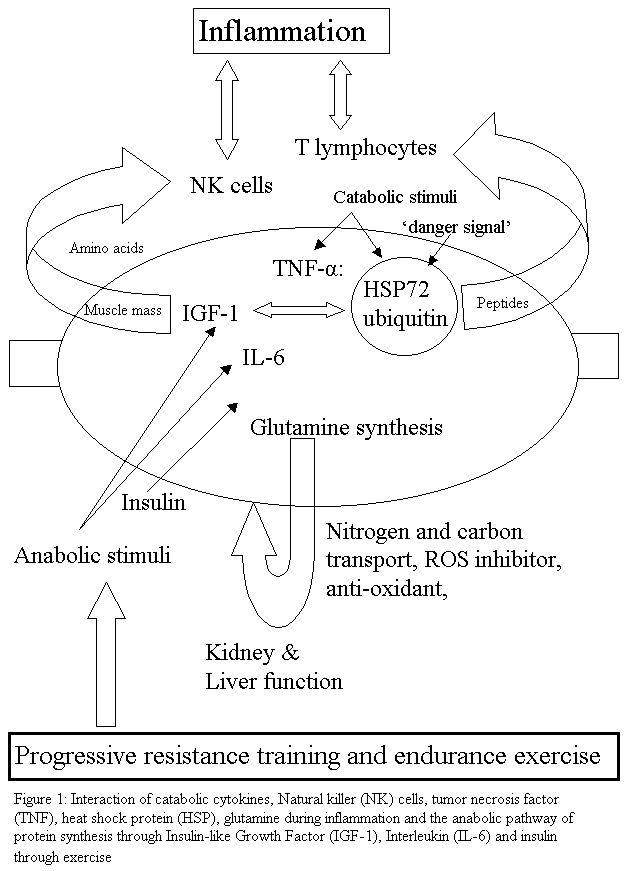
The above schematic (Krause 2004) illustrates immune reactions occurring within muscles. Immune responses are a complex interaction of cytokine signalling. Cyto = cell, Kine = movement. These signalling reactions occur in the brain, gut, liver, kidneys, thymus and muscle, in response to a perceived-safety danger signal (Matzinger 1994, review by Martin Krause 2004). Fine tuning of the cytokine reaction is important through a direct muscle cytokine 'micro-trauma' mechanical mechanism and indirectly through 'energy cycling' including metabolic mechanisms, including oxidative stress (REDOX) induced HSP. Furthermore, a multitude of cognitive stimuli can also influence (positively and negatively) the immune system. Notable, HSP must respond to the laws of thermodynamics.
In the context of COVID-19, it has become apparent that those critically ill patients, have cytokine flooding in their lungs. That is, they have an uncontrolled (auto) immune response which has been referred to as a 'cytokine storm'. Additionally, there also appears to be a delayed immune response in younger individuals relating to inflammation of blood vessels and clot formation. Further, extremely low oxygenation (<50%) has been reported suggesting hypoxic metabolic stress, potentially not to dissimilar to when we exercise, only in the later we can in most cases cease the exercise without undue effects. A notable exception is Rhabdomyolysis (which is a condition in which skeletal muscle tissue dies, from over-exertion or pathogens, releasing substances into the blood stream that cause kidney failure) discussed elsewhere on this site. It will be argued that previous 'fine tuning' of the cytokine response, through exercise induced neuro-immune perturbations, leaves the host, not necessarily less susceptible to infection, but more prepared to deal with heat stress, platelet reactions as well as the infection itself.

Matzinger's Danger Hypothesis - from Wikipedia
In 1994 a new immunologic model was suggested by Polly Matzinger. She suggested that the immune system does not distinguish between self and non-self, rather, it discriminates between dangerous and safe by recognition of pathogens or alarm signals from injured or stressed cells and tissues. According to this theory, the most important stimulation of immune response are normal tissues. When tissue cells are distressed because of injury, infection and so on, they start to secrete or express on their surface so called "Danger signals". "Danger signals" are also introduced into extracellular space when stressed cells die by immunologic not-silent cell death such as necrosis or pyroptosis (highly inflammatory form of cell death, as opposed to apoptosis, controlled cell death). This model also suggests that, despite their potential immunogenicity, neoplastic tumours do not induce significant immune responses to induce the destruction of the malignant cells. According to the danger model, the immune surveillance system fails to detect tumour antigens because transformed cells do not send any danger signals which could activate dendritic cells and initiate an immune response. "Danger signals" are normal intracellular molecules that are not found in the extracellular space under physiological conditions. The danger model has evolved over the years. "Danger signals" include DNA, RNA, heat shock proteins (HSPs), hyaluronic acid, serum amyloid A protein, ATP, uric acid and also cytokines like interferon-α, interleukin-1β, CD40L and so on.
The "danger model" suggests that, upon cellular necrosis, cryptic molecules in normal cells might be liberated from the cytoplasm into the tissue microenvironment, new molecules might be expressed on the surface of killed cells, or new molecules might be synthesized by cells undergoing necrosis. In comparison, the damage associated molecular pattern "DAMP model" suggests that any non-functional molecules (regardless of their cellular location; extracellular or intracellular) that were denatured, oxidized, or had disintegrated quaternary structures might have unique biophysical patterns such as low water-solubility or stretches of polyanions on their surface.
"Danger signals" and DAMPs are together with pathogen-associated molecular patterns (PAMPs) called alarmins and they are recognized by pattern recognition receptors (PRRs) of antigen presenting cells (APC). PRRs include Toll-like receptors (TLR), nucleotide oligomerization domain (NOD)-like receptors, retinoic acid inducible gene-I (RIG-I)-like receptors and C-type lectin-like receptors.[12] They are not only at the surface of these cells, but we can find them in cytoplasm and incorporated in the membrane of endolysosomes. Stimulation of PRRs leads to activation of APC cell to process antigen, upregulate expression of costimulatory molecules and present antigens to T helper cells.
The danger model is a new perspective on adaptive and innate immunity. In the past innate immunity was suggested to be a minor part of the immune system — in contrast, adaptive immunity was thought to be the most important and effective part of the immune system. According to the danger model there is no adaptive immunity without the innate part. This is because APCs like dendritic cells are essential for activation of T lymphocytes and B lymphocytes, which after activation produce specific antibodies. In the case of dendritic cells deficiency, like in common variable immunodeficiency (CVID), patients suffer from hypogammaglobulinemia and from primary or secondary defects in T-cell functions.

Häggström, Mikael (2014). "Medical gallery of Mikael Häggström 2014". WikiJournal of Medicine 1 (2). DOI:10.15347/wjm/2014.008. ISSN 2002-4436. Public Domain. or By Mikael Häggström, used with permission. - Image:Lymphocyte_activation.png, Public Domain, Link
(Matzinger, P {2003-11-28}. "Tolerance, Danger, and the Extended Family". Annual Review of Immunology. 12 (1): 991–1045. doi:10.1146/annurev.iy.12.040194.005015. PMID 8011301.
https://www.ohtn.on.ca/polly-matzinger-recaps-65-years-of-immunological-theory-in-one-diagram/
Classes of Heat Shock Proteins (HSP)
Heat shock proteins (HSP) play an important role during exercise and subsequently induced immune responses (Krause 2002). Phylogenetically, HSPs are the basic building blocks of life. Small protein chains of around 8–43 kDa for HSP 27 class and 72kDa for HSP 72 ranging up to 110kDa. HSP72 is abundant in muscle. HSP 27 has been shown to be released in response to muscle damage during novel or acute eccentric (muscle lengthening) exercise, whereas HSP 72 is released in response to metabolic and thermal stress, during endurance exercise, in both untrained and well trained individuals. Additionally, HSP 27 is thought to aid in the repair process of HSP 72 as well as in the repair of contractile protein myofilaments themselves (Folkerson M 2018 http://oru.diva-portal.org/smash/get/diva2:1234179/FULLTEXT01.pdf). The relevance of the latter will become apparent when examining eccentric muscle contractions later in this treatise.
HSP 60 is found abundantly in the gut and in the mitochondria of skeletal muscle, in rodents. It has been demonstrated, in rodents that HSP 60 is greater in slow twitch endurance muscle, as well as in the vastus lateralis of endurance trained men (reviewed by Mattias Folkesson 2018). HSP 60 and HSP 10 will be discussed later when considering the immune system, energy species and the gut biome.
Hence, HSP's have an important cellular function, commonly referred to as a 'chaperone'. The fate of proteins with non‐functional conformations after stress exposure may be either to re‐obtain the functional conformation, form aggregations with other misfolded proteins or become degraded. HSP's play a helper role in shifting the equilibrium in the direction of more functional proteins or degradation of damaged proteins. This can occur in an ATP-dependent or independent manner, meaning the latter doesn't require the normal oxidative metabolism to function, as muscle contraction does.
HSP had an important, stress induced, evolutionary and ecological role. As stated, it continues to play a vital role, as it's chaperone function acts to stabilise/modify exercise induced muscle damage, including micro-trauma. Additionally, HSP's play a role in apoptosis or cell death in sedentary individuals. Essentially they react to 'stressors' which can be temperature (hot and cold) and oxidative. Importantly, these ubiquitous molecular chaperones can prevent the irreversible aggregation of denaturing proteins. Specifically, to maintain protein homeostasis, HSP complex form a first line of defence against protein aggregation, with a variety of non-native proteins in an ATP-independent manner and in the context of the stress response. In vertebrates they act to maintain the clarity of the eye lens, and in humans HSP mutations are linked to myopathies and neuropathies (Haslbeck & Vierling 2015 J Mol Biol Apr 10; 427, 7: 1537–1548).
Indirectly, HSP's act on the immune system by maintaining muscle bulk, which provides the environment in which cytokines can act and where proteins can be used to build antigens for an immune response. That is, reported antigen presentation and cross-presentation, activation of macrophages and lymphocytes, and activation and maturation of dendritic cells as well as in vitro HSP cytokine functions, are a result of molecules bound to or chaperoned by HSPs but not a result of HSPs themselves (Tsan MF & Gao B.J Leukoc Biol. 2009 Jun;85(6):905-10). Another, more intriguing speculation, is that the HSP of the pathogens themselves activate the innate human immune response in the presence of fever greater then 2-3 C (reviewed by Hasday JD & Signh IS 2000 Cell Stress Chaperones, 5, 5, 471–480). Regardless, an increase in core body temperature, during fever, activates and utilises elements of the heat shock response pathway, to modify cytokine and chemokine gene expression, cellular signalling and immune cell mobilisation, to sites of inflammation, infection and injury (Hasday JD & Signh IS 2013 Intl J Hyperthermia, 29, 5, 423-435). Hence, increases in temperature during exercise may be a mechanism which uses HSP's to preserve and improve muscle fibre protein, protecting it's bulk whilst adaptively fine tuning mechanistic pathways for potential innate HSP-cytokine immune responses.
Muscle and Heat Shock Proteins

(Krause 2005 Rome Presentation)
Muscle is an incredible and potent reservoir of protein and immune substances. It is, in effect, one of the most important organs of the immune system. HSP are a multidimensional protein which act as a protein chaperone, an antioxidant and play a role in the inhibition of cell death (apoptosis). They act on muscle protein (actin cytoskeletal) remodelling. In particular, HSP27 has been characterized with the ability to regulate actin cytoskeletal dynamics during heat shock and other stress conditions, functioning both to promote actin polymerization and as an actin capping protein. During, intense exhaustive exercise, in hot conditions, both HSP72 and HSP27 are released into the blood stream (Periard et al, 2012, Cell Stress Chaperones, 17, 3, 375-378). HSP 27 is speculated to also have a HSP 72 preserving function. Presumably, these HSP, together, have HSP and cytokine protective roles, at certain stages in the immune-inflammatory cycle.
Extracellular HSP 27 and HSP 72 during exercise
Extracellular HSP expression has been demonstrated during exercise. The first investigation was in humans and treadmill running (60%VO2max) under hot conditions, where increases of eHSP 72 were found (Walsh RC, et al 2001. Cell Stress Chaperones, 6, 4,386-93). Further investigations (Periard JD et al 2012. Cell Stress Chaperones, 17, 3, 375–383), using cycling and heat at 60% and 75% intensity (HR 97% of max at termination) demonstrated core temperature reaching 39.7°C in the 60% trial (58.9 min) and 39.0°C in the 75% trial (27.2 min) (P < 0.001). The rate of rise in core temperature was 2.1°C at the 27.2 min mark and was greater in the 75% trial than in the 60% trial (P < 0.001). A significant increase and correlation were observed between eHsp72 and eHsp27 concentrations at exhaustion (P < 0.005). eHsp72 was highly correlated with the core temperature (heat storage) attained (60% trial) and the rate of increase in core temperature (75% trial; P < 0.05). Therefore, in response to an acute physiological challenge under heat stress, intensity and duration can result in similar changes to core temperature.
Interestingly, if these high core temperatures presented clinically, the person would be considered febrile. Fever is used as a diagnostic criterion in clinical settings, with temperature elevations as low as 39 °C being a potent inducer of HSP 70 in the human brain (Morrison-Bogorad M.et al, 1995 J. Neurochem. 64, 235–246. doi: 10.1046/j.1471-4159.1995.64010235.x). For example. a fever is a consistent sequel to measles virus (MeV) infection (Hutchins SS et al, 2004. J. Infect. Dis.189:S153–S159. doi: 10.1086/379652) where heat and/or virus-induced inflammatory cytokines may represent a means of indirect HSP70 induction. The latter is supported by findings in canine distemper virus infected dog brains, where HSP70 induction was observed in viral antigen negative as well as viral antigen positive astrocytes, these being restricted to areas of active viral replication and inflammation (Oglesbee M & Krakowka S 1993 Lab. Invest.68, 109–117).

These are strange lines of best fit (correlation HSP 72 vs HSP 27), especially from baseline (60% vs 75% VO2 max), through to recovery 24 hours, after exhaustive exercise. Let's keep this in mind when discussing 'outliers' in chaos later in this dissertation.
It should be noted that these extracellular HSP's are thought not to be from contracting muscle (Febbraio et al. 2002a), but rather as a result of the brain and hepatosplanchnic tissues which are capable of releasing HSP 72 in the systemic circulation (Febbraio et al. 2002b; Lancaster et al. 2004). Importantly. its extracellular expression (eHSP 72), measured in plasma and serum, has been suggested as a potential signal, triggering innate immunity and stimulating the release of proinflammatory cytokines (Pockley et al. 1998; Asea et al. 2000; Njemini et al. 2003; Pockley et al. 2003; Njemini et al. 2004; Asea 2005; Noble et al. 2008). In humans, they believe that the contracting muscles are not the source of eHSP 72. In : https://www.ncbi.nlm.nih.gov/pmc/articles/PMC3312965/#CR44 . However, contrary to this belief on extracellular HSP, it will later be argued, that contracting muscles release localised HSP, during concentric (cycling) and eccentric (running and plyometrics) exercise, where the laws of thermodynamics and concepts of myofilament micro-trauma (respectively) are applied......and that although these intracellular HSP have a different function to eHSP, their relationship is 'continuous'
In the 75% trial, the rate of increase in rectal temperature was a significant predictor variable of eHSP 72 expression. For the expression of eHSP 27, blood glucose was a significant predictor variable in the 60% trial. No predictor variables were found for eHSP 27 concentration in the 75% trial. Malondialdehyde (MDA) concentrations showed a significant reduction 24 hours after the completion of exhaustive exercise. MDA is one of the final products of polyunsaturated fatty acids peroxidation in the cells. An increase in free radicals (REDOX) is thought to cause overproduction of MDA, which wasn't seen in this investigation. MDA level is commonly known as a marker of oxidative stress and the antioxidant status in cancerous patients. Importantly, the correlation of glucose and FFA to eHSP 27 and MDA, may be an important aspect to bear in mind, when we later discuss the energy consuming species of the gut biome, REDOX and the immune system.
Aging, HSP and cytokines (IL's and TNF-alpha)
As we age, we lose our tolerance to heat and cold, suggesting a gradual loss of HSP over time. In community-dwelling elderly, serum HSP 70 and IL-10 concentrations were significantly lower and IL-6 was significantly higher when compared to healthy young control subjects. Elderly patients presenting inflammation (CRP serum levels ≥5 mg/L) showed significantly higher Hsp70 values; and Hsp70 correlated positively with IL-6 and CRP, but not with TNF-alpha or IL-10. A significant association was also noted between Hsp70 levels and the degree of dependency and cognitive decline in geriatric patients. This data provides evidence that serum concentration of Hsp70 decreases with age in a normal population. This study also showed that higher levels of Hsp70 are associated with inflammation and frailty in elderly patients (Rose et al (2011), BMC Immunology, 12, 24, 28 March) https://link.springer.com/article/10.1186/1471-2172-12-24. Therefore, too much IL-6 appears to be a bad thing, however, later we will discuss how increases in IL-6 in response to an acute stress induces the release of anti-inflammatory cytokine such as Il-10. Moreover, chronically elevated anti-inflammatory substances can lead to desensitisation. Therefore, it will be argued that it's the 'randomised regular intermittent impulse', whilst exercising, which tunes the system, through the laws of thermodynamics and entropy (chaos)!
Age, Heat Shock Proteins, COVID-19 and thrombocytes (clots)
COVID-19 seems to disproportionately affect older people. Young people, who have a more robust 'innate' and 'younger' immune system seem to be, with some exceptions (Kawasaki Disease), immune to the disease. Some people with COVID-19, aged 20-40 years old, are presenting with neurological complications from prolific clot formation. Clots are formed from thrombocytes. Thrombocytes are formed from platelets. Investigations suggest that HSP70 and HSP90 can serve as signalling scaffolds, helping regulate function, including platelet adhesion and spreading via modulation of protein phosphatase activity. HSP27, on the other hand, may be more involved in controlling actin polymerization during the platelet shape change and subsequent aggregation (Polanowska-Grabowska R & Gear AR 2000 Platelets. Feb 11, 1, 6-22).
Several roles may exist for HSPs in the immune system including intracellular roles (e.g., antigen presentation and expression of innate receptors) as well as extracellular roles (e.g., tumour immunosurveillance and auto-immunity). It has been observed that exogenously administered HSP induced various immune responses in immunotherapy of cancer, infectious diseases, and auto-immunity. Moreover, virus interaction with HSP as molecular chaperones showed important roles in regulating viral infections including cell entry and nuclear import, viral replication and gene expression, folding/assembly of viral protein, apoptosis (cell death) regulation, and host immunity (Azam B & Elnaz A Clinica Chimica Acta 2019, 498, 90-100). As already stated, viruses could regulate host HSPs at different levels such as transcription, translation, post-translational modification and cellular localization. Notably, COVID-19 seems to have unprecedented auto-immune response in those critically ill patients.
Platelets
Platelets are anucleate cell fragments known for their central role in coagulation and vascular integrity. However, it is becoming increasingly clear that platelets contribute to diverse immunological processes extending beyond the traditional view of platelets as fragmentary mediators of haemostasis and thrombosis (clot formation). There is recent evidence that platelets participate in:
- enhancement of adaptive immune responses
- recruitment and promotion of innate effector cell functions
- intervention against microbial threats
- modulating antigen presentation.
In this way, platelets should be viewed as the under-appreciated orchestrator of the immune system (Ramadan et al 2015, Curr Trends Immunol. 16: 65–78).
Heat Shock Proteins, Exercise and Upper Respiratory Tract Bacterial Count (Int. J. Med. Sci. 2020, Vol. 17)
Exercise modifies airway immune responses and susceptibility to infection in healthy individuals. Investigators (Min et al 2020 Int J Med Sc, 17, 5, 640-646) examined the effects of exercise on HSP 27 and HSP 72 expression levels in nasal mucosa of both professional competitive athletes (volleyball) and non-athletes. Nasal lavage (NAL) fluids were collected from 12 male professional volleyball players and 6 healthy males pre-submaximal exercise (running for 30 min at 70-80% of maximal heart rate) and post-submaximal exercise. Expression levels of HSP27, HSP70, Interleukin (IL)-8, and Tumour necrosis factor (TNF)-α in NAL fluids were quantified and antibacterial assay using Staphylococcus aureus was performed to assess the immunological role of HSPs in NAL fluids. In non-athlete controls, HSP27, HSP70, and IL-8 were unchanged after exercise. In the professional athletes, HSP70 expression declined significantly (p<0.05), but HSP27 was not significantly changed. nor were IL-8 and TNF-α. Further, it was found that the number of active bacterial populations were influenced by the presence or absence of HSP27 and HSP70 in NAL fluids. Upon removal of HSP27 and HSP70, the initially observed augmentation of anti-bacterial activity in post-exercise NAL fluids was abolished.
This is a super-interesting result, where reduced HSP concentrations were correlated with improved bacterial counts, suggesting that HSP can reduce 'good' or functional bacteria in the mucosa. Moreover, there seemed to be difference in the innate immune response, to exercise, in trained vs untrained. The influence of bacteria and the gut biome will be discussed later in relation to the immune system. Additionally, of even more interest is the effect of training on pre exercise HSP levels. Needless to say, a balance of HSP is required for a balanced mucosal bacteria and that the resting HSP levels in athletes is lower than in non-athletes. However, it needs to be said that the non-athlete group was only 6 compared to 12 athletes. Regardless, the trained athletes appear to have lower basal levels of HSP. Importantly, this could be the result of 'over-training' and/or it makes sense that training creates the optimised system which conserves these vital proteins for essential use. Notably, as we age, the number of HSP reduce, so ideally, our immune biological age is younger than it's chronological age.
A systematic literature review (Moreira A et al (2009) British Med Bul, 90, 1, 111–131, https://doi.org/10.1093/bmb/ldp010) (of 30 studies, comprising 4 descriptive, 18 observational and 8 randomized or controlled reports, that included a total of 8595 athletes, including 5471 runners and 2803 swimmers and 1798 non-athletes) found athletes were more susceptible to upper respiratory tract infections (URT) than non-athletes after prolonged and intense exercise. They postulated that the significant immune suppression (down regulation) was a protective response to limit inflammation. Furthermore, they hypothesised that as the fitness of the athlete increased, the incidence of URT should decrease, contrary to their findings. However, they also described data in marathon runners taking Vitamin C (anti-oxidant), where it was found to reduce the incidence in URT. In one study which they reviewed, the gut biome was considered to be important, where Lactobacillus fermentum appeared to have a slight anti-inflammatory effect, reflected by a decrease in IL-6 production, which is the main inducer of C-reactive protein and a decrease in the number of monocytes, which are one of the major producers of IL-6. Consumption of carbohydrate-rich beverages during exercise appears to attenuate some of the immunosuppressive effects of prolonged exercise, but confirmation of any clinical significance in this awaits further research.
Exercise and Respiratory Tract Infections
A narrative review (Pederson & Toft, 2000, https://bjsm.bmj.com/content/34/4/246) highlights evidence that exercise across a lifespan seems to increase resistance to upper respiratory tract infections, whereas repeated strenuous exercise suppresses immune function. There was no assessment of the reliability of data in the included studies. In an overview, researchers (Rocco et al., 2018) analysed data from four systematic reviews (including an older version of the Cochrane review; 14 primary studies) to examine clinical effectiveness of exercise to prevent upper respiratory tract infections. The authors were able to meta-analyse five randomized trials involving only 311 participants. They observed a reduction in incidence of infection (RR 0.84, 95% CI 0.65 to 1.10; 72 infections less [157 less to 45 more] per 1000 people) in people randomised for moderate intensity exercise for 8 weeks to 12 months. The evidence was judged “very low” quality based on GRADE, meaning the findings are highly uncertain.
Martin et al (2009, Ex Sp Sc Rev, 37, 4, 157-164 doi: 10.1097/JES.0b013e3181b7b57b) suggest outcomes following respiratory viral infections are improved after moderate exercise based on epidemiological evidence and animal models. They propose stress hormones stimulated during exercise reduce excessive local inflammation and skew the immune response away from a TH1 and toward a TH2 phenotype. Human studies and experimental modelling of mechanisms are lacking.
Heat Shock Proteins and the 'viral' diseased state
Heat shock proteins (HSPs) are recognized for their support of protein metabolism. Interaction with viral proteins also functions to enhance the development of innate and adaptive immune responses against the infecting agent. At the level of the infected cell, HSP are uniquely expressed on the cell surface, where they represent targets of lymphokine activated killer cells. Necrosis of the infected cell releases complexes of HSP and viral protein, which, in turn, binds antigen-presenting cells (APCs). One effect of binding is to stimulate APC maturation and the release of proinflammatory cytokines, an adjuvant effect, that prepares the way for adaptive immune responses. A second effect of binding is to direct the antigenic cargo of the HSP into endogenous MHC presentation pathways for priming of naive cytotoxic T cells (CTL) or activation of antigen-specific CTLs. For example, this alternate pathway of antigen presentation is essential to CTL priming following primary brain infection such as in measles (Oglesbee et al 2002, Viral Immunology, 15, 3, 399-416)
Both HSP72 and HSP27 has been implicated in different disease states playing both protective and counter-protective roles. In multiple disease contexts, HSP-27, plays a role in renal injury and fibrosis, cancer, neuro-degenerative and cardiovascular disease (Vidyasgar et el 2012, Fibrogenesis and Tissue Repair, 5, 7, (https://link.springer.com/article/10.1186/1755-1536-5-7). Interestingly, HSP27 has been characterized with the ability to regulate actin cytoskeletal dynamics during heat shock and other stress conditions, functioning both to promote actin polymerization and as an actin capping protein (Guay J et al (1997) J Cell Sci, 110: 357-368; Huot et al (1996) Cancer Res., 56: 273-279). This capping function is important in respect to DNA splitting where telomeres are the caps at the end of each strand of DNA that protect our chromosomes, like the plastic tips at the end of shoelaces. Without the coating, shoelaces become frayed until they can no longer do their job, just as without telomeres, DNA strands become damaged and our cells can't do their job.
HSP 70 has been associated with CNS responses to viral load from measles. Importantly, this model suggests a self-perpetuating (positive feedback) HSP expression with virus gene expression, which in turn stimulates innate immune responses in macrophages of the brain microglia (Kim & Oglesbee 2012). The extracellular HSP70 is a ligand for TLR2 and TLR4, activating signal transduction pathways that drive type 1 IFN expression (IFN-β in brain) and expression of antigen presenting complexes (MHC). IFN-β expression by brain macrophages is key to immunity against virus infected neurons (in a mice measle model). However, studies that directly examine the contribution of HSP70 to antiviral immunity and the impact upon viral virulence are lacking.
When looking at the HSP70 family as a whole, their fundamental role in protein metabolism and the abundance within cells reinforces their potential support of viral replication at multiple levels. For every step, in viral replication (i.e., attachment/penetration, uncoating, transcription and genome replication, and virion morphogenesis), one can cite an example of a viral system that draws upon an HSP70 family member for support.
Heat Shock Protein 90 (HSP-90), Geldanamycin and COVID-19 : 19 May 2020
An interesting article on drug repositioning (defined as the use of approved drugs for new indications), offering an unmatched opportunity to offer novel therapeutics to treat SARS family of coronaviruses (SARS-FCoVs); Researchers analysed, a dataset of patients who presented with SARS during the 2003 outbreak whereby they established a gene signature that defines differential gene expression in patients who were sick with SARS vs. healthy controls and convalescent patients. They used a robust platform to conduct drug repositioning based on clustered gene expression and pathway enrichment to identify best matching drugs. They identified 55 agents of potential benefit. In most of these drugs they were able to establish a link to previous related research, use as antiviral, or at least a hypothetical role in treating SARS-FCoVs. Most notably, the heat shock protein 90 (HSP 90) emerged as a major component that enables viruses to hijack infected cells through the process of autophagy (self devouring). Almost half of the drugs identified could be linked to HSP 90. As such, they propose using HSP 90 inhibitors, mainly geldanamycin and its derivatives, to treat COVID-19. (https://www.researchsquare.com/article/rs-18714/v1)
Based on their findings, they suggest adding more drugs to the experimental arsenal deployed against SARS-FCoVs. These included the use of nontoxic drugs that are readily available for wide scale prophylaxis or for the treatment of mild cases of COVID–19. These drugs would include omeprazole, nonsteroidal anti-inflammatory drugs, colchicine, sulfoanamide antibiotics, antimalarial drugs and clozapine/chlorpromazine. For patients with serious COVID–19 illnesses, the above drugs can be combined with immune modulators like sirolimus, and direct HSP 90 inhibitors under well-designed clinical trials. Given the high pathogenicity of the current ongoing epidemic, they suggested that it seems prudent to attempt to use multiple drugs in combination if low risk toxicity and drug-drug interaction is established. Choosing a combination of drugs identified in this study or other drug-repositioning studies and careful reporting of the efficacy of these experiences can result in rapid accumulation of knowledge.(Iyad Sultan, Scott Howard, Abdelghani Tbakhi (2020, DOI : 10.21203/rs.3.rs-18714/v1). Therefore, albeit evidence from another class of HSP, it is plausible that fine tuning (down regulation from regular exercise) of HSP function is equally important to it's subsequent role as a fine tuner of cytokine - immune responses.
This is an interesting finding, as one of the functions of another class of HSP (HSP 70) is the inhibition of apoptosis (cell death) which could be considered to enhance viral replication by preserving the viral factory. Inhibition of HSP 70 expression in human breast tumour cells result in massive cell death. Conversely, adenovirus infection causes a dramatic suppression of HSP 70 mRNA levels during the late phases of the viral replication cycle when the viral particles are already assembled, enhancing apoptosis in order to promote viral particle release (in Mi Young Kim and Michael Oglesbee 2012 Cells 1, 3, 646–666.doi: 10.3390/cells1030646). This suggests that HSP importance and function varies depending on the stage of the disease. A cycling dynamic of HSP outliers from the pathogen and host itself.
Mechano-transduction: how does a mechanical force transduce to a thermodynamic energy system?
We all know the feeling after unaccustomed exercise. Delayed Onset Muscle Soreness (DOMS); that feeling of heaviness and stiffness which worsens over a 2 day period. After the first run, on soft sand, in many years, resulting in the inability to walk down any stairs except backwards! Scientists describe it as 'broadening and streaming of the z-bands'. These are the micro-filaments between actin-myosin sliding filaments (introduced by Huxley 1957) which allow our muscles to lengthen and shorten. Additionally, an elastic element has been incorporated which is considered to be made up of passive collagen tissue (such as myofascia and tendon - which isn't quite true, as these tissues fibroblasts have motility and can change the structural integrity/density {Petrie &Yamada 2015 https://www.ncbi.nlm.nih.gov/pmc/articles/PMC4628848/}), as well as myofilaments such as Titin. Furthermore, the cycling of ATP-ADP energy reserves give muscle another (sinusoidal) elastic element when doing exercise such as running or plyometric jumping-counter jumping. Did you know muscles require energy, in the form of ATP, to relax? Hence, the contracted rigid muscle (e.g. rigor mortice or cramp) can be considered a lower energy state than a relaxed one! Paradox? However, the eccentric (lengthened) contracted muscle, which requires less EMG activity (than concentric contractions) enhances the potential recoil for concentric (muscle shortening) contractions.
In biomechanics, the Hill model of muscle thermodynamics was developed in the 1930's and redefined in 1974. Still today, it's considered as fundamental in any conservation on muscle dynamics, where an inverse relationship exists between muscle velocity and force production. This has direct bearing on the development of power (P=Fv or P=F. δ s/t). Considering energy, where Work = Power x time, it becomes apparent that the displacement of sliding filaments resulting in muscle lengthening and shortening defines the use of derivations from the laws of thermodynamics. The following is taken directly out of the seminal paper of 1974.
Homsher E, Mommerts WFHM, Richhiuti NV (January 1974) The Journal of General Physiology
Apart from calorific energy values, this model has practical implications, where an optimal velocity (change in displacement over time) and muscle length dependent force, develops optimal power i.e. the rate at which work is done (which, like your energy bill, is measured in Watts)

Plyometrics such as the one depicted above, can induce severe muscle soreness (DOMS) in the uninitiated. However, in the trained, this form of training has been known to improve the ability to run and jump.
Actin-myosin cross bridge model (Huxley 1957)
Force-velocity temperature dependent model (Ranatunga KW 1984 J Physiol. 351, 517-29)
Cross filament model and four kinetic phases of half-sarcomere (hs) shortening following steps to the loads indicated (Ranatunga KW 1984 J Physiol. 351, 517-29)
Later, Piazzesi G et al (2007 Cell 16, 131, 4, 784-95) demonstrated that it was the number of myosin motors rather than motor force or stroke size which determined force production at varying velocities, thereby providing a molecular basis for the parabolic relationship described earlier. However, later we will describe a large micro-filament called 'Titin' which has been considered the 'spring' in the system
Discrepancies exist at low and high loading when using variations and additions to Hills equation. These have been attributed to the internal kinematics of actin-myosin, as well ADP-ATP energy cycling through the sarcoplasmic reticulum. However, non-linear mechanics (deterministic chaos theory) would expect such rules to break down at the extremes...and new predictive rules should take their place. That is, the 'outliers' define what 'norm' it isn't.
This sliding filament system (https://www.back-in-business-physiotherapy.com/images/videos/muscle_contraction.mp4) has been modelled into a modification of Hooke's Law, Young's modulus of elasticity (using microfilament Titin {see later} as the spring) and the oscillating mass-spring. This was extrapolated, at a later date, into Bernstein's perspective of 'degrees of freedom' and motor control (adding a cognitive perspective). As the muscle shortens and lengthen it generates heat, based on tension and displacement and the load applied. The concepts of concentric (muscle shortening) vs eccentric (muscle lengthening) muscle contractions, as related to energy and the immune system will be discussed later.
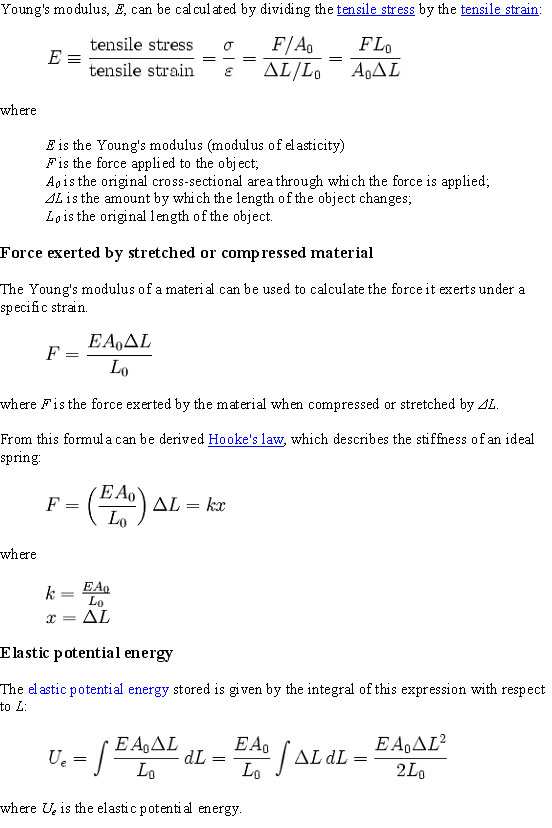
Subsequently, inverse dynamics was extrapolated to describe the transfer of energy across accelerating body parts (inertia) through 'muscle energy straps'. Put simply, muscles which cross just one joint, tend to be deeper muscles and act as stabilisers across the joint, whereas the bulkier, more superficial, two joint muscles, are the energy straps. This is linear dynamics which we generally learn of at school. The following will describe this in more detail. Later I will examine non-linear dynamics and deterministic chaos elsewhere in the treatise.
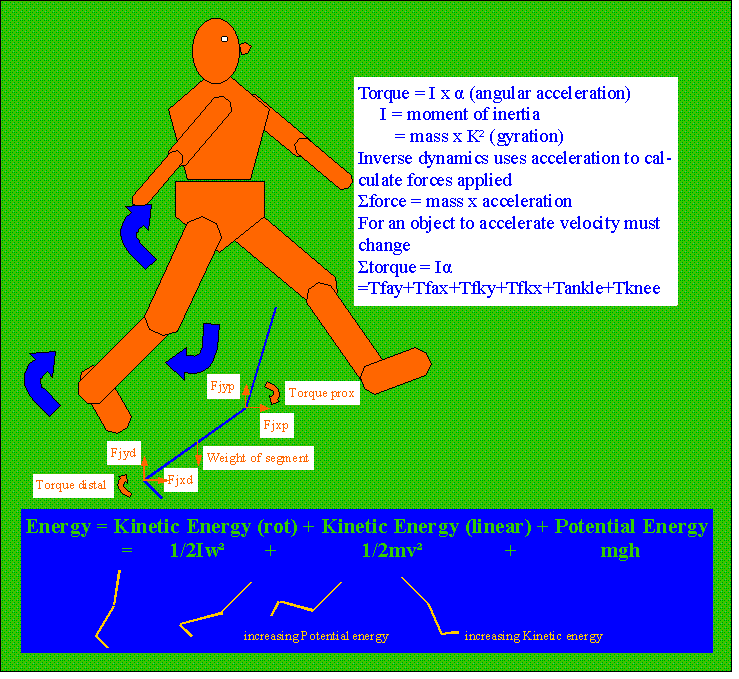
Therefore, the development of Τorque through the movement of body parts (inertia), conservation of momentum (energy), the production of potential/elastic energy describes a 'perfectly stable' sinusoidal system. However, it is becoming more apparent, that the imperfections in the system, are what drives a healthy and optimised process of power (P = Force x velocity) production and work (W=Power x time) output. Obtaining, transforming, and using energy to do work may seem simple. However, the second law of thermodynamics explains why these tasks are harder than they appear. None of the energy transfers we’ve discussed, along with all energy transfers and transformations in the universe, are completely efficient. In every energy transfer, some amount of energy is lost in a form that is unusable (as work). In most cases, this form is heat energy. Thermodynamically, heat energy is defined as the energy transferred from one system to another that is not doing work. However, what if that heat is activating HSP or other immune-metabolic procesess?
Entropy
Some energy is lost as heat energy during mechanical and cellular metabolic reactions. This is good for warm-blooded creatures like us, because heat energy helps to maintain our body temperature as well as regulate HSP. As stated, strictly speaking, no energy transfer is completely efficient, because some energy is lost in a 'so called' 'unusable form'. This is called entropy but ignores concepts from deterministic chaos.
The traditional definition of entropy is
1. a thermodynamic quantity representing the unavailability of a system's thermal energy for conversion into mechanical work. Often interpreted as the degree of disorder or randomness in the system.
"the second law of thermodynamics says that entropy always increases with time"
2. "lack of order or predictability"; "gradual decline into disorder".
However, the latter definition 'of the gradual decline into disorder' is not what is seen when examining high performance cycling demands or when looking at muscle paralysis. In fact, it will be shown that the supposed 'decline' into disorder of the EMG readings result in predicting a more optimised function.
Entropy and Low Back Pain
In Musculoskeletal Physiotherapy there has been an emphasis on 'normal'. What is normal function and what are the constraints of a functional movement pattern. Reductionist approaches are taken to ascertain the directions of movement of 'preference' versus those of 'avoidance'. Avoidance in the acute stage of an injury frequently involves 'unloading' the injured area, whereas people with chronically painful movement frequently 'overload' the area of dysfunction. Ironically enough, their movement becomes 'predictable' and less varied. Furthermore, the reduced variability leads to either 'increased control' and less adaptability, or 'reduced control' and increased loading of 'fatiguable structures' (Thiry et al Entropy2022, 24(4), 437; https://doi.org/10.3390/e24040437). Hence, the danger for the physiotherapist is to 'drill' down to the 'offending' structure or movement, but not progress rehabilitation far enough, to include the variety entailed in the full spectrum of complex movement and loading, which is required for motor control in 'predictable' and 'unpredictable' environments. Similar, to the 'Butterfly Effect' in non-linear mathematics, optimisation ultimately requires a chaotic system of control, manifested by 'outliers' which determine the 'damping' or 'amplification' of an oscillating system. Similar, to the 'Butterfly Effect' in non-linear mathematics.
Cycling, concentric contractions and optimisation of cadence frequency using entropy considerations
One of the key determinants of muscle co-ordination and movement efficiency during cycling is pedalling cadence consistency. Such cadence needs to occur across multiple joints and limb segments. Whereas, inverse dynamics requires changes in velocity to achieve accelerating body parts. So, in the absence of changes in cadence, how can changes in acceleration be incorporated into the model of cycling efficiency?
In-order-to achieve minimal neuromuscular fatigue, optimal pedal cadence for long distance cyclists tends to be between 85 and 95 revolutions. In contrast, maximum power (as in track cyclists) is achieved with pedal cadences between 110-135 rpm. Higher pedal rates lead to shorter duration pedal cycles, coupled with longer duty cycles, recruitment of fast twitch muscle fibres and de-recruitment of slow twitch muscle fibres leading to significant inefficiencies and loss of power at higher cadence. Furthermore, people with long limbs aren't able to develop the same moments of inertia compared to shorter limbed people. To conceptualise the latter, think of the case of the ice figure skater spinning with arms close to midline vs stretched out from midline.
Chaos theory would suggest that the randomization of movement pattern, requiring perturbations of periodicity, may make the scaling of muscle action/inaction important, when considering minor fluctuations in cadence and moments of inertia. Similar to the mass-spring model described previously, a system with three orthogonal axis and a fixed point of perturbation, which has a moving point of seemingly random perturbations and everything else, can be envisage. These random perturbations are the 'outliers' which traditionally have been statistically removed from linear dynamic models. However, they should be included, as only in this way can a cadence of constant velocity be used to describe efficiency. Perturbations from the manifold, new temporary fixed points of oscillation, magnify and fine tune the system
As such the intrinsic firing pattern (motor unit potential shape, firing rate variability {or lack there of = staleness}, coherence between motor units) of muscles need to be established. Additionally, their co-ordinated firing pattern across the same muscle, other muscle synergies on the same body segment and muscles of different body segments executing the same motor task, should ascertain 'extrinsic' firing patterns. That is, one wishes to determine the influence of oscillations within muscles and the influence of oscillations from not only nearby motor units but also from nearby muscles as well. The deterministic chaos of nearby oscillations influencing the prime parameter.
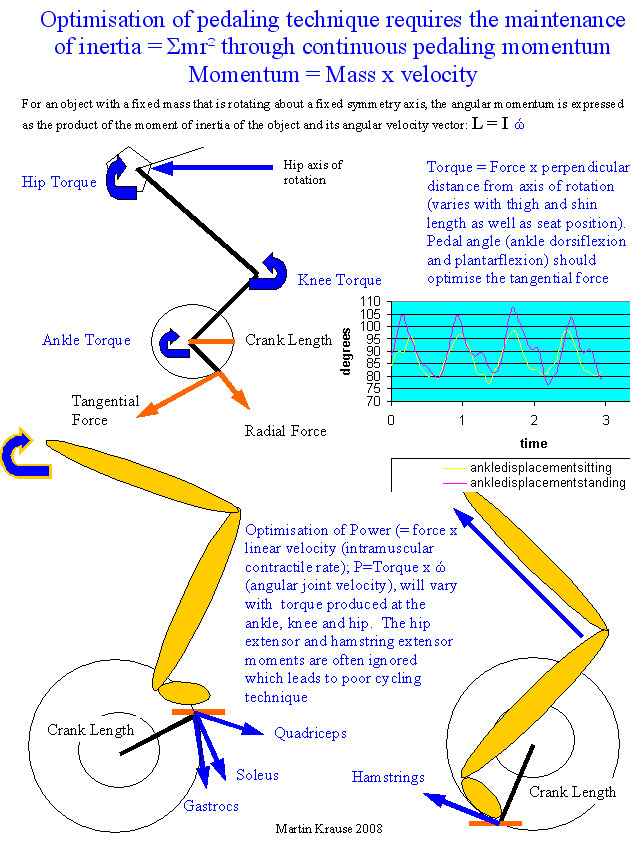
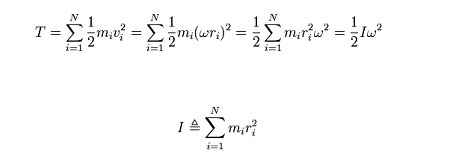
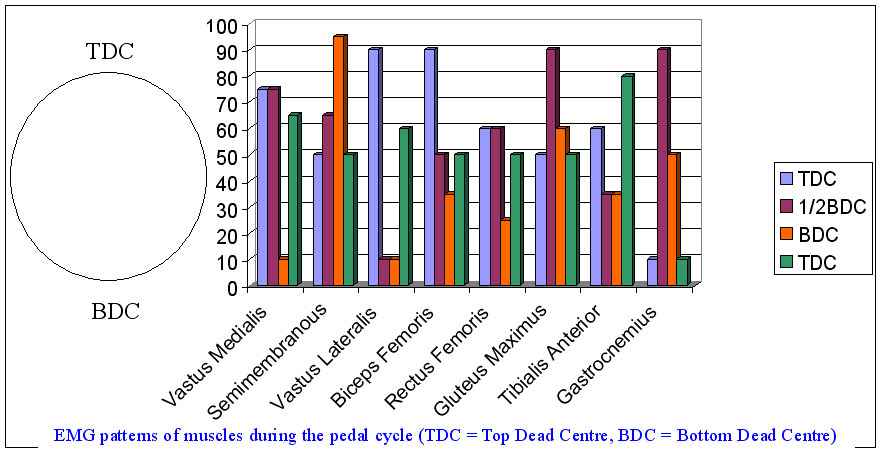
(Krause M and Preston R 2002)
A term entrotropic half life (EnHL) using EMG was coined and developed to examine what limits mechanical power output at higher cadences above 120rpm. Hodson-Tole et al (2020, Med Sc Sp Ex, 52, 1, 214-224) found that, in trained male cyclists (~ 10000km/yr, average 33yrs), changes in the individual muscle excitations can occur even when changes in co-ordination were more limited. Importantly, they demonstrated that features of the EMG change in a non-linear fashion with increasing cadence and that both 80 and 120 rpm represent inflection points, hinge points or potential manifolds critical in EnHL relations. In other words, cadences less than 80rpm and higher than 120rpm may have fewer fluctuations in muscle recruitment or firing characteristics leading to reduced application of force at the pedal. This variability is particular true for the bi-articular muscles, such as the gastrocs (medial and lateral), biceps femoris, rectus femoris, whereas the vastus medialis and vastus lateralis (one joint {uni-articular} muscles) reached a minimum at 80rpm and did not change across the faster cadences studied.
In this day and age of gears and the optimisation of mechanical ratios for optimal cadence, we lose light of the fact that cyclists once rode without gears and until only a few decades ago (1980's) elite cyclists used very high gears (12-20 teeth rear cluster) on dirt roads and mountain passes. My personal experience, of this time, is that I felt I had a number of gears within my muscle synergy, which I could call upon to change (in this case increase) my overall velocity. This internal gearing system was at the random mercy of the variable terrain which we encountered. Deterministic chaotic input generating an internalised randomised gearing ratio, preventing fatigue?
In orienteering, people talk of internal calm, whilst running and thinking at maximum endurance power. Later in this dissertation we'll take a look at an 'uncontrolled manifold hypothesis' in orienteering which is employed as an experiential learning strategy to teach predictive reasoning (through map reading), i.e. the random from the non-random, in novel terrain. This is done through a process of filtering, contrasting the 'value' of the information and subsequent minimisation of certain information and magnification of predictive 'outliers'. That data used is that which doesn't 'cloud' the 'fidelity' within the cognitive domain.
Later, we will also examine the effects of 30Hz electrical input into exercising muscles for the magnification of that muscles representation in the brain. Similarly, the lack of gears in track cycling has been exploited to produce endurance road world champion cyclists, potentially by forcing an internalisation of 'fidelity' to draw out the maximum (myosin motor unit) efficiency in the system. Arguably, this recruitment of motor units, is similar to a team sport, where individual players are strategically 'engaged', so as to maximise 'players', and minimise 'passengers' in the game. Game theory will be discussed later.
Eccentric muscle contractions, loading, damage and adaptation : how a mechanical force transduces to a cytokine reaction
We've examined potential and kinetic energy and thermodynamics in the muscle models of power production. Using concentric (muscle shortening) contractions it could be shown that the energy state change, and heat is dissipated. This heat might be what drives the heat shock proteins (HSP's) which we discussed earlier. What those models don't take into consideration are eccentric (muscle lengthening) contractions and their influence on muscle elasticity (stiffer -> less elastic = more damping) as well as the potential myofilament damaging aspects of this sort of exercise. What is also of particular interest is how eccentric contractions can exert more force for less EMG input (compared with concentric contraction) and how the concentric contraction is better if immediately preceded by an eccentric one. The latter being the principle behind plyometrics training such as jump downs and counter-jumps.
Touron et al (2019) examined the impact of eccentric vs concentric training on body composition and energy expenditure. Typical eccentric exercises are plyometrics and downhill running. Eccentric training is well known for inducing greater micro tears and severe post exercise muscle soreness (DOMS). It is associated with distinctive inflammation patterns and repair processes that are particularly effective in promoting adaptations, such as skeletal muscle hypertrophy (Roig et al 2009, Br J Sports Med, 42, 8, 556-568) and mitochondrial H2O2 production ((Isner et al 2014, Muscle Nerve, 50, 5, 803-811). Eccentric exercises are, considered to be, particularly useful in cardio-respiratory compromised people, as localised muscle contractions can be made without large cardiac demands. Moreover, Touron et al (2019) found beneficial effects of exercise on body composition (lean body mass), particularly with eccentric exercise (vs concentric) at high muscular, but low cardiorespiratory, loads.
The mechanical 'spring' of the muscle may be considered as that of one of muscles largest proteins 'Titin', which spans an entire half-sarcomere from Z-disc to M-line. Titin functions as serially linked springs that develop tension when stretched. There are multiple titin isoforms that vary in size and stiffness, which explains the elastic-stiffness diversity across vertebrate muscle (mouse ->elephant). Because of titin’s structural properties, its most significant role may be as the muscle spring (https://www.jospt.org/doi/pdf/10.2519/jospt.2003.33.10.557). Evidence suggests that small heat shock proteins that protect the cytoskeleton structures (e.g. titin) increase dramatically after repeated eccentric bouts (Koh TJ. 2002 Ex Sport Sci Rev. 30, 117-121). If titin is functioning as a locomotor spring, then it should be tuned to the frequency of muscle use and adapt in response to changes in physiological demand due to exercise or disease. This notion has been reinforced as titin isoform expression has been reported as an adaptable property of striated muscle (Bell SP et al 2000 Circ Res. 87, 235-240).
see video : https://www.back-in-business-physiotherapy.com/images/videos/muscle_contraction.mp4
Apart from mechanical considerations, metabolic aspects of loading, energy transduction and fatigue should also be examined. We found specific fatigue characteristics with eccentric/concentric contraction regimes (Krause M & Preston R 2002).
What is known, is that this muscle damaging and fatiguing process, has a very powerful and potent training effect, if repeated in a dose specific manner, using temporal and intensity considerations. What is unknown is whether randomisation (chaos) in this form of training attains better results once a person has become accustomed to it. Logic would suggest yes. It can be argued that it's this microtrauma and subsequent dyskinesia, which induces an inflammatory-immune response. However, the other hypothesis are
- heat production and subsequent entropy (already discussed)
- that it's the asynchronicity or 'outliers' of control (chaos) which generates an immune response
as well as arguing
- that it's a metabolic-immune compromise which generates the cytokine response.
Furthermore,
- one should consider the effect of muscle tremor whilst doing such exercise and whether this is what is needed to readjust the system to a new stable state or even reverse a gradual decay from a previously stable state?
Muscle damage during eccentric exercise and immune markers
Bruunsgaard H, Galbo H, Pedersen BK, et al. (J Physiol (Lond) 1997, 499, 833–41) compared concentric and eccentric ergometer bicycle exercise and found an association between increased IL-6 level and muscle damage (seen by the increase in creatine kinase). Importantly, the level of IL-6 increased more during the eccentric exercise, and a significant association was found between peak IL-6 and peak creatine kinase on the subsequent days (r = 0.722; p = 0.028). The eccentric bicycle model results in delayed muscle damage, with peak creatine kinase levels on day four or five after exercise.
Researchers (Ostrowski K, Rohde T, Pedersen BK, et al. 1998 J Physiol (Lond) 508,949–53) were able to detect IL-6 mRNA in skeletal muscle biopsy specimens obtained from runners after a marathon. These data indicate that IL-6 is locally produced in response to strenuous exercise or exercise induced muscle damage. IL-1ra mRNA was not present in the skeletal muscle, but was expressed by blood mononuclear cells obtained after, but not before, the marathon, suggesting that locally produced IL-6 induces a systemic anti-inflammatory response.
Sarcopenia - loss of muscle cells and hence bulk
If we don't exercise regularly, our muscles atrophy, i.e. they become smaller. However, with exercise, we can reverse this process of atrophy. After a certain age, in addition to disuse atrophy, the muscles cells can be destroyed forever (apoptosis), with inactivity. This process is called sarcopenia and commences in the fourth decade of life, in sedentary individuals.
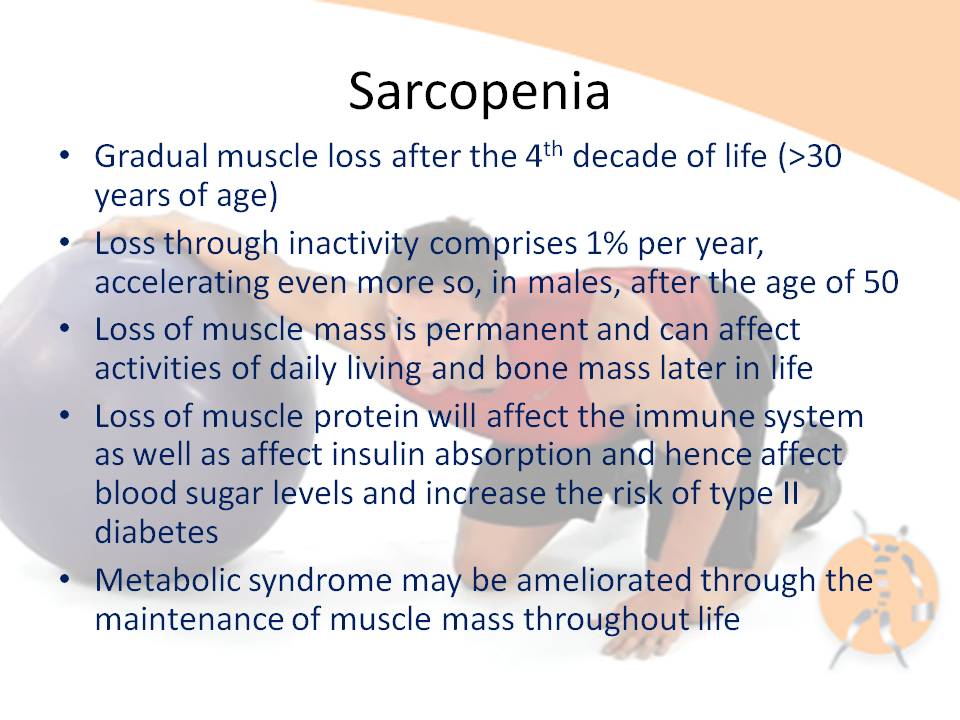
As examined previously, a deterministic chaos was suggested as the TNF alpha oscillatory mediator of nuclear factor-κB (NF-κB) activation and subsequent transcription, is that which influences mitochondrial dysfunction. Investigators have found that MuRF-1, a muscle specific E3 ubiquitin ligase is an important regulator of ubiquitin-mediated protein degradation in skeletal muscle (Bodine et al., 2001 Science. 294, 5547, 1704-8). Transcriptional factors, NF-κB and FoxO3a translocate into nucleus and subsequently upregulate transcriptional activities of MuRF-1 under certain pathological conditions (Cai et al., 2004, 119, 2, 285-98.; Gumucio and Mendias, 2013 Endocrine, 43, 1, 12-21. Perry et al., 2016, Ex Immunol Rev, 22, 94-109) such as sub-clinical inflammation associated with obesity and diabetes. This suggests that inhibition of NF-κB and/or FoxO3a pathways is a promising target for preventing muscle atrophy. An exercising mouse diabetic model (Liu & Chang 2018, Front Physiol. 9, 636) has demonstrated significant muscle changes in, an eight weeks moderate-intensity exercise (5.2 m/min, 1 h/day, and 5 days/week for a total of 8 weeks) program, where mice ran on a motorized treadmill (30 min with 0° slope) and exercise duration was gradually increased from 30 min to the target of 1h (0° slope). These included improved tibialis anterior muscle mass, suppression of NF-κB signalling, as well reduced pro-inflammatory markers IL-6 and TNF-alpha.
mm = control mice, db/dh = diabetic mice, Ex = exercise https://www.ncbi.nlm.nih.gov/pmc/articles/PMC5987703/
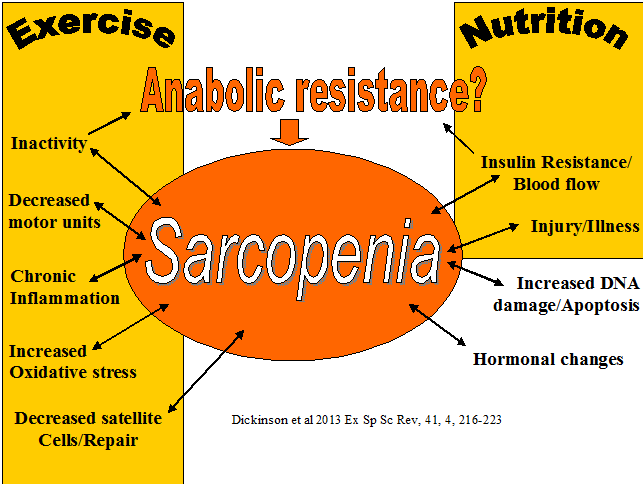
So, ideally, we are exercisers for life. However, don't despair if you haven't been into fitness, it's never too late. You still have the ability, to slow down sarcopenia, as well as hypertrophy the remaining muscle. Remember, it's not just about the amount of protein, but also the thermodynamics of metabolism and repair which dictate our inflammatory-immune responses. This dynamic allows for the deployment of the immune system during a time of crisis.

Muscle Glutamine
It has been established that glutamine is an important fuel for lymphocytes and macrophages. Several lines of evidence suggest that glutamine is used, at a very high rate by these cells, even when they are quiescent. It has been proposed that the glutamine pathway in lymphocytes may be under external regulation, partly because of the supply of glutamine itself. Glutamine stimulates in vitro lymphocyte proliferation, lymphokine activated killer cell activity, and cytokine production.(Ardawi MS & Newsholme EA 1984, Biochem J, 217, 289–96; Rohde T, Ullum H, Pedersen BK, et al. 1995 J Appl Physiol, 79, 146–50; Rohde T, MacLean DA, Pedersen BK. 1996 Scand J Immunol, 44, 648–5036)
Skeletal muscle is the major tissue involved in glutamine production and it is known to release glutamine into the bloodstream at a high rate. It has been suggested that the skeletal muscle plays a vital role in maintenance of the key process of glutamine utilisation in the immune cells. Consequently, the activity of the skeletal muscle may directly influence the immune system. The glutamine hypothesis suggests, that during intense physical exercise, or in association with surgery, trauma, burn, and sepsis, the demands on muscle and other organs for glutamine is such that the lymphoid system may be forced into a glutamine debt, which temporarily affects its function.
Muscle-immune conversion

"The human immune system is a highly intricate network of cells and molecules designed to keep the host free from infection and disease. Exercise is known to have a profound impact on the normal functioning of the immune system. Having higher age and sex-adjusted scores for cardiorespiratory fitness and performing regular exercise of moderate- to vigorous-intensity exercise that fall within ACSM guidelines has been shown to improve immune responses to vaccination, lower chronic low-grade inflammation, and improve various immune markers in several disease states including cancer, HIV, cardiovascular disease, diabetes, cognitive impairment and obesity. The ongoing COVID-19 pandemic has raised a lot of questions regarding how exercise can protect us from infection by boosting immunity. This is becoming more pertinent as many of us have restricted access to the gyms and parks where we would normally undertake exercise and physical activity regimens. Compounding this problem are the known negative effects of social isolation and confinement on immunity. Glucocorticoids such as cortisol are elevated during periods of isolation and confinement and can inhibit many critical functions of our immune system. When we are stressed, the ability of our T-cells to multiply in response to infectious agents is markedly reduced, as is the ability of certain effector lymphocytes (e.g., NK-cells and CD8+ T-cells) to recognize and kill cells in our body that have become cancerous or have been infected with viruses. It is also vitally important that our immune cells maintain their ability to redeploy so that they may ‘patrol’ vulnerable areas in or body (e.g., the upper respiratory tract and the lungs) to prevent viruses and other pathogens from gaining a foothold. This process is also important to minimize the impact of the virus and to expedite viral resolution should we become infected." (Richard J. Simpson, Ph.D., FACSM Mar 30, 2020)
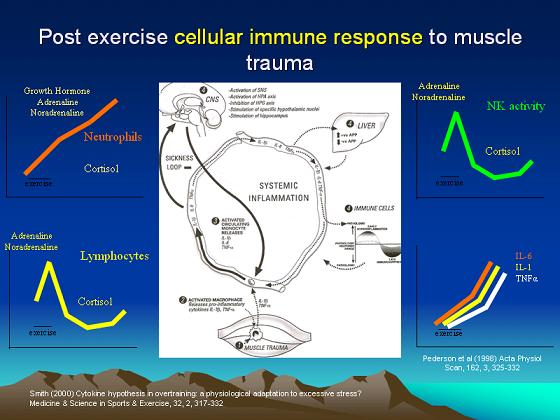
Note, a relationship exists during exercise with adrenaline, noradrenaline, neutrophils and natural killer cells with cortisol levels post exercise. Cortisol having an inhibiting/controlling influence on the immune pro-inflammatory response. Interesting to note that cytokine levels continue to rise during and after exercise. Hence, the duration of the period of the perturbations, of the immune regulating mechanism, could be assumed to have variable damping mechanisms, with higher or lower frequency, depending on the frequency, intensity and duration of exercise, as well as the period of recovery between sessions of exercise.
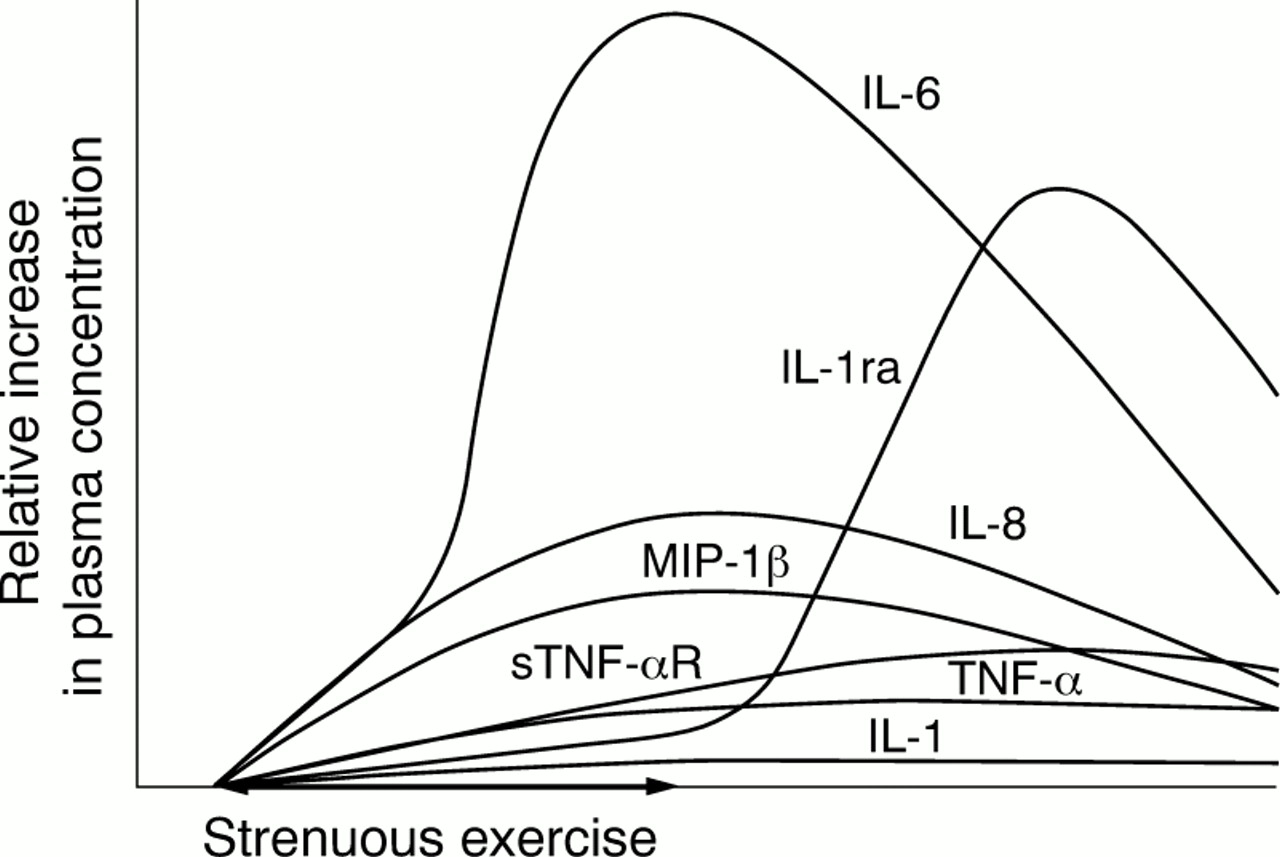
Pedersen & Toft (2000) https://bjsm.bmj.com/content/34/4/246#block-system-main
"Each bout of exercise, particularly whole-body dynamic cardiorespiratory exercise, instantaneously mobilizes literally billions of immune cells, especially those cell types that are capable of carrying out effector functions such as the recognition and killing of virus-infected cells. The mobilized cells firstly enter the blood compartment from marginated vascular pools, the spleen and the bone marrow before trafficking to secondary lymphoid organs and tissues, particular to the lungs and the gut where increased immune defence may be required. The immune cells that are mobilized with exercise are primed and ‘looking for a fight.’ Their frequent recirculation between the blood and tissues functions to increase host immune surveillance, which, in theory, makes us more resistant to infection and better equipped to deal with any infectious agent that has gained a foothold. Exercise also releases various proteins that can help maintain immunity, particularly muscle-derived cytokines such as IL-6, IL-7 and IL-15. The cytokine IL-6 has been shown to ‘direct’ immune cell trafficking toward areas of infection, while IL-7 can promote the production of new T-cells from the thymus and IL-15 helps to maintain the peripheral T-cell and NK-cell compartments, all of which work in concert to increase our resistance to infection. Exercise is especially beneficial for older adults who are more susceptible to infection in general and have also been identified as a particularly vulnerable population during this COVID-19 outbreak" (Richard J. Simpson, Ph.D., FACSM Mar 30, 2020)
Over-training - variation between sympathetic and para-sympathetic tone


Chaos Theory - non linear dynamics
The key to exercise is not to over-train. But, to induce a response, you need to stress the system i.e create a perturbation. This fact is important in the whole spectrum of people, from the severely de-conditioned to the highly trained. Classic signs of over-training are waking tired in the morning, 'non-restorative sleep', and irritability, 'three bastards in a day or ask your partner or significant other'. The three bastards pertained to a time prior to lock-down, where it was said if you met a person who you really didn't like, then that was unfortunate, if you met a second one, in the same day, that was doubly unfortunate and if met a third, then it wasn't them, but you. Exercise requires an 'allostatic' (restorative) response by the body to mental or physical stress (see below). It's almost akin to chaos theory. Simple perturbations of the system oscillate back to the midline (linear dynamics), with the occasional outlier (non-linear dynamics). The more extreme the perturbations, the more extreme the damping mechanisms need to be, for the non-random predictive oscillations, such as mechanically intense and/or repetitive (ie metabolic, irrespective of intensity) unaccustomed exercise. But even in accustomed exercise, in a healthy body, there will be a random 'outlier'. The random outlier, in chaos theory, is not so random, but subject to three orthogonal variables, one of which is a 'locus of control'; or a 'damping manifold'. One system has influences on nearby systems. Simply stated, it is proposed that progressive exercise, building up of endurance and resistance improves our 'damping manifold' on a ratio by ratio basis. The more finely tuned, the more amplified the ratio. Such damping, or control systems, are potentially also employed in non-accustomed exercise, metabolically compromised situations, cognitively confronting and/or during immune challenges such as COVID-19.
Deterministic chaos and cytokine modulation of cytokines
In a seminal paper, ' A Systems Model for Immune Cell Interactions Unravels the Mechanism of Inflammation in Human Skin' the authors (Valeyev NV, Hundhausen C, Umezawa Y, Kotov NV, Williams G, Clop A, et al. 2010), used of deterministic chaos to explain cytokine oscillations for the modulation of one other (PLoS Comput Biol 6, 12, e1001024. https://doi.org/10.1371/journal.pcbi.1001024). Their model provides a quantitative description of multiple immune reactions based on cytokine profiles, including a model of 'immune system switching', similar to 'modal switching' between various immune states described earlier for the tuning of the NF-κB system by TNF. Specifically, the inter-dependency of the immune system is highlighted using two cytokine oscillations which can maintain a 'stable' homeostatic state as well as 'switched' to an activated stable homeostatic state, of higher cytokine concentration levels, in a dose dependent manner. The model used is the autoimmune inflammatory skin condition, Psoriasis.
Skin inflammation associated with Psoriasis : whilst healthy skin contains inflammatory cytokines and macrophages, the inflamed skin contains a multiple higher concentration of those substances.
This is a super interesting schematic, especially when examining IL-10 (anti inflammatory) and IL-22 (involved with cell survival and synthesis of anti-microbials for wound healing). These could be, speculated as, potential controlling 'outliers'. It also suggests that examining one cytokine response against it's baseline is relatively simplistic and potentially erroneous if it isn't examined with baseline changes of other coexisting cytokines.
Dose Dependent Cytokine Production: Homeostasis occurs when the concentrations of cytokine production of two inter-dependent cell populations meet. Importantly this is circular, cytokine A stimulates cytokine B and vice versa.
Immune - Subsystem Response : Green lines are trajectories and convergence of cytokine A and B. Purple spot and dotted line are the stable 'homeostatic' point. Arrow heads indicate the direction of non-equilibrium cytokine concentration towards the stable point and equilibrium. Situation B, where a small perturbation of one cytokine leads to a 'divergence' of the trajectories and in this case a three fold perturbation of the other (numbered 3). In C and D we can see a response two fold larger than the applied spike, meaning that a small impulse can lead to a large reaction both in healthy (and inflammatory) states.
Presumably, the perturbating stimulus can arise during exercise, as cytokine release from muscle damage, such as eccentric exercises, and/or metabolic factors from oxidative processes (REDOX). Additionally, as the second law of thermodynamics still applies, the influence of heat shock proteins should also be considered.
Cytokine Trigger Dynamics: Two points of homeostasis (H1 and H3 'stable') after one cytokine concentration moves out of phase (H2 'unstable') with the other. Trajectories 1 and 2 are from a lower to a higher and a higher to lower stable state (resp) with the latter occurring due to the application of cytokine B (depicted in E and F). The initial onset of signalling of cytokine A is depicted in trajectory 1, C and D.
Presumably, multiple points of homeostasis could exist when confronted with varying degrees (concentrations) of inflammation and repair.
Oscillatory Cytokine Concentration Dynamics : one of the 'unstable' solutions forms a limit cycle of cytokine oscillations, either around a stable point of convergence or a point of homeostasis; or any other point of 'unstable' cytokine concentrations.
What is amazing, is how these nullcline diagrams look like synoptic charts. (remember Edward Lorenz and the Butterfly effect eluded to much earlier)
Small amplitude perturbation results in oscillations whereas a larger amplitude results in a single spike. Noteworthy is that small perturbations result in a many fold greater response.
Small perturbation results in a return to homeostasis.
Resolution : one stable point at a lower cytokine concentration.
Mathematics of 'deterministic chaos' and cytokine immune inter-dependence (Valeyev et al 2010)
The rate of cytokine uptake Mol/sm2 by a cell population is proportional to the number
of receptors bound to the cytokine, multiplied by the total number of receptors on the cumulative cell surface:
Full immune model equation is thus given by the formula
The complete dynamic mathematical equations of interactivity between inter-dependent cytokine populations
(A Systems Model for Immune Cell Interactions Unravels the Mechanism of Inflammation in Human Skin' (Valeyev NV, Hundhausen C, Umezawa Y, Kotov NV, Williams G, Clop A, et al. 2010), and their use of a 'deterministic chaos' mathematical model to explain cytokine concentration inter-dependency (PLoS Comput Biol 6, 12, e1001024. https://doi.org/10.1371/journal.pcbi.1001024).
Orienteering and the 'uncontrolled manifold hypothesis' of motor control and learning (cortical resource optimisation)
Orienteering is a sport requiring the efficient movement through the forest, at high speed, along an optimal route, using a calm cognitive state during a high physiological state. Another paradox? Importantly, expertise in orienteering requires decades of experiential learning.in a potentially chaotic environment. This chaos being physical, as in uneven terrain, varying vegetation and varying geological formations. Additionally, it's potentially cognitively overloading, in the sense of navigating in potentially unique and new terrain, requiring totally different central nervous system (CNS) strategies to what they are used to. To learn, is to delve into the unknown........and the cognitively superior strategy may win over the physically stronger individual (game theory).
These cognitive - mechanical concepts are entertaining when considering chaos theory and infinitesimal controlling mechanisms. Furthermore, simultaneously induced mental and physical stress, as well as exposure to environmental pathogens, adds another variable of considerable inadvertent influences on immune responses, which vary depending on the 'selective qualitative experiences' of the individual from their years of competition, conditioning, mental health and training.
Game theory and variability of the 'outlier' for adaptability
It is interesting to speculate that both the novice and elite orienteer are more susceptible to infection because they both have more rigid motor patterns, are less inclined to take risk and therefore are less likely to be confronted with error generating patterns of correctability? The assumption underlying game theory is that there is a resource over which there is a conflict.
A factor which the orienteering paradigm partially defines, and identifies, is the freedom of thought and movement. That fact that many investigations are looking at exercise and the immune system, using captive animals, might be problematic in itself. These animals are in a predictable environment, which for this purpose is ethical, reductionist and conforms with rigorous scientific research protocols, which is practical, as it reduces the number of 'dependent' and 'independent' variables. However, from an evolutionary point of view, and from the perspective of the example used here, where in orienteering, more may be learnt and fine-tuned, in an unpredictable variable environment, whereby the use of caged animals may be limiting the validity of the paradigm (deterministic chaos) which is under investigation. Moreover, in terms of cognition, confinement is a stressor. Moreover, the calmness and clarity of thought needed in the freedom of orienteering (running and navigating) through the landscape can be considered the antithesis of the caged animal.
Our ancestors were striving for energy security through appeasement, subjugation or dominance over other life forms, both internally and externally. In this sense, the 'freedom to navigate and move' paradigm, suggests that our evolutionary forefathers, used their muscles, to propel themselves out of Africa, for 'greener gut biome pastures'. Therefore, maintaining good health in new and potentially 'dangerous environments', involved an unpredictable deterministic variable. As it pertains to cognition, it is an intriguing idea that a motor-sensory curiosity, drove a mechanism, which simultaneously caused muscle hypertrophy, and endowed the muscles with enhanced glutamine and cytokine concentrations, which were needed, if an immune response to pathogens was encountered. Additionally, it is conceivable, that the gut biome was driven by the laws of thermodynamics, in the search for energy. Subsequently, the gut-environment interface provided the interaction needed, to both provide energy for movement, allowed the immune system the encounters needed to flourish, and achieved the abundance of gut species required, in a variety of situations, from feast to famine. Therefore, the gut - muscle - brain cognitive pathway, was driven at a conscious and subconscious level to meet the demands of thermogenesis and immune competency, resulting in collective gain amongst all cells which required energy. Akin to Zen Buddhist philosophy, suggestions are, that the constant sensation of mild hunger, drives the clarity of thought needed, to strive for all encompassing meaning and ultimate enlightenment. Yoga, using animal poses, to stretch muscles and enhance breathing, whilst calming the cognitive state, may be based on the same primeval paradigm, of what is good for muscles is also good for the gut and brain.
The 'dove and hawk' paradigm in game theory is interesting. If a hawk and dove compete over the same resource, direct open conflict of the dove with the hawk would be suicidal. Hence, one would think it's better to be a hawk. However, what if two hawks meet, there will be only one winner and potentially both could be injured for the same net gain. Whereas, if two doves meet, they may postulate and gesticulate and eventually one may retreat or they may even share the resource, with the less risk of injury. Hence, the stakes for the Hawk are much higher. Humans have always been in conflict for resources. Does this mean that the immune system is tuned by adaptation to 'individual' resource dominance? Or, as people developed and evolved as tribes, into communities did our immune systems come to share pathogens, which may have entailed 'herd immunity' but at the same time, gave humans a lack of species variability, making them more vulnerable to 'novel' pathogens? Even more intriguing, is the notion that within a group of similar, the weakest may be driven out, seeking new resources, which in this case means new environments and new pathogens, invoking an 'immune enriching' response?
Continuing with the 'hawk dove' analogy, if we have too many hawks in a population, the consequences are constant conflict. If too many doves, constant compromise. In fact, a single dove in a hawk environment might be totally ignored, as might a single hawk in a dove environment. Thus, the apparent weaker species could be at an advantage when it's the outlier? To carry this further, we could postulate that the hawk is more prone to injury. Does this mean that in humans, the more dominant 'aggressive' individuals have an immune system which is more in demand for potential or actual injury? Whereas, the postulating dove, activates it's immune system minimally when it's performing some form of escape or deception? Interestingly, most animal conflict encounters, go out of their way to avoid injuries to themselves. Regardless, it's likely, that in both 'stressful' situations, the immune and musculoskeletal systems are activated, in a proportionately preparatory manner. Thus, the stronger the variability in the individual, the more proportional, and therefore robust their immune response.
Needless-to-say, a balance between hawks and doves needs to be established for mutual gain to take effect. In terms of the human genome, it's very underwhelming, yet it has evolved to a complex multi-cellular life form, still totally dependent upon trillions of unicellular life forms within the individual gut biome. This flies in the face of Darwinian evolution and the survival of the fittest, in that simple life forms keep complex life forms alive. Even, within the gut biome, there appears to be a symbiotic relationship with parasites and a healthy immune system (i.e. parasitic exposure appears to reduce auto-immune disease such as allergies). A 'simple' multitude (gut biome) balanced with a 'complex' minority (human DNA). Humans eat to feed their gut, their gut breaks down energy from food, which in turns propels the human, with the energy gained, to find more food. A net win win situation using the gut-brain-muscle axis.
In terms of muscles, a simplistic view, (using this analogy) would be that the glycolytic (fast twitch) muscles are the 'hawks', whereas the oxidative (slow twitch) muscles are the 'doves'. The glycolytic muscle fibres tend to be ballistic two joint (mechanical) energy straps which propel the body, whereas the oxidative endurance (metabolic energy) muscles are one joint deep muscles tending to stabilise joints and prevent injury. Therefore, the 'hawks' make the large perturbations whereas the 'doves' dampen them. Luckily, there is a muscle glycolytic fibre type which can become more oxidative (endurance power). Hence, 'hawks' which can be tempered towards a 'dove' like mentality....a balance between metabolic and mechanical energy systems, where the mechanical perturbations stimulate the metabolic-immune response.
In terms of neurophysiology, this analogy could potentially be taken further, where the sympathetic nervous system is the 'hawk' and the para sympathetic nervous system are the 'doves'. Fortunately, within the sympathetic nervous system there are self modulating ('dove' like) perturbating mechanisms. But it could be envisaged that putting a 'hawk' amongst the 'doves' wakes them up from a state of complacency. Similarly, 'staleness' is an 'existential threat' to any training regime and to any 'immune system'.
Cortical 'resource' representation, mapping, in knee muscles, after injury
In the context of physiotherapy, a simple model of game theory might be applied to the problem of anterior knee pain. Commonly, this problem is associated with pain at the front of the knee when it is in flexion (a bent position), such as stair climbing, cycling, squats, etc. The conventional wisdom is that the patella (knee cap) is mal-aligned due to a lack of medial (VMO) muscle activity pulling the patella inwards and too much activity of the lateral thigh muscle (VL) pulling it outwards. Game theory could be applied here as the muscles compete for finite cognitive territory to represent their individual (rather than mutual) function, where ultimately neither muscle gains, both loose out to pain generating cortical representations, reducing fidelity and increasing noise in the system. However, if the muscles were to readjust for a functional outcome, they would do so through gaining a synergy of proportionally shared resources (power sharing), hereby a dominance over pain and dysfunction is gained. Physiotherapists, use functional electrical muscle stimulation (FEMS) to give added 'resources' to the VMO, which then can be used during functional exercise training. As the system adjusts, the pain improves and the gain experienced by all the muscles convinces the VL to fire with the VMO, hamstrings and gluteals in a functional synergy for stairs, cycling (see previous), squats, etc. Hereby, game theory would suggest all have won and injury has been avoided.
Investigations in Australia, by the Brazilian, Abrahao Baptista (2014), looking at 40-50 year old women with chronic knee pain, demonstrated the significant reduction in the volume of muscle representation in the cerebral cortices, as well as changes in the location of these muscle representations (see below). Moreover, in the context of neurons who 'fire together, wire together' it would be of utmost importance to find exercises that act as functional synergies and relate in a real or a 'virtual' manner to the environmental context in which they need to fire. This also becomes particularly important in psychological behavioural issues of 'fear avoidance' and disuse atrophy. Ideally rehabilitation stimulates 'wiring and firing together' of goal-oriented regions of the brain rather than those which are directed at fearing and avoiding movement. Therapist must instil confidence through their choices of treatment whereby they outline and hence monitor the expectations of outcome.
In this picture, it is clear that, the volume of the quadriceps muscle representation in the cortex of people with anterior knee pain (PFP = patello femoral pain) is dramatically reduced. Not seen here, but demonstrated in other research, is the phenomenon of pain processing altering cortical activity in various brain areas (see below).

Individuals with patellofemoral pain (PFP) had reduced map volumes and an anterior shift in the M1 representations, greater overlap of the M1 representation and a reduction in cortical peaks across all three quadriceps (RF, VL, VMO) muscles compared with controls.(Te et al 2017 Pain Medicine, pnx036, https://doi.org/10.1093/pm/pnx036). Physiotherapists use FEMS (30HZ functional electromuscular stimulation) to enhance muscle cortical representation in the brain, which improves function and in turn improves pain. FEMS stimulation readjusted cortical mapping to that seen in asymptomatic individuals. Alternatively, therapists use trans-cortical stimulation of the pre-frontal cortex to improve 'executive function' and pain.
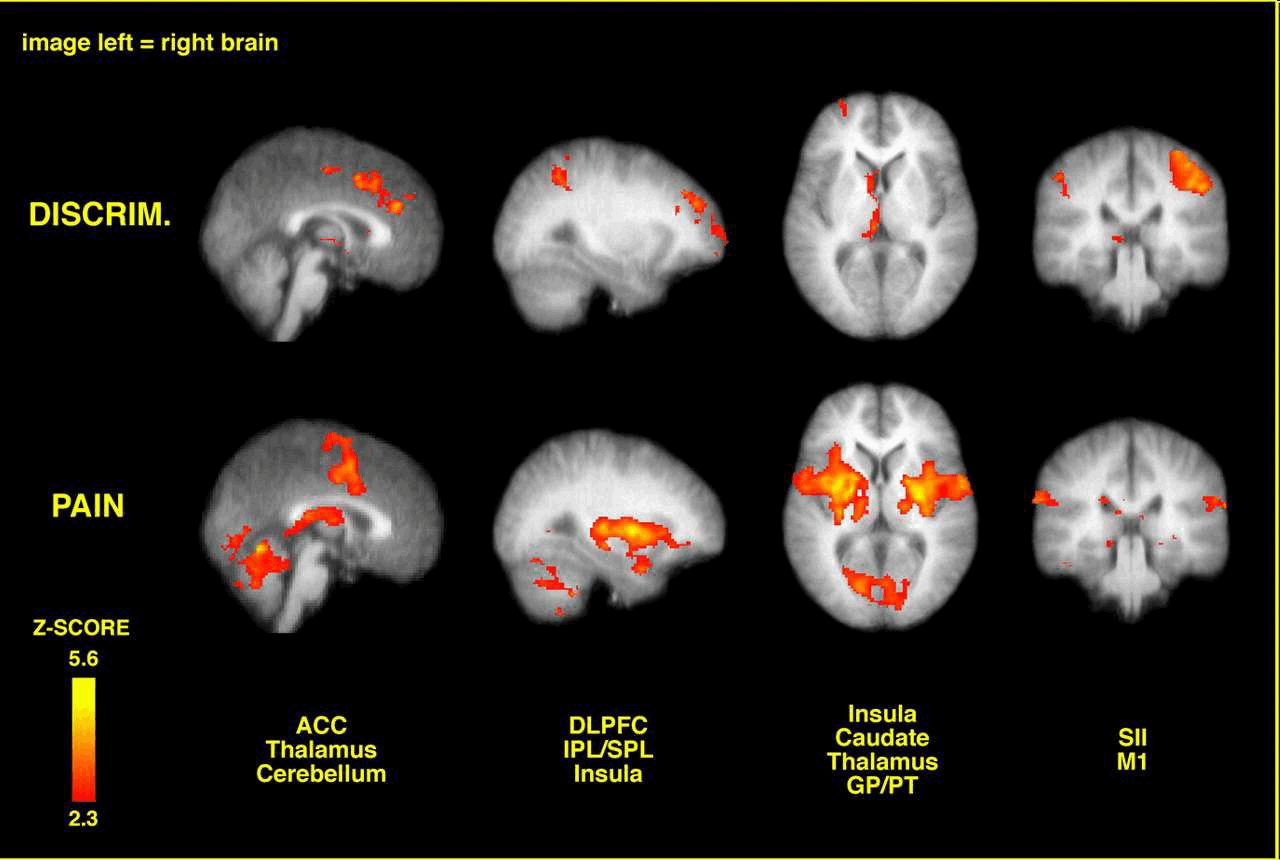
Brain activation related to spatial discrimination of noxious stimuli is distinct from that related to perceived pain. These images are located at x = 0 mm, x = 30 mm, z = 5 mm, and y = –30 mm in standard stereotaxic space. IPL/SPL, Inferior parietal lobule/superior parietal lobule; GP/PT, globus pallidus/putamen; M1, primary motor cortex; DISCRIM., discrimination. (Oshiro et al 2007 J Neuroscience, 27, 13, 3388-3394)
Abrahao Baptista (2020) and his colleagues are conducting research into trans-cortical stimulation and vagal (para-sympathetic) nerve stimulation in the treatment of patients with COVID-19. They are basing their assumptions and working hypothesis on some positive results a rheumatologist has had with this methodology for the treatment of auto-immune inflammatory disease. COVID-19 has many of the hallmarks of an auto-immune disease, including the cytokine storm. This treatise has argued that sympathetic, rather than para-sympathetic, stimulation is necessary to add a deterministic chaotic input which perturbs the immune system into action. It would be intriguing to speculate a large perturbation between sympathetic and para-sympathetic can also activate the immune response. In this case, the illness has already set the sympathetic nervous into a heightened chaotic state, which needs additional buffering (redundancy) from the vagal nerve stimulation.
Exercise induced disease
"The road to hell is paved in good intentions" (Henry G. Bohn's A Hand-book of Proverbs in 1855)
The chaos of infections and the assault on the immune system has been seen amongst endurance athletes, such as cyclists, endurance road runners and orienteers. Saturation of inflammatory immune markers by uncontrolled mechanical irritation or infectious diseases from ticks found in the forests of Scandinavia, have been espoused as a theory behind extremely fit people having catastrophic immune consequences.

After intense long duration exercise, the functions of (CD 16 natural killer) NK and (CD 19) B cells are suppressed. Thus, the NK cell activity (the ability of NK cells to lyse a certain number of tumour target cells) is inhibited. Furthermore, antibody production in the circulation is inhibited, and local production of secretory IgA in the mucosa is inhibited (Pedersen BK & Nieman DC. 1998 Immunol Today, 19, 204–6)

Too much of a good thing can become a bad thing. Where does the balance lie? In the chaotic state?
Anti - carcinogenic effects of exercise
Alternatively, it has been shown, albeit in mice, that aerobic training activates Interleukin 10, which is considered to have colon anti-carcinogenic effects (Frajacomo et al 2016, Med Sc Sp Ex, 47, 9, 1806-1813). This supports reports on the association of aerobic exercise and marked reduction of colon cancer risk in humans (Boyle et al 2011, Cancer Causes Control, 22, 12, 1647-1658; Cerin et al 2005, Cancer Epidemiology Biomarkers Rev, 14, 4, 1000-1002). A mechanism for the effect of exercise is the production of Interleukin 6 (IL-6) as a result of muscle damage during exercise, which has been demonstrated to stimulate anti-inflammatory cytokines such as IL-10 (Benatti et al 2015, Nat Rev Rheumatol, 11, 86-97). Importantly, as discussed previously, chronic increases in IL-6 are related to frailty in the aged population. However, in the acute scenario, significantly, the release of pro-inflammatory substances, stimulate the release of anti-inflammatory substances elsewhere, as well as the stimulation of the controlling mechanisms, in the location, where the pro-inflammatory substances are released.
So, what are the controllers? When is too little recovery, too much exercise? Where and what are the balancing mechanisms of the cytokines? What behavioural methods can we use to improve our immune response?
Allostasis

Neural componentry and chaos
Several investigations, examining surface EMG (electromyographic activity of muscles) using chaos and entropy theory, exist. Investigators, examining facial paralysis (Xiong et al 2014, Robot Intelligence Technology and Applications 2 pp 805-819), used chaotic analysis to extract new features of EMG, including correlation dimension, Lyapunov exponent, approximate entropy and so on. They discovered that the maximum Lyapunov exponents are all greater than 0, indicating that sEMG is a chaotic signal. Interestingly, correlation dimensions of sEMG on healthy sides are all smaller than that of diseased sides; and inversely, the approximate entropies of healthy sides are all greater than that of diseased sides. Consequently, they concluded that chaotic analysis can provide a new insight into the complexity of the EMG and may be a vital indicator of diagnosis and recovery in the assessment of facial paralysis
Application of chaos theory to a model biological system was used to examine evidence of self-organization in the intrinsic cardiac (heart) nervous system (Skinner et al 1996, Integr Physiol Behav Sci. 31,2,122-46). Using a rabbit model and ischaemic events, on electrical activity in and around the heart, they found that it's the neutral organization that determines the specific beat-to-beat pattern of cardiac behaviour. This was demonstrated in the independent regulation of the RR intervals (chronotropy) and the corresponding QT subintervals (inotropy), as the former defines the rate of contraction and the latter has a linear negative correlation with the peak pressure inside the contracting ventricular muscles. During accumulating ischemia/anoxia, dimensional fluctuations of the two sub-interval series as correlates of adaptation-dependent self-organization and reorganization in the underlying intrinsic cardiac nervous system, was seen.
COVID-19 and Allostasis
As we know, organs exposed to the outside world, such as the digestive and respiratory tracts and skin have a high functional immune component, which acts as an interface and barrier to external pathogens. At the outset of this pandemic, COVID-19 was considered a lung condition. However, as time went on, hypoxia and diffusion issues began to be noted, including oxygen blood saturation levels of 50%, skin changes in the periphery (esp toes) resembling lesions seen in chilblains and chicken pox, notably in young people (20-40 years of age). Additionally, vascular clotting began to be seen in this younger population leading in some cases to stroke. Furthermore, longer gastric emptying was seen which may or may not be an immune response. It has also been noted that it's highly contagious, human to human, animal to human and human to animal, as well as being highly unpredictable, in who survives and who does not. Since it is a 'novel corona virus' we do know that we need our 'innate immune response' to fight it. That's potentially why it generally doesn't affect children (however there have been exceptions) and it's mortality rate is much higher amongst the elderly and those who are already metabolically or immune compromised. Furthermore, psychological stress from confinement has also been seen. Further mental health issues, from potentially the extreme viral exposure amongst essential services, and/or extreme exhaustion amongst health care workers has also been acknowledged. Psychology and mental stress, such as that from Post Traumatic Stress Disorder (PTSD) is thought to reduce the number of naive T cells, meaning a reduced ability to launch an immune response to a novel pathogen and is also thought to contribute to increased susceptibility to auto-immune disorders (Dr. Annette Sommershof). Therefore, the essential question, is it purely metabolic and cognitive exhaustion, and/or exhaustion of the immune system from exposure to COVID-19? Would people (orienteers) used to mental stress, whilst exercising, better be able to launch a balanced immune defence?
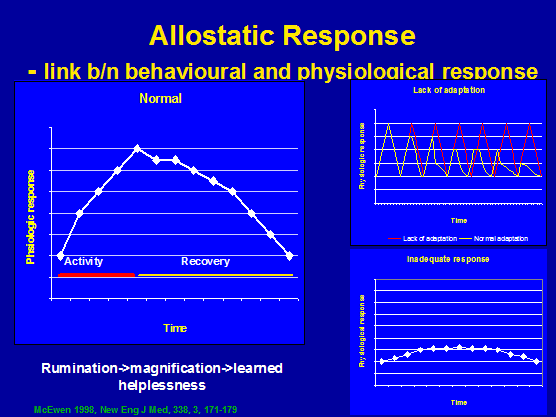
Adaptation has a damping mechanism whereas lack of adaptation does not. Additionally, it is important to launch a stimulus or perturbation strong enough to activate an appropriate balanced response.
Recovery and sleep routine
It is critical to maintain a healthy sleep pattern if we wish to maintain a healthy immune system. Routines of the day can become good anchor points for the body. These include eating regularly and sleep.
Psychology of the immune state
Psychologically, we also need to be prepared for what lies ahead. Currently, we're fighting an unknown assailant. A virus which our adaptive immune system has never seen before. This means that we must rely on our innate immune system, the one we're born with, to adapt it's RNA to a DNA antigen which can fight the disease. However, remember psychological stress of 'perceived dangers' such as job and income insecurity, fear of the disease, isolation and loneliness can affect where and when we deploy our cytokines. Importantly, when or if we are exposed to COVID-19, ideally your immune system is able to react and isn't already exhausted. Part of your exercise regime may need to include meditation and Yoga.
Diet
Another, important way of avoiding an 'exhausted immune system' is diet. Generally, a well balanced diet is important. Moreover, during exercise our immune system is enhance, whereas post exercise it can be depressed. One of the best ways to ameliorate this, is through amelioration of metabolic demands with pre-exercise, during long exercise and/or immediate, post exercise calorific intake, thereby avoiding metabolic imbalance and potential catabolic (break down) reactions, whilst promoting anabolic (building) ones.


Besides nitrogen balance, contracting skeletal muscles, in sports such as running, are a major source of increases in the circulating concentration of the cytokine, Interleukin-6 (IL-6), seen during exercise. It's appearance decreases with the ingestion of glucose and with endurance training. Low pre-exercise glucose levels, results in greater transcriptional activity of IL-6 gene in muscle and higher IL-6 concentrations during subsequent exercise, which in turn stimulates hepatic glucose production and fatty acid mobilisation and oxidation. Thus, IL-6 may be a carbohydrate sensor, mobilizing substrates and/or augmenting substrate delivery to working muscles. Interestingly, IL-6 concentrations increased with increasing intensity of exercise, whereas tumour necrosing factor alpha (TNFα) did not (Scott et al 2011, Med & Sc Sp & Ex, 43,12, 2297-2306), suggesting a specific and therefore potentially finely tuned immune response.
The gut-muscle-immune axis: a ratio of innate and adaptive immune substances?
It could be simply argued that all systems are oscillatory, finely tuned through damping mechanisms and that the reference points of the tuning are not only defined by extent of the oscillation (linear dynamics) but also by the randomness of non-cycling oscillations. Mechanically, this may be analogous to a mass-spring system defined by Hooke's Law, but immunologically it's potentially defined by the balance between up-regulatory and down-regulatory immune pathways of the adaptive and innate systems?
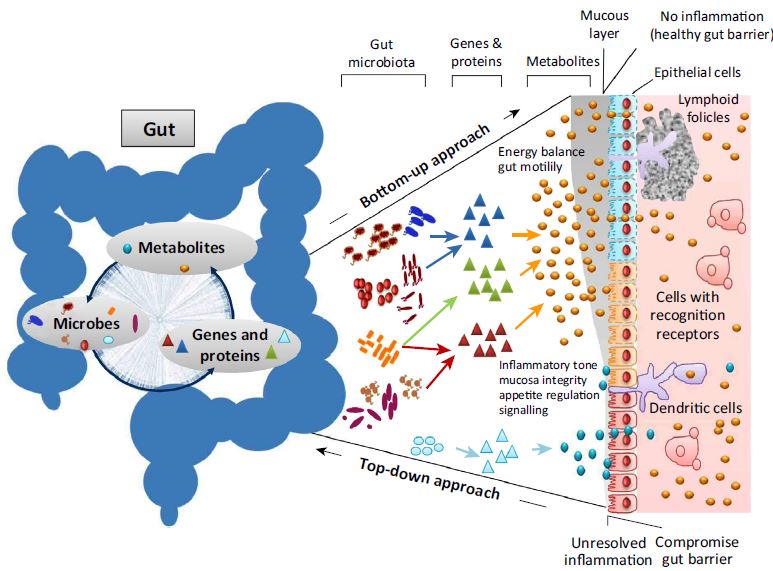
https://phys.org/news/2016-03-gut-microbiome-remarkably-stable.html
Using a yeast and bacteria (E.coli Hsp60 homologue known as GroEL) model, a tenuous relationship has been proposed between HSP60 and HSP70 chaperone proteins, as they are both vital for mitochondrial proteostasis, being involved in the import and/or the folding of almost 50% of the mitochondrial proteins. Moreover, both proteins were found to carry out various functions via interaction with a large number of extra-mitochondrial complexes. In the case of HSP 70, its mitochondrial functions are performed by the classical mechanism known for all HSP 70, utilising a protein and a nucleotide exchange factor. With regard to mitochondrial HSP 60 and HSP 10, it is notable that this pair developed a unique reaction cycle in the gut (Jebara F et al 2017 DOI: 10.1002/9780470015902.a0027152), a bit like the relationship of HSP27 with HSP72.
The amount of human DNA is totally under-whelming compared to that of the intestinal mircobiome. The intestine is composed of a complex ecosystem of more than trillions of bacteria, viruses, fungi, Protozoa and Archea that live in a symbiosis with the host in the gut lumen. The healthy microbiome include a limited number of highly represented taxa, such as Bacteroides and Prevotella and a large number (>2000 to date) of minor players with low representation but high metabolic activity. These latter 'players' with high metabolic activity are likely to be the ones which interact with the musculoskeletal system. In older age, species richness and diversity of the microbiome decline, inter-individual variability increases, and resilience to perturbations are reduced. Apart from aging, the presence of acute and chronic diseases affects the microbiome. In the aging and/or unhealthy microbiome a 'dysbiosis' can occur, where a disruption of the gut balance 'symbiosis' results in intestinal permeability, allowing bacteria, or bacterial toxins and metabolites to enter the host circulation thereby promoting sub-clinical inflammation. Clinically, sub-clinical inflammation has been referred to as 'inflammaging' and 'immunosenescence'.
All components of the innate immune system exhibit profound changes during aging. Monocytes are classified into three subtypes: classical, non-classical, and intermediate. During aging the number of nonclassical CD14+CD16+ monocytes increases, indicating a shift to senescence, proinflammatory phenotype with short telomeres. Similarly, a shift in macrophages from immunoregulatory M2 macrophages to proinflammatory M1 macrophages. Furthermore, Natural Killer (NK) cells are innate lymphoid cells, where 2 subtypes are present. CD56bright cells are immature cells providing an immune regulatory function, and CD56dimCD16+NK cells which produce high levels of IFN-gamma, associated with a potential dysregulated cytokine production, as CD56bright cells decrease with aging. Moreover, exercise appears to have the opposite effect to aging, where a reduction the number of nonclassical CD14+/CD16+ monocytes, was found, in a 12 week combined strength and endurance training program.
The adaptive immune system changes with aging. Although the total number of T-cells remains constant throughout life, the two main cellular subtypes CD8+ cells increase, whereas CD4+ decrease. This phenomenon is part of the immune risk profile (IRP) and indicates immunosuppression in certain diseases. Reduction of naive CD4+ cells is driven by thymic involution from chronic antigenic stimulation and inflammation. Inflammaging chronically increases IL-6 and TNF-alpha. Improved T cell function has been reported in elderly runners who trained for an average of 17 years, and thus improvements in the adaptive immune response. In 102 male participants between 18 and 61 years of age, with above-average VO2 had fewer senescent CD28-CD57+, CD4+, and CD8+ cells and increased number of naive CD8+ T cells. Acute bouts of exercise induces cell death in apoptosis-resistant senescent T-cells. Additionally, regular endurance training in the elderly, improves CD4+/CD8+ ratio. Although exercise seems to improve the immune system, endurance exercise seems better than strength training alone.
Exercise also influences inflammation induced from visceral adipose tissue (fat). Toll-like receptors (TLRs), mainly in the innate immune system, are upregulated with physical inactivity, systemic inflammation and the development of age-related diseases. They are particularly reactive to heat shock proteins (HSP). HSP's are found in muscle and released with exercise. Conversely, a reduced expression of TLR2 and TLR4 has been found in both acute and regular exercise. Importantly, skeletal muscle itself acts as an endocrine organ, whereby muscle contractions and energy metabolism induce the production of various cytokines-termed myokines-or peptides with anti-inflammatory potential. As highlighted earlier IL-6 is one of the most effective myokine. IL-6 increases during and after exercise, proportional to intensity and duration, stimulating immune-regulatory mediators such as IL-10 and the IL-1 receptor antagonists and downregulation of TNF-alpha by monocytes and macrophages. Results form middle-aged master athletes demonstrated that IL-1ra, IL-1beta, IL-4 and IL-8 levels were elevated compared to inactive, younger-middle-aged controls. Exercise-induced IL-6 has been shown to inhibit endotoxic-induced TNF-alpha. Besides IL-6, myokines such as meteorin-like has been shown to induce brown fat metabolism, increase IL-4 levels and promote polarization of M2 macrophages. IL-7 and IL-15 are myokines that might stimulate lymphocyte proliferation and it has been suggested that IL-7 exerts protective effects on the thymus.. IL-15 seems to have further effects on immune homeostasis which induces a better survival rate of naive T-cells. At a metabolic level, IL-15 reduces the accumulation of visceral and white adipose tissue by reducing the accumulation of fat.
Exercise is generally considered a positive modulator of the gut biome. Regardless of age, exercise has a positive effect on taxa involved in energy, carbohydrate and protein metabolism and short chain fatty acid (SCFA) production. Maintenance of exercise is needed to induce long-lasting modifications of intestinal microbial ecosystem. Such changes have been shown to improve the inflammatory mediators of the gut. Importantly, dosage of exercise is important, as over-exercise can induce ischaemic events in the gut mucosa, associated with acute gastrointestinal symptoms including abdominal pain, nausea, and diarrhoea. Supplementations, of probiotics and prebiotics can attenuate some of these unfavourable changes of the gut.
Probiotics have been shown to modify the gut microflora population, increase natural killer (NK) cell cytotoxicity, increase secretary immunoglobulin A (IgA) levels, and enhance resistance to infections, potentially through the kynurenine/tryptophan ratio, activated T-suppressor (CD8+CD25+) and natural killer cells (CD56+CD16+) in high doses, whilst low doses increased activated T-helper lymphocytes (CD4+CD25+), B-lymphocytes (CD19+) and antigen-presenting cells (HLA-DR+).
There is a gut-muscle axis hypothesis in age-related sarcopenia. A dysbiotic intestinal microbiota can effectively result in reduced bio-availability of dietary proteins, in particular tryptophan, which is a powerful mediator of inflammation, as well as a promotor of muscle protein synthesis. Additionally, the gut bacteria are also involved in the synthesis of many vitamins, including folate, vitamin B12 and riboflavin, which exert pro-anabolic effects on muscles.
Tryptophan is a pre-curser of serotonin and plays a pivotal role in immune system regulation. Enhanced breakdown of the tryptophan kynurenine pathway occurs in aging and in conditions with an increased pro-inflammatory response. Tryptophan and particular serotonin have been known to be associated with mood and cognition. The kynurenine pathway not only plays a role in the innate immune system via IDO (an enzyme which degrades tryptophane) and it's influence on IFN-gamma, but also in the adaptive T-cells immune response, through selective apoptosis of Th1, and not Th2, cells. Accumulating evidence implicates gut microbiota in the regulation of kynurenine pathway metabolism, and thus the gut-brain axis. Chronic exercise interventions may lead to reductions in IDO activity as a result of anti-inflammation.
Assuming that chronic inflammation induces sarcopenia and vice versa, good muscle mass reduces chronic inflammation, a vicious cycle needs to be broken by any means possible, through a combination of dose specific exercise and diet. As already stated anti-oxidants and sufficient carbohydrates and protein are important in our diets. Additionally, n-3 polyunsaturated fatty acids (PUFAs), has been shown to have anti-inflammatory properties through their effect on leukocyte action, eicosanoid production, and T-cell proliferation. PUFAs in combination with strength and endurance training have been shown to have favourable muscle building effects, where 6 months of Progressive Resistance Training (PRE) (2 x week, 3 sets per x's. 50-85% 1RM) combined with n-3-PUFA-rich diet, improved gene expression, whereby pro-inflammatory IL-1beta was down-regulated and regulator of cellular growth mechanistic Target of Rapamycin (mTOR) was up-regulated in skeletal muscle in older women.
Exercise training has been shown to reduce intestinal inflammation and modulate gut microbiota profiles in insulin-resistant people (Motiani et al 2020, Med Sc Sp Ex, 52, 1, 94-104), using both moderate-intensity continuous training (MICT) and sprint interval training (SIT). High fat diets reduces the Bifidobacterium, Eubactterium rectale-Blautina coccoides, and Bacteroides genus which leads to an increase in the Gram-negative : Gram positive ratio, meaning a subsequent increase in LBP {Metabolic endotoxemia (LPS binding protein [LBP])} was found by Cani et al (2008 Diabetes, 57, 6, 1470-1481). Moliani et al (2020), on the other hand, found the opposite with both forms of exercise training. There was a reduction in Firmicutes/Bactroidetes ratio, mainly due to an increase in the relative abundance of Bacteroidetes and a decrease in abundance of Blautia spp. and Clostridium spp at genus level. This may induce regulatory T-cells to produce IL-10 (anit-inflammatory cytokine) inside the gut (Mazmaniian et al 2008 Nature, 453, 7195, 620-625). Furthermore, it was found that Bacteroidetes at the species level correlated negatively with plasma inflammation (LBP, TNF alpha, and CRP levels) (Moliani et al (2020). Exercise training also reduced the relative abundance of Clostridium and tended to reduce the Blautia genus. The former thought to play a role in whole body inflammatory response and the latter found in abundance in pre-diabetic people. Moliani et al (2020) also found a reduction in TNF alpha after 2 weeks of training, which also plays a critical role in inflammation. The Firmicutes/Bacteroidetes ratio is elevated in obese people, whereas it is reduced in this study as well as in some investigations examining dietary intervention.(Ley ey al 2006 Nature, 444, 7122, 1022-3)..It is thought this ratio is important in that Firmicutes may contribute to obesity because they can harvest more energy from food (Turnbaugh et al 2008, Cell Host Microbe, 3, 4 213-223). Increases in faecal Bacteroidetes were also found, which is significant as it plays an essential role in the metabolic conversions of complex sugar polymers and degradation of proteins (Rajilic-Stojanovic & Voss 2014, FEMS Micorbiol Rev, 38, 5, 996-1047). Although, these are very positive findings for exercise intervention, chaos theory would suggest that the SIT group should have shown more changes than the MICT group.
Interestingly, by choosing a cycling program, any effect of muscle micro-tears and an immune response is mitigated, as would be seen with eccentric exercises, such as a running regime. Hence, this is a purely metabolic (vs mechanical load) load, where the SIT is high intensity but of a much shorter duration (30secs x 4-6 bouts) vs MICT of 40 - 60 minute duration. One would surely elicit an anaerobic, lactic acid, response whilst the latter would elicit a Glut-4 muscle energy metabolising response. It's difficult to reconcile this on a purely metabolic basis and perhaps it's the neural activation of exercise which is the prime signalling pathway?
The Paper of the Year for Exercise and Sports Science (2020) was recognised for several findings, including
- exercise alters the microbiome of the gut independently of diet
- exercise exerts strain level selection for microbes within the host more robustly than genotype
- reduced exercise tolerance in situations of reduced microbiome (eg anti-biotic use and gene knock out mice)
- mechanism is likely via butyrate-producing microbes
- gut-immune interactions via gut-associated-lymphoid tissue
- bile acid circulation
- metabolic flux
Specifically, Fecalibacterium prausnitzii, has been shown, not only to be enhanced with exercise training, it is thought to improve type II diabetes outcomes, as well as improve symptoms of depression and anxiety. (Mailing et al 2019, Ex Sp Sc Rev, 47, 75-85.
Weyh C et al (2020), Nutrients, 12, 622: doi:10.3390/nu12030622
Ticinesi A et al (2019) EIR 25, 84-95
Ticinesi A et al (2019) Nutrients, 11, 1633; doi:10.3390/nu11071633
Codella et al (2017), Digestive and Liver Disease, doi:10.1016/j.dld.2017.11.016
Dietert R & Dietert J (2012), Entropy, 14, 2036-2065: doi:10.3390/e14112036
Bursitis, tendinopathy and the immune system
Clinically, I began to notice a relationship between bursitis, tendinopathy and gut immune compromise back in the early 1990's when I was working with Swiss elite national teams in various sporting endeavours. It seemed like a common occurrence for young healthy athletes to suddenly develop bursa and tendon symptoms after a gut infection, severe cold, etc. Since that time, many investigations have demonstrated a relationship between metabolic-immune compromise and fatty-immune substance infiltration into bursa and tendon resulting in pain. Interested readers should see shoulder tendinopathy elsewhere on this website for further details.
Dosage of exercise to fine tune the immune system
Hence, dosage and type of exercise becomes important as well as the way you progress your loading. The benefit of resistance training, is that you can do this indoors, using weights around the house, as well as body weight. Additionally, it is easy and important to establish a base line. That is, how many repetitions for a certain number of sets. Each set of repetitions should feel the same in each set. The last repetition is the 'point of failure' ie you cannot do another repetition. You will also need to establish the time of recovery between sets. Write these down.
Once a base line or a protective foundation of exercise has been laid down, using a deterministic chaotic variable (usually 4-12 weeks), then the introduction of random - chaotic - novel exercise, fine motor exercise, high repetition exercise, high load low repetition needs to be employed, to improve cognitive, metabolic, emotional, mechanical and ultimately immunological demand on the system.
Those fortunate enough to be able to leave their home for exercise, walking and cycling are great activities. Even here, you can challenge yourself with distance, time and hills. If walking, you may wish to use a weighted backpack. If cycling, use higher gears from time to time, so as to add some resistance training into what is essentially an endurance activity. However, these activities do not replace a structured home exercise or gym based regime.

Oscillations in another part of the body can be used to establish harmonic frequency elsewhere. For example, arm movements activating the opposite erector spinae activity, pelvic oscillations for scapular control, arm lifts for contra-lateral gluteal activity.
Alternate kneading of the hands into something soft activates the abdominal muscles, spinal rotatores and scapula muscles. Oscillations of the pelvis around the hip activates eccentric scapula control.
Alternate lifting of the arm off the wall activates the opposite buttock muscle.
Alternating arm flexion/extension around the 90 degree angle activates the opposite erector spinae muscles of the low thorax and upper lumbar spine. Moving through the horizontal with a consistent oscillation also has varying effects on those muscles.
Importantly, if loading is required to activate a muscle building response, then repetitions need to include tremor. Either fine motor tremor or exhaustion tremor, if we want to include a 'deterministic chaotic variable', which it is hypothesised to create an immune training variable.


"In this regard, it is vitally important that we try to maintain our activity levels within recommended guidelines. Not only can exercise have a positive direct effect on the cells and molecules of the immune system, but it is also known to counter the negative effects of isolation and confinement stress on various aspects of immunity. Although no scientific data currently exists regarding the effects of exercise on coronaviruses, there is evidence that exercise can protect the host from many other viral infections including influenza, rhinovirus (another cause of the common cold) and herpesviruses such as Epstein-Barr (EBV), varicella-zoster (VZV) and herpes-simplex-virus-1 (HSV-1). Work from Jeff Woods’ lab at the University of Illinois showed that moderate-intensity exercise training during an active influenza infection protected mice from death. It also promoted a favourable immune cell composition and cytokine shift in the lungs that was associated with prolonged survival. A major focus of our research is to understand how exercise can mitigate the negative effects of stress to maintain immune function, particularly during prolonged periods of isolation and confinement such as space travel. We showed recently that astronauts who had higher pre-flight cardiorespiratory fitness and skeletal muscle endurance before a six-month mission to the International Space Station were less likely to reactivate EBV and VZV during the mission. Copies of EBV viral DNA were also lower in the fitter astronauts, indicating that their ability to infect others is also reduced. Moreover, those astronauts who had lower pre-flight fitness levels and returned to Earth with the greatest levels of cardiorespiratory deconditioning were more likely to have reactivated a virus during the mission. Viral reactivation is a global indicator that our immune system has been weakened, which, in this context, we believe to be largely due to the stressors associated with isolation and confinement. This research indicates that exercise, in addition to the aforementioned direct effects it can have on cells and molecules of the immune system, may be an effective stress-induced countermeasure to help maintain immune function and lower infection risk." (Richard J. Simpson, Ph.D., FACSM | Mar 30, 2020)
"Floppies vs Stiffies" consideration when prescribing exercise
There are essentially two types of people - the 'floppies' vs 'stiffies'. The forming are hyper-mobile whereas the latter are hypo-mobile. The floppies like to do fast and quick type of exercise such as gymnastics, dance, track and field, etc. The stiffies tend to do slow type of exercise such as marathon running. Hence, not only do these people have different connective tissue type, but also different muscle fibre type. The 'fast' twitch muscles are the ballistic muscles, whereas the stiffies tend to have 'slow' twitch endurance muscles with a joint and posture stabilising function. Stiffies tend to be found in the Pilates class, whilst the floppies are found in the Yoga class. In terms of clinical reasoning and injury management this should probably be the other way around. Another, interesting clinical anecdotal observation, floppies tend to do better in pulling type of exercise ie where energy is brought back into the body, whereas stiffies tend to do better with pushing type of exercise where energy is produced outward away from the body.
Motivators to exercise and to eat
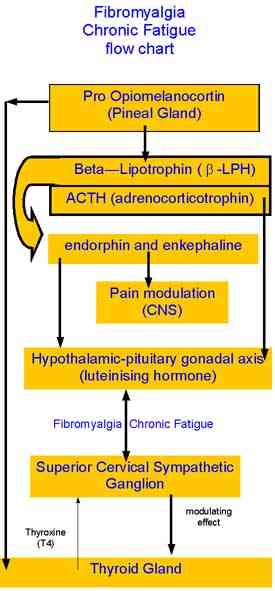
Interestingly, research which I undertook in 1992-93, examined the influence of the hypothalamus and the peripheral sympathetic nervous system on fibromyalgia, chronically over-exercised and repeatedly injured female elite athletes. What was exceedingly interesting were the interactions with luteinising and follicle stimulating hormone and immune system. Clinically, these athletes (orienteers, x-country skiers and distance runners) suffered from eating disorders, osteoporosis, dysmenorrhea, late menarche, and were frequently ill with skin infections and upper respiratory infections. Paucity of research on the hypothalamus, at the time and even contemporarily in humans, due to the technical nature of research in this region, means that the majority of investigations are still done in rodents. More recently, leptin, glucose and glut-2 astrocyte and neuron (related to glut-4 muscle) receptors, and neuropeptide Y (NPY) were found to be involved in a complex interaction around the arcuate nucleus (ARC), related to transcriptional regulation of motivated exercise (Good et al 2020, Ex Sp Sc Rev, 48, 2, 74-82). These areas happen to be also related to taste and smell (olfaction), which coincidentally the loss of, is one of the symptoms related to COVID-19. The olfactory system has been used as a conduit for drug and homeopathic administration, directly into the central nervous system (CNS), as there is no blood brain barrier or blood nerve barrier here. New genetically engineered biotechnology products, such as recombinant human nerve growth factor, human VEGF, and interferons, are now possible to be delivered into the brain from the non-invasive intranasal route. For gene therapy, intranasal route is also a promising alternative method to deliver plasmid DNA to the brain. Additionally, anti-biotics are also being trialled via nasal delivery in COVID-19 patients. Insulin nasal delivery has also been approved by the FDA using a methodology originally developed by (my uncle-in-law) Eric Bechgaard of Denmark (https://www.sciencedirect.com/science/article/pii/0378517395043152), Interested readers of this modality should see https://www.ncbi.nlm.nih.gov/pubmed/21712015 for a review..
It would appear that the same area of the brain relating to eating is also related to initiation or continuation of exercise, at least in rodents. Leptin levels are reduced 1-3 hours after exercise such as running (Zheng et al 1996, Biochem biophys Res Commun, 225, 3, 747-750). In rodents, injecting an expression vector for Leptin receptors increased home cage activity . A wild type mouse had significant reduction in weight using a similar methodology (Coppari et al 2005, Cell Metabol, 1,1, 63-72). Furthermore, it's not just a simple glucose or leptin-sensing mechanism by hypothalamic neurones, but a series of inter-connecting neurones, astrocytes, integrated receptors, adenosine triphospahate (ATP) synthesis and sodium sensing within the brain. Importantly, however, these incredibly complex, areas may also exert an influence, directly or indirectly, on the immune-inflammatory axis, through it's action on muscles, which affects overall health and susceptibility to disease.

Importantly, a (un)healthy relationship exists between weight and susceptibility to disease. The review by Good et al (2020) stipulates that it's the flux of leptin, rather than the absolute levels of leptin, which is sensed by the LepR POMC neurones, whereby an increase in leptin levels may signal the need to exercise, so as to remove excess available energy. Specifically, transcriptional gene regulation downstream of the neuronal basic helix-loop-helix transcription factor nascent helix-loop-helix transcription factor nascent-loop-helix 2 (NHLH2/humans, Nhlh2/mouse) in POMC neurones, drives motivation to exercise by increasing melanocortinergic and dopaminergic tone in the hypothalamus and extrahypothalamic brain regions.
Leptin, diabetes and exercise
Researchers, using a diabetic mouse model, have demonstrated that decreased leptin, MCP-1, and resistin levels were observed in diabetic mice after moderate exercise training compared with the non-exercised group. Leptin, MCP-1, and resistin levels in diabetic mice+Ex mice were 8.6, 75, and 39% lower, respectively, compared with diabetic mice without exercise training (Liu & Chang 2018, Front Physiol. 9, 636).
Monocyte chemoattractant protein-1 (MCP-1/CCL2) is one of the key chemokines that regulate migration and infiltration of monocytes/macrophages. Both CCL2 and its receptor CCR2 have been demonstrated to be induced and involved in various diseases, including fibrosis, arthrosclerosis and systemic inflammation such as psoriasis. Migration of monocytes from the blood stream across the vascular endothelium is required for routine immunological surveillance of tissues, as well as in response to inflammation. Moreover, a metabolic role involves adipocytes secreting various adipokines that may be involved in the negative cross-talk between adipose tissue and skeletal muscle. CCL2 impairs insulin signalling in skeletal muscle cells via ERK1/2 activation at doses similar to its physiological plasma concentrations (200 pg/mL), but interestingly, does not involve activation of the NF-κB pathway. CCL2 significantly reduced insulin-stimulated glucose uptake in myocytes. CCL2 may represent a molecular link in the negative cross-talk between adipose tissue and skeletal muscle assigning a completely novel important role to CCL2 besides inflammation (Sell H et al 2006 Endocrinology. 147, 5, 2458–67Endocrinology. 147, 5, 2458–67).
Leptin and diet
The first time I heard about leptin was in the mid 90's and it was described as a hormone produced by fat cells. Certain foods stimulate leptin sensitivity (vs leptin resistance and weight gain). These include
- Apples. Research has shown pectin—as found in apples—may be effective in fighting back leptin resistance.
- Oatmeal. Rich in fibre and known for decreasing insulin levels, oatmeal can help prevent that “starving” feeling.
- Lean proteins. The protein you get in turkey, chicken, and other lean meats can help to raise your metabolism and reduce leptin resistance. The same with fish, a top choice for battling leptin resistance.
- Green tea. A European study involving mice showed that green tea is effective in decreasing leptin resistance.
- Almonds. Besides the essential “healthy” fats, fibre, and protein you get from almonds, you also get essential fatty acids that boost metabolism and leptin sensitivity.
- Broccoli. Also thought to decrease your leptin resistance is broccoli, a vegetable that’s generous in calcium and vitamin C.
- Eggs. Known for their vitamin B12 and protein contributions, eggs can lift your metabolism and help keep you from becoming leptin-resistant.
Generally speaking, keep fruits and vegetables front and centre at your meals. Top choices: grapefruit, watermelon, pears, and blueberries along with purple sweet potatoes, peppers, lettuce, carrots, and zucchini.
Exposure
"Currently, the greatest risk of COVID-19 infection is exposure. It is paramount that we find creative ways to exercise while maintaining social distancing and proper hygienic countermeasures. While exercise may not prevent us from becoming infected if exposed, it is likely that keeping active will boost our immune system to help minimize the deleterious effects of the virus, ameliorate our symptoms, expedite our recovery times and lower the likelihood that we can infect others with whom we come into contact. This is merely my intuition, but I do expect a large body of exercise immunology research to follow after this pandemic so that we can provide more specific exercise recommendations as they pertain to infection risk and control in both healthy and clinical populations." (Richard J. Simpson, Ph.D., FACSM Mar 30, 2020)
Low Back Pain, lumbo-pelvic movements and sample entropy
An interesting article was published in 2022. For many years, it has been observed that people with chronic low back pain (LBP) have less perturbations of movement. There was the famous investigation in the 1980's, where people standing still with a WW1 German spiked helmet on their head, seemed to sway less when suffering chronic LBP. Clinically, it has been observed that chronic LBP is frequently associated with loss of ranges of motion (degrees of freedom). Thiry P et al (2022, Entropy, 24, 437, https://doi.org/10.3390/e24040437) demonstrated lack of randomness (entropy), of lumbo-pelvic movements, in a 70 seconds 'touch the stool' test, in people with LBP. Moreover, this lack of variability can persist, even after the cessation of LBP. It is thought that this smaller amplitude and less variability of the instantaneous centre of rotation results in a potential overloading of certain structures and underloading of others, creating disuse atrophy or overuse trauma. So, in the presence of CLBP, the aims of therapy would be to ascertain movement restrictions, ameliorate those, introduce oscillatory mobilisations and exercise techniques with increasing amplitude, displacement and ultimately variability.
Musculoskeletal Physiotherapy in the recovery from injury
Previously, we discussed game theory in terms of adding resources to the VMO through FES (functional electrical stimulation) to moderate anterior knee pain and regain quadriceps cortical representation and function. We also described the need to stress the system to induce the change needed to improve immune health. Those stressors may, if they cross the threshold from functional to dysfunctional at times, need to be managed,. The latter inducing pain, which if it persists, results in clinical or sub-clinical inflammation, thereby creating an immune compromised states. Obvious everyday signs of this are frailty and obesity. Clinically, traditional Manipulative Physiotherapy (now called Musculoskeletal Physiotherapy) used a multitude of questions from the cognitive domain to ascertain a persons dysfunction. Parameters included the stage (temporal), stability (current or past history of ease of recurrence), irritability (time to worsen vs time to ease) and severity (how disabling). Intrinsic to questioning, was establishing a persons normal baseline of activity w.r.t. their age and wellness level, and calibrating that degree pf loading to questions on the triggers of their pain and dysfunction. Multidimensional reasoning on ascertaining perturbations or 'outliers' to an expectation of this persons and the average persons functional capacity, health and physical as well as mental well being. Once, these 'outliers' are correlated into a clinical picture, a reductionist approach to treatment, exercise prescription and goal setting can be achieved within the construct of the persons expectations, values and beliefs. The 'outliers' of the subjective examination are correlated with the 'outliers' of the physical examination. For clinicians, the 'noise' is the average, the 'fidelity' are the answers we receive from the inductive and deductive reasoning. Knowledge is strength.

Physiotherapists, Exercise and Sports Scientists, Team managers and Trainers should have the confidence in their construct validity by incorporating their knowledge of the immune system, 'outliers', game theory and deterministic chaos into their treatment, rehabilitation, training regimes and sporting strategies, using a multi-modal reasoning approach.

Conclusion
Does exercise create a chaotic environment which stimulates and tunes the immune system? I have argued that it does, based on the muscle itself being an endocrine organ, in which multiple immune reactions occur and from which there is an interaction with multiple organs, including the brain, gut, thymus and liver. Additionally, intrinsic to exercise is the use of the lungs, which in essence is an immune interface with pathogens from the outside world. Where does chaos fit in? Chaos could be considered the non-harmonic perturbations of an oscillatory or regulatory system. A system of ratios, higher 'fidelity' as the magnification of the ratios, where perturbations of cytokines creates oscillations and new states of homeostasis through modal jumps. These oscillatory systems also include those of the second law of thermodynamics, motor and metabolic control. Paradoxes exist which allow the seemingly random fluctuation of a homeostatic system. Exercise can be deemed to be an easy tool for us to use in order to push the boundaries of these fluctuations, in order to set the reference points for a dynamic damping mechanism. The greater the fluctuation, the greater the damping needed. Importantly, in any damping system, over-shooting and over-oscillating need greater damping, which could include sound professional advice from physiotherapists and trainers. This may include advice on types of training (eccentric vs concentric, metabolic {oxidative vs glycolytic}), rest, avoidance of over-training, good and varied diet as well as mental strategies for a calm cognitive - psychological state are of paramount importance in the application and dampening of stressors. Moreover, hands on therapy may be required if injury were to occur. Most importantly, exercise can be seen to stimulate muscle, one of the largest organs of the immune system. In such a sense, prophylactic exercising of muscles, makes this strategy an inoculation against immune challenges both now and in the future.
In this age of COVID-19, a great opportunity has arisen where people working from home may more easily exercise. Moreover, whilst in shut down it is even more important to exercise, and if the possibility arises walk, run or ride to work, thereby incorporating exercise and deterministic chaos into your daily routine, whilst avoiding confined spaces such as public transport. However, bear in mind that the trip to work shouldn't be exhaustive, as that can lead to immune compromise, for several hours after the cessation of exercise.
Justification
This article was adapted from a key note guest presentation I made at a conference in Rome in 2005, as well as Post Graduate research on neuro-immune-inflammation in Low Back Pain from 1995, an under-graduate research topic on Bernsteins perspective of motor control and linear oscillatory systems to control degrees of freedom from 1986, inverse dynamics and the Hill model of the mass-spring spring cycle and thermodynamics in calf-achilles problems from 2008, and research into Orienteering on a motor-immune-cognitive control hypothesis from 1998, as well as reading on non-linear dynamics and chaos since 1992. I wrote it, in response to the pandemic, but also as a conceptual framework on which I wish people build deterministic chaos theory into their reasons for motivation to train the mental and physical well being. Hopefully, physiotherapeutic interventions incorporate game theory of 'doves & hawks' into their thinking whilst, bearing in mind that muscle is an endocrine organ of the immune system, with a gut, lung and brain axis.
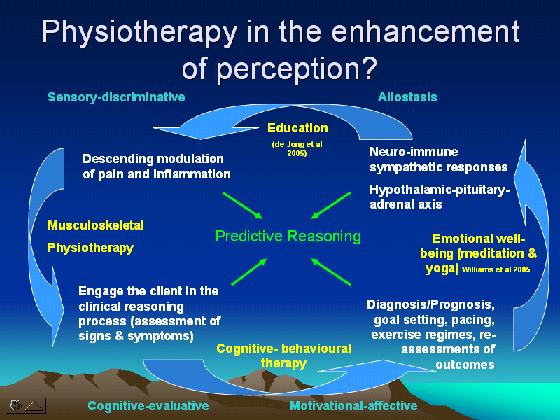
Stay well, stay safe, support yourself, your family and your community
Martin Krause April - May 2020
References
References can be found within this text and in the original papers published in 1986, 1995, 1998, 2003, 2005 and 2008 and found here elsewhere on this site :
- Sarcopenia and the immune system : https://www.back-in-business-physiotherapy.com/we-treat/exercise-muscle-mass.html
- Pain and inflammation : https://www.back-in-business-physiotherapy.com/pain-and-inflammation.html
- Inverse Dynamics and Hill model of mass spring system : https://www.back-in-business-physiotherapy.com/we-treat/achilles-tendonosis.html
- Degrees of freedom and Bernsteins concept of motor control using a linear oscillatory system : https://www.back-in-business-physiotherapy.com/shoulder.html
- Orienteering, motor control and the immune system (uncontrolled manifold hypothesis) : https://www.back-in-business-physiotherapy.com/sports-performance/orienteering.html
- Endurance Training : https://www.back-in-business-physiotherapy.com/endurance-training.html
Updated :26 November 2023




